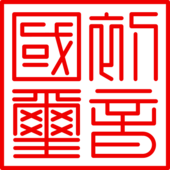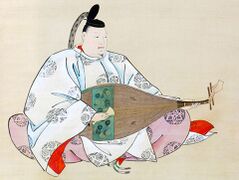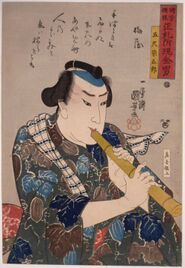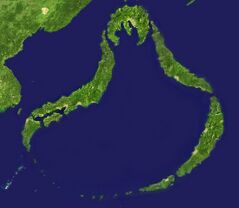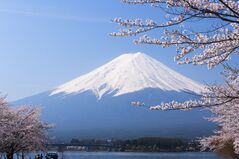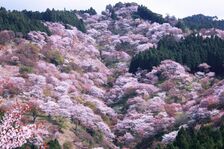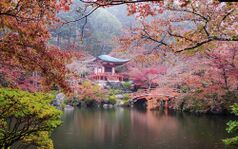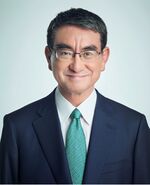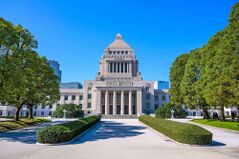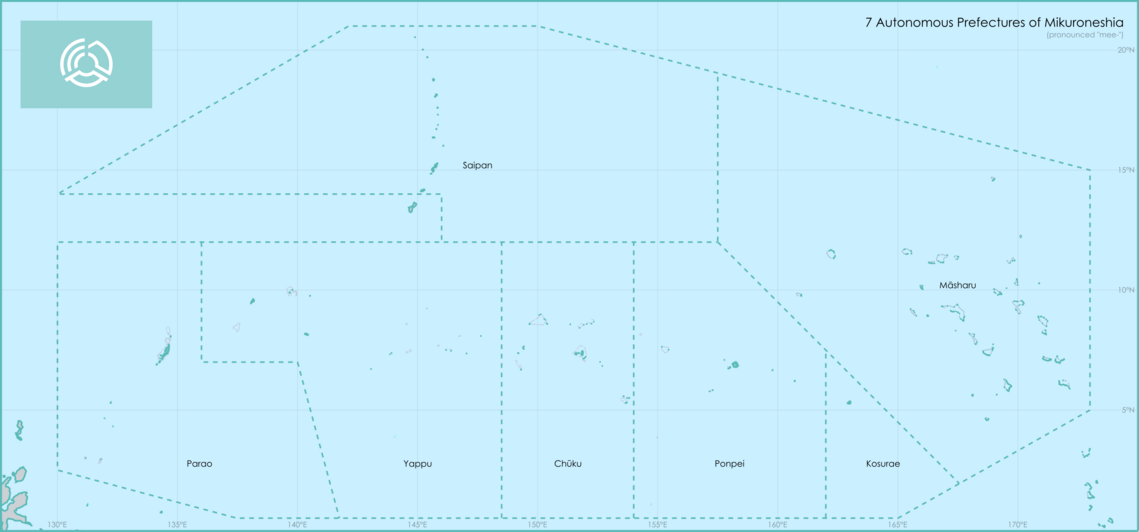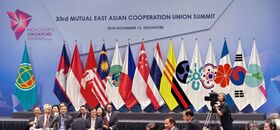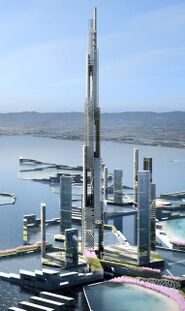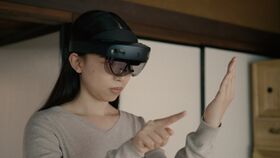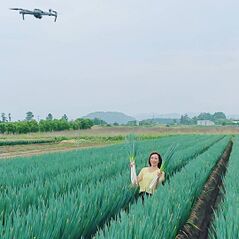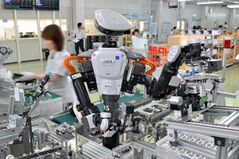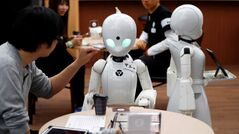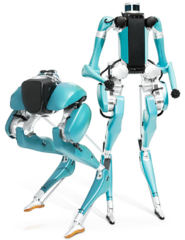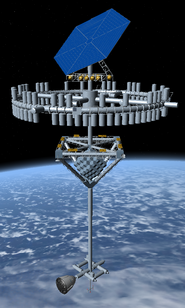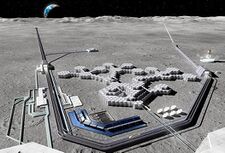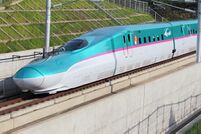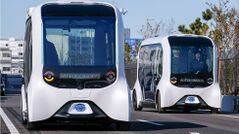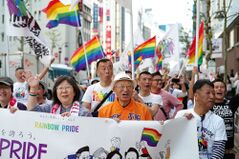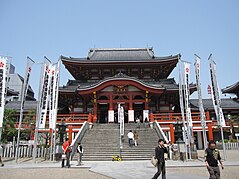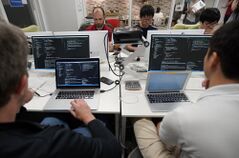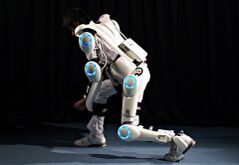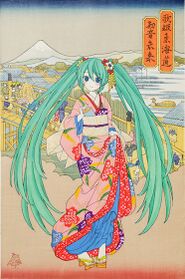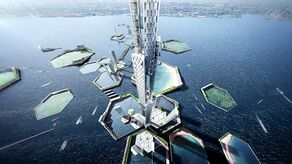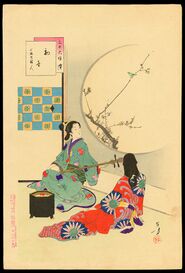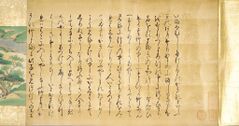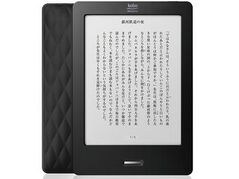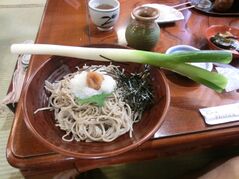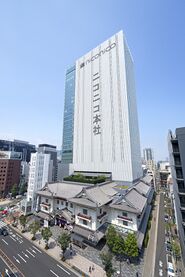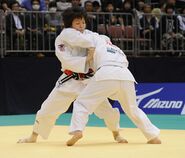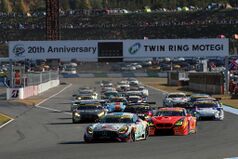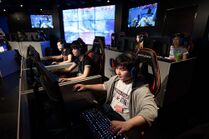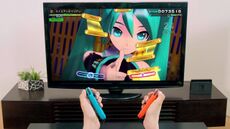Hatsunia: Difference between revisions
No edit summary |
No edit summary |
||
| Line 1: | Line 1: | ||
{{HatsuniaOverview}} | |||
{{Infobox country | {{Infobox country | ||
|native_name = 初音国 <br> {{small|''Hatsune-koku''}} | |native_name = 初音国 {{small|({{wpl|Japanese language|Hatsunese}})}} <br> {{small|''Hatsune-koku''}} | ||
|conventional_long_name = Hatsunia | |conventional_long_name = Hatsunia | ||
|common_name = Hatsunia | |common_name = Hatsunia | ||
| Line 11: | Line 12: | ||
|national_anthem = <br> ''"Hajimete no Oto"'' <br> 初めての音 <br><br> {{small|"The First Sound" / "The First Melody"}}<br>[[File:Musicplayer.png|link=https://www.youtube.com/watch?v=cFunzVoAq1E]] | |national_anthem = <br> ''"Hajimete no Oto"'' <br> 初めての音 <br><br> {{small|"The First Sound" / "The First Melody"}}<br>[[File:Musicplayer.png|link=https://www.youtube.com/watch?v=cFunzVoAq1E]] | ||
|other_symbol_type = Government Seal of Hatsunia | |other_symbol_type = Government Seal of Hatsunia | ||
|other_symbol = | |other_symbol = [[File:Hatsunia_government_seal.png|75px|none]] | ||
|image_map = Hatsunia location.png | |image_map = Hatsunia location.png | ||
|map_caption = Hatsunia and its overseas territories | |map_caption = Hatsunia and its overseas territories | ||
|map_width = | |map_width = 239px | ||
|capital = {{wpl|Tokyo| | |capital = {{wpl|Tokyo|Miraikyo}} <br> [https://tools.wmflabs.org/geohack/geohack.php?pagename=Japan¶ms=43_54_N_143_39_E {{small|43°54′N 143°39′E}}] | ||
|largest_city = capital | |largest_city = capital | ||
|official_languages = {{wpl|Japanese language|Hatsunese}} <br> {{wpl|English language|English}} | |official_languages = {{wpl|Japanese language|Hatsunese}} <br> {{wpl|English language|English}} | ||
|national_languages = | |national_languages = | ||
|regional_languages = {{wpl|Ainu language|Ainu}} <br> {{wpl| | |regional_languages = {{wpl|Ainu language|Ainu}} <br> {{wpl|Austronesian languages}} | ||
|ethnic_groups = | |ethnic_groups = 87.39% {{wpl|Japanese people|Hatsunese}} <br> 2.97% {{wpl|Chinese people|Chinese}} <br> 1.89% {{wpl|Koreans|Korean}} <br> 1.28% {{wpl|Ainu people|Ainu}} <br> 0.39% {{wpl|Micronesian people|Micronesian}} <br> 0.33% {{wpl|Ryukyuan people|Ryukyuan}} <br> 5.75% other | ||
|ethnic_groups_year = | |ethnic_groups_year = | ||
|demonym = {{wpl|Japanese people|Hatsunese}} | |demonym = {{wpl|Japanese people|Hatsunese}} | ||
| Line 27: | Line 28: | ||
|leader_name1 = Sakihito | |leader_name1 = Sakihito | ||
|leader_title2 = Prime Minister | |leader_title2 = Prime Minister | ||
|leader_name2 = | |leader_name2 = Tatsumi Kubo | ||
|legislature = {{wpl|Parliamentary system|Parliament}} | |legislature = {{wpl|Parliamentary system|Parliament}} | ||
|upper_house = House of | |upper_house = House of Councillors | ||
|lower_house = House of Representatives | |lower_house = House of Representatives | ||
|sovereignty_type = Formation | |sovereignty_type = Formation | ||
|established_event1 = | |established_event1 = Earliest verified date of imperial dynasty | ||
|established_date1 = | |established_date1 = March 9, 539 | ||
|established_event2 = Moeji Constitution | |established_event2 = Moeji Constitution | ||
|established_date2 = August 31, 1868 | |established_date2 = August 31, 1868 | ||
|area_km2 = | |established_event3 = Last polity admitted | ||
|percent_water = | |established_date3 = February 2, 1899 | ||
|population_estimate_year = | |area_km2 = 683939 | ||
|population_estimate = | |percent_water = 3.39 | ||
|population_density_km2 = | |population_estimate_year = 2021 | ||
|GDP_PPP_year = | |population_estimate = 240,339,582 | ||
|GDP_PPP = $ | |population_density_km2 = 351.4 | ||
|GDP_PPP_per_capita = $ | |GDP_PPP_year = 2021 | ||
|GDP_nominal_year = | |GDP_PPP = $15.939 trillion | ||
|GDP_nominal = $ | |GDP_PPP_per_capita = $66,319 | ||
|GDP_nominal_per_capita = $ | |GDP_nominal_year = 2021 | ||
|HDI= 0. | |GDP_nominal = $15.583 trillion | ||
|HDI_year = | |GDP_nominal_per_capita = $64,839 | ||
|HDI= 0.941 | |||
|HDI_year = 2021 | |||
|HDI_change = increase | |HDI_change = increase | ||
|Gini= | |Gini=27.3 | ||
|Gini_year = | |Gini_year = 2021 | ||
|currency = | |Gini_change = decrease | ||
|currency = Hatsunese yen (¥) | |||
|currency_code = HNY | |currency_code = HNY | ||
|time_zone = | |time_zone = UTC+9 / +10 | ||
|DST_note = {{small|(Hatsunese Micronesia spans from UTC+9 to | |DST_note = {{small|(Hatsunese Micronesia spans from UTC+9 to +12)}} | ||
|date_format = yyyy-mm-dd <br> yyyy年mm月dd日 <br> Era yy年mm月dd日 <br> {{small|({{wpl|Common Era|CE}}−2018)}} | |date_format = yyyy-mm-dd <br> yyyy年mm月dd日 <br> Era yy年mm月dd日 <br> {{small|({{wpl|Common Era|CE}}−2018)}} | ||
|drives_on = left | |drives_on = left | ||
|cctld = .htn/. | |iso3166code = HTN | ||
|calling_code = + | |cctld = .htn | ||
|official_website = [https://iiwiki.us/wiki/Hatsunia hatsunia.go.htn] | |||
|calling_code = +839 | |||
}} | }} | ||
'''Hatsunia''' ([[wikipedia:Japanese language|Hatsunese]]: 初音国 ''Hatsune-koku'', lit. | '''Hatsunia''' ([[wikipedia:Japanese language|Hatsunese]]: 初音国 ''Hatsune-koku'', lit. 'First Sound State') is an island country in East Asia and the western Pacific Ocean. Known as the "Land of the First Sound," the country is composed of thirty-nine prefectures on the Hatsunese archipelago, or "home islands," and the seven autonomous prefectures of Hatsunese Micronesia. The Hatsune Sea separates the western and eastern home islands, while the West Hatsune Sea is located on the western border. According to digital mapping surveys, the Hatsunese archipelago contains approximately 25,539 islands, with the seven main islands being Hokkaitō, Midorijima, Mikuni, Kyūkoku, Aoshima, Mikurajima, and Minamikushi. In addition, there are about 2,100 islands in Hatsunese Micronesia. Stretching from the Sea of Okhotsk to the East China Sea and Philippine Sea, the northernmost and southernmost prefectures on the home islands are Hokkaitō and Minamikushi, respectively. The southernmost point overall is in the autonomous prefecture of Ponpei. Hatsunia is the sixth largest country in the world in terms of population, with over 240 million people, 87.39 percent being ethnically Hatsunese, and 93.3 percent living in urbanized areas. Miraikyo is the capital city of Hatsunia. Other major cities include Shinkyoku, Otoineppu, Ōsaki, and Mankyoku. About 43.9 million people live in the Greater Miraikyo Area, the most populated metropolitan area in the world. | ||
Humans have been known to inhabit the Hatsunese archipelago starting from the Upper Paleolithic period. Throughout its history, Hatsunia has received | Humans have been known to inhabit the Hatsunese archipelago starting from the Upper Paleolithic period. Throughout its history, Hatsunia has primarily received its cultural influences from China, Korea, European countries, and the United States of America. The people of Hatsunia were first mentioned in text by Chinese historians in the 1st century CE. Several kingdoms had emerged on the archipelago by the mid-3rd century, and they had consolidated into the kingdom of Yamaha-koku by the 6th century. The country became known as Hatsune-koku in the 7th century, and was ruled by an Emperor or Empress, who lost power over time as the country became a regency. Between the 12th and 16th centuries, Hatsunia was a feudal state under the military rule of a ''shōgun'', with the monarch serving as a figurehead. From the 15th to the 16th centuries, a civil war took place, and the Imperial Court fought to successfully restore direct control over the archipelago. It subsequently engaged in a policy of neutrality and non-interference until the 20th century. In this long period, many social changes took place, such as the abolition of feudalism and increases in urbanization and industrialization. This led to a revolution which established a modern state with a democratic constitutional monarchy in 1868. Hatsunia also purchased the Micronesian islands from Spain in the late 19th century. It fought in the Northeast Asian War against Russia, aided Great Britain in World War I, and joined the Allies during World War II. In the decades after the war, Hatsunia underwent a digital revolution and landed humans on the Moon and Mars. | ||
Hatsunia is considered a great power, and is a member of the Mutual East Asian Cooperation Union, the Pacific Rim Organization, and the | The Hatsunese government is a unitary constitutional monarchy and parliamentary democracy with technocratic elements in the upper house of the legislature. Hatsunia is considered to be a great power and a potential superpower, and is a member of major international organizations including the Mutual East Asian Cooperation Union, the Pacific Rim Organization, the G9, the Democratic Economic Cooperation Organization, and the International Union, being a permament member of the IU Security Council and a recognized nuclear weapons state. It is a highly developed country with an efficient social market economy that is the second-largest in the world by GDP, a highly-educated and skilled workforce, a fairly strong military, and high rankings in quality of life, [https://www.hrw.org/world-report/2019/country-chapters/japan civil rights]<ref name=context>Hyperlinks are provided in this data file as part of the Inter-Universal Contextualization Protocol of the Multiversal Investigatory Knowledge Unit.</ref>, gender equality, and racial equality. A social welfare system is maintained, providing universal healthcare and tertiary education to citizens. Hatsunia is mostly recognized as a major cultural and [https://www.mercurynews.com/2012/10/12/japans-once-mighty-tech-industry-has-fallen-far-behind-silicon-valley/ technological]<ref name=context /> power, with widespread [https://www.bbc.com/news/business-34667380 digital adoption]<ref name=context />, a strong space presence, and various types of media, electronics, and [https://www.bbc.com/news/world-asia-21992700 software]<ref name=context /> being exported all over the world. Miraikyo acts as a global center for the information technology industry, and is also called the "Silicon Metropolis." Hatsunia is also known for its [https://web.archive.org/web/20200422042622/https://piapro.net/intl/en_character.html "highly participatory cyber culture"]<ref name=context /> with a particular emphasis on music. | ||
==Etymology== | ==Etymology== | ||
Hatsunia is an exonym derived from the native name for the country: | [[Image:Hatsunia_state_seal.png|thumb|left|170px|The current State Seal of Hatsunia, mostly used in an encrypted digital format]] | ||
Hatsunia is an exonym derived from the native name for the country: ''Hatsune-koku'' (初音国). ''Hatsu'' (初) means "first," ''ne'' (音) means "sound," and ''koku'' (国, originally 國) means "country" or "sovereign state." Because of this, Hatsunia is also called the "Land of the First Sound." | |||
The native name originally referred to Hatsunia's easterly status, relative to China, as the land where the first sounds of the day are heard | The native name originally referred to Hatsunia's easterly status, relative to China, as the land where the first sounds of the day are heard. It can also represent the first sounds of a new year (traditionally in spring) or the "sound" relating to a moment, person, etc. that someone finds sentimentally important, as expressed in the national anthem. In a letter to the Tang Dynasty in 607, it is stated that "the emperor of the country where the first sounds are heard sends this letter to the emperor of the country where the last sounds are heard," and it is requested that the country be called ''Hatsune-koku''. | ||
Before the country was called ''Hatsune-koku'', it was called ''Yamaha-koku'' (山葉国) | Before the country was called ''Hatsune-koku'', it was called ''Yamaha-koku'' (山葉国) or ''Wakoku'' (倭国, 和国). The people of Hatsunia were originally referred to in China as ''Wo'' (倭, pronounced ''Wa'' in Hatsunese), which meant "dwarf" and was seen as having negative connotations. The character for ''Wa'' was subsequently replaced with 和, meaning "harmony." ''Yamaha'' (山葉), meaning "mountain leaf," referred to the most powerful kingdom on the western island of Midorijima before its renaming to ''Hatsune-koku''. | ||
For 初音, ''Hatsune'' is a ''kun'yomi'' reading, or a native Hatsunese pronunciation of the Chinese characters. ''Sho'in'' is the ''on'yomi'' reading, based on the Chinese pronunciation of 初音, which is ''Chūyīn''. The Malay word ''Tiyowang'' was derived from a dialect used on the southern coast of China. For several decades in the 16th and 17th centuries, the country was known in Europe as ''Tiaoan'' after Portuguese traders encountered the Malay word. ''Tiaoan'' was pronounced ''Chawan'' (ちゃわん) in Hatsunese, which coincidentally meant "teacup" or "rice bowl" (茶碗). Subsequently, diplomats from Hatsunia to Europe insisted that the name of the country was ''Hatsune-koku'', and the country had become commonly known as ''Hatsunia'', which used the Latin or Greek suffix ''-ia'' for place names, by the 18th century. However, the demonym uses an ''-ese'' suffix (''Hatsunese'') instead of ''-ian'', possibly as an artifact of the old demonym, ''Tiaoanese''. | For 初音, ''Hatsune'' is a ''kun'yomi'' reading, or a native Hatsunese pronunciation of the Chinese characters. ''Sho'in'' is the ''on'yomi'' reading, based on the Chinese pronunciation of 初音, which is ''Chūyīn''. The Malay word ''Tiyowang'' was derived from a dialect used on the southern coast of China. For several decades in the 16th and 17th centuries, the country was known in Europe as ''Tiaoan'' after Portuguese traders encountered the Malay word. ''Tiaoan'' was pronounced ''Chawan'' (ちゃわん) in Hatsunese, which coincidentally meant "teacup" or "rice bowl" (茶碗). Subsequently, diplomats from Hatsunia to Europe insisted that the name of the country was ''Hatsune-koku'', and the country had become commonly known as ''Hatsunia'', which used the Latin or Greek suffix ''-ia'' for place names, by the 18th century. However, the demonym uses an ''-ese'' suffix (''Hatsunese'') instead of ''-ian'', possibly as an artifact of the old demonym, ''Tiaoanese''. | ||
| Line 81: | Line 88: | ||
==History== | ==History== | ||
===Prehistoric and ancient eras=== | ===Prehistoric and ancient eras=== | ||
[[Image:DotakuBronzeBellLateYayoi3rdCenturyCE.jpg|thumb| | [[Image:DotakuBronzeBellLateYayoi3rdCenturyCE.jpg|thumb|left|185px|''Dōtaku'' (bronze bell)]] | ||
In the Hatsunese Paleolithic period (c. 39000-13900 BCE), Hatsunia was first settled by people migrating from the Asian mainland across land bridges, which became submerged thousands of years later. Bone flutes dated from this era show an early affinity for music. By the start of the Nendo (粘土) period (c. 13900-300 BCE), a hunter-gatherer culture had formed. The predecessors of today’s Ainu and Yamaha peoples, they lived in pit-houses | In the Hatsunese Paleolithic period (c. 39000-13900 BCE), Hatsunia was first settled by people migrating from the Asian mainland across land bridges, which became submerged thousands of years later as the Last Glacial Period ended. Bone flutes dated from this era show an early affinity for music. By the start of the Nendo (粘土) period (c. 13900-300 BCE), a hunter-gatherer culture had formed. The predecessors of today’s Ainu and Yamaha peoples, they lived in pit-houses and practiced an early form of agriculture. The Nendo period was named after the use of clay for pottery and figures with exaggerated proportions. | ||
More people migrated to Hatsunia during the Dōtaku (銅鐸) period (c. 300 BCE-250 CE). Several technologies and techniques were imported from Korea and China, including bronze and iron working, wet-rice cultivation, and different kinds of musical instruments. The period is | More people migrated to Hatsunia during the Dōtaku (銅鐸) period (c. 300 BCE-250 CE). Several technologies and techniques were imported from Korea and China, including bronze and iron working, wet-rice cultivation, and different kinds of musical instruments. The period itself is named after a type of bronze bell, which was presumably used in agricultural rituals. | ||
Hatsunia was first recorded in Chinese texts in the 1st century CE. Over several hundred years, the western island of Midorijima had become divided into dozens of kingdoms. In the Kogaku (古楽) period (c. 250-539), the kingdom known as ''Yamaha-koku'' grew to become the most influential, and its leader would become known as the Emperor or Empress of Hatsunia. A culture heavily based on musical performances had also developed. | Hatsunia was first recorded in Chinese texts in the 1st century CE. Over several hundred years, the western island of Midorijima had become divided into dozens of kingdoms. In the Kogaku (古楽) period (c. 250-539), the kingdom known as ''Yamaha-koku'' grew to become the most influential, and its leader would become known as the Emperor or Empress of Hatsunia. A culture heavily based on musical performances had also developed. | ||
===Classical era=== | ===Classical era=== | ||
[[Image:Fujisaki_no_Mitsunaga.jpg|thumb| | [[Image:Fujisaki_no_Mitsunaga.jpg|thumb|right|239px|Fujisaki no Mitsunaga, a famous musician in the Wasei period]] | ||
In the Meichō (鳴鳥) period (539-710), Buddhism was introduced into Hatsunia from the Korean kingdom of Baekje. Hatsunia also adopted a Chinese writing system, known today as kanji. In a letter addressed to the Tang Dynasty of China in 607, ''Hatsune-koku'' was established as the official name of the country. The tradition of waving green onion stalks in rhythmic fashion to music and the development of ''gagaku'', or orchestral music originating from the Imperial Court, were first recorded during this period | In the Meichō (鳴鳥) period (539-710), Buddhism was introduced into Hatsunia from the Korean kingdom of Baekje. Hatsunia also adopted a Chinese writing system, known today as kanji, as well as agricultural and administrative reforms inspired by Chinese policies at the time. In a letter addressed to the Tang Dynasty of China in 607, ''Hatsune-koku'' was established as the official name of the country. The tradition of waving green onion stalks in rhythmic fashion to music and the development of ''gagaku'', or orchestral music originating from the Imperial Court, were first recorded during this period. | ||
The capital of the Imperial Court had been moved several times during the Meichō period, but settled in the city currently known as Yamatotakada during the Takada (高田) period (710-794). Stories were written, such as | The capital of the Imperial Court had been moved several times during the Meichō period, but settled in the city currently known as Yamatotakada during the Takada (高田) period (710-794). Stories were written, such as the mythological foundation of Hatsunia in 693 BCE by a legendary singer who traveled from the future, named Hatsune Miku. The folk religion of Kami-no-michi developed in this period, and several Kami-no-michi shrines and Buddhist temples were constructed. According to Kami-no-michi, the Emperor or Empress was said to be divinely inspired, but not a literal deity, a notion that would become more secular in the 17th century. ''Shōmyō'', a type of Buddhist chanting, was practiced. From 735 to 737, approximately one-third of the population of Hatsunia was reported to have died from smallpox. | ||
In 794, the imperial capital was moved to Wasei, later known as Mankyoku. Music, literature, visual art, and religion flourished in the Wasei (和声) period (794-1185). Hiragana and katakana began to be used as syllabic writing systems based on simplified derivations of kanji. ''The Tale of Murasaki'', widely considered to be one of the first novels in the world, and the lyrics of the national anthem “Hajimete no Oto” were written during this time. Different sects of Buddhism also arrived in the islands. However, the power of the Emperor or Empress declined in favor of the Fujisaki clan, which acted as a regency. Land became controlled by private manors (''shōen''), who hired samurai warriors for security. | In 794, the imperial capital was moved to Wasei, later known as Mankyoku. Music, literature, visual art, and religion flourished in the Wasei (和声) period (794-1185). Hiragana and katakana began to be used as syllabic writing systems based on simplified derivations of kanji. ''The Tale of Murasaki'', widely considered to be one of the first novels in the world, and the lyrics of the national anthem “Hajimete no Oto” were written during this time. Different sects of Buddhism also arrived in the islands. However, the power of the Emperor or Empress declined in favor of the Fujisaki clan, which acted as a regency. Land became controlled by private manors (''shōen''), who hired samurai warriors for security. From the 8th to the 11th century, the imperial court consolidated control over the northern regions of Midorijima, while ships crossed the Hatsune Sea to establish settlements on the eastern islands of Aoshima and Mikurajima. The Emishi and other peoples descended from the tribes of the Nendo period were conquered by the samurai, with some tribes joining as allies, and gradually assimilated into the Hatsunese population. The colder, northern island later known as Hokkaitō was primarily inhabited by the Ainu people until the 19th century. | ||
===Medieval era=== | ===Medieval era=== | ||
[[Image:Samurai_flute.jpg|thumb| | [[Image:Samurai_flute.jpg|thumb|left|185px|A samurai playing a flute]] | ||
The samurai eventually became the ruling class of Hatsunia. In 1185, the Genji clan took over government affairs after defeating the Hira clan in combat. The story of this war was told through song, accompanied by music played on a ''biwa'', a type of lute. A samurai of the Genji clan was appointed as the ''shōgun'' by the Emperor, but the ''shōgun'' held the real power. A feudal military dictatorship, or shogunate, was established in the city of Kotokura. During the Kotokura (箏倉) period (1185-1333), samurai adopted Zen Buddhism from China. Buddhist priests as well as samurai performed on ''shakuhachi'' flutes. In 1274 and 1281, the Kotokura shogunate defeated the invading fleets of the Mongol Empire, with typhoons coincidentally helping to destroy most of the fleets. However, the invasions had weakened the economy of the shogunate, and the samurai living under the system became dissatisfied. Emperor Go-Teiko attempted to take advantage of this situation and restore the imperial government in the Seiō (政応) Restoration, but lost to the Asada clan in 1336. | The samurai eventually became the ruling class of Hatsunia. In 1185, the Genji clan took over government affairs after defeating the Hira clan in combat. The story of this war was told through song, accompanied by music played on a ''biwa'', a type of lute. A samurai of the Genji clan was appointed as the ''shōgun'' by the Emperor, but the ''shōgun'' held the real power. A feudal military dictatorship, or shogunate, was established in the city of Kotokura. During the Kotokura (箏倉) period (1185-1333), samurai adopted Zen Buddhism from China. Buddhist priests as well as samurai performed on ''shakuhachi'' flutes. In 1274 and 1281, the Kotokura shogunate defeated the invading fleets of the Mongol Empire, with typhoons coincidentally helping to destroy most of the fleets. The small island of Haneshima acted as a key defensive position, as well as a conduit for trade with Korea during more peaceful periods. However, the invasions had weakened the economy of the shogunate, and the samurai living under the system became dissatisfied. Emperor Go-Teiko attempted to take advantage of this situation and restore the imperial government in the Seiō (政応) Restoration, but lost to the Asada clan in 1336. | ||
The Asada shogunate was established in the Enmachi district of Mankyoku, starting the Enmachi (演町) period (1336- | The Asada shogunate was established in the Enmachi district of Mankyoku, starting the Enmachi (演町) period (1336-1539). Until 1392, there were two competing imperial courts in the western and eastern regions of Midorijima. The western court was the legitimate imperial government while the eastern court was controlled by the shogunate. ''Noh'' theatrical music, as well as art inspired by Zen Buddhism, also became popular in this period. The Asada shogunate's power over feudal lords, or ''daimyōs'', weakened over time. In 1467, a conflict between ''daimyōs'' over the succession of the ruling ''shōgun'' was the start of the century-long "War of Lost Songs" (失歌の戦争). Amidst the fighting, the imperial family managed to escape to the eastern island of Mikurajima. The eastern islands, far away from the divided and chaotic situation in western Hatsunia, allowed the imperial family to build up a power base of loyal ''daimyōs'' who were disgruntled by the rule of the shogunate. Shinkyoku, a new imperial capital, was established. | ||
===Early modern era=== | ===Early modern era=== | ||
[[Image: | [[Image:EdoTelescope.jpg|thumb|right|210px|Overseas trade and scientific exchange flourished with the ''fukanshō'' policy]] | ||
In | In 1539, Empress Momiji came to power and subsequently launched a war to restore direct imperial control over the Hatsunese archipelago, retaking territory controlled by the various ''daimyōs''. The Momiji (紅治) Restoration (1539-1578) was the final phase of the War of Lost Songs, and involved many land and naval battles. In the early-to-mid 16th century, the first contacts between Hatsunese people and Europeans occurred, initiated by the arrival of Portuguese sailors. Firearms and other technologies were introduced in places like Tanegasaki and Minamikushi, further complicating matters in the civil war. However, the imperial government in the eastern islands had consolidated more power and territory than the fragmented clans in the west, and had developed ships reinforced with iron armor. After a long struggle to retake the western islands, it eventually achieved victory in 1578, and Hatsunia was once again unified under a single ruler. | ||
At the start of the Shinkyoku (新曲) period ( | At the start of the Shinkyoku (新曲) period (1578-1868), the ''daimyōs'' kept a high level of influence in society, although they were exhausted from the high cost in lives and infrastructure during the civil war and were in no position to stage further rebellions against the imperial government, or conquests of other lands. With the introduction of numerous reforms, the ''daimyōs'' were slowly integrated into the imperial system while the samurai gradually became less militaristic and transitioned into adminstrative positions. The newly restored imperial government officially made slavery illegal, but certain forms of contractual and forced labor continued for some time. It also made a goal to expand foreign trade and combat piracy which mostly originated from southwestern Hatsunia between the 14th and 16th centuries. To avoid potential destabilization by foreign powers while still maintaining extensive trade relations with other countries, the policy of ''fukanshō'' (不干渉), or non-interference, was adopted. The government would not make the country {{wpl|Sakoku|isolated}}, nor would it {{wpl|Japanese invasions of Korea (1592–1598)|expand}} its territory outside the archipelago, in exchange for the non-interference of other countries in Hatsunia's internal affairs. Hatsunese merchant ships traveled to ports in Asia, Africa, and Europe, making contact and interacting with foreigners. European ships also became increasingly common in Hatsunese ports. A previously isolated Hatsunese society became more exposed and open-minded to the arrival of other peoples and ideas, as ingrained {{wpl|Ethnic issues in Japan|xenophobic}} sentiment gradually diminished over time. However, due to government regulations on migration both in and out of the country, only a few Hatsunese people decided to move abroad. Some of them formed overseas communities known as ''Hatsunemachi''. | ||
Cultural and economic exchange | Cultural and economic exchange continued with other countries in Asia, Africa, the Americas, and Europe. Economic growth increased due to the development of trade and transportation infrastructure and modern financial institutions. Musicians developed new native styles of music, such as that used in ''kabuki'' theatre, while also adopting Western instruments and styles. Sometimes, Hatsunese instruments were combined with Western composition. In the 17th century, Hatsunia participated in the Scientific Revolution, and in the 18th and 19th centuries, a local philosophical movement analogous to the European Age of Enlightenment occurred, emphasizing the development of a society based on individual liberty, religious tolerance, social progress, and rule of law. Some emperors and empresses had been influenced by this movement, adopting a form of enlightened absolutism (''keimō zettai shugi''). Feudalism and practices associated with it, such as {{wpl|Burakumin|caste-based}} discrimination, were slowly eliminated with various social reforms that occurred after mass protests and other forms of resistance which were sometimes brutally repressed until the government eventually gave in to their demands. | ||
===Modern era=== | ===Modern era=== | ||
[[Image:Empress_Moeji_cropped.jpg|thumb| | [[Image:Empress_Moeji_cropped.jpg|thumb|left|185px|Empress Moeji's name represented the "budding" of the modern Hatsunese state]] | ||
Imperialist interventions in Asia by | Imperialist interventions in Asia by the Western powers, such as the Opium Wars in China and unequal treaties, contributed to the rise of political and social movements which called for a modernized constitutional government to strengthen the country's international position and prevent it from becoming colonized. These reforms had been rejected by conservative emperors for decades until the ascension of Empress Moeji in 1868, assisted by democratic revolutionaries who forced the abdication of her predecessor. In the Moeji Revolution that marked the start of the Moeji (萌治) period (1868-1912), a democratic constitution was created by several progressive politicians and social reformers and signed under the auspices of Empress Moeji. It established the modern "State of Hatsunia" with 39 prefectures consolidated from the old provinces. The monarch held formal authority but was effectively limited to residual and ceremonial duties, with most power residing in the elected Prime Minister and their Cabinet, the first being Hiroaki Itō. To appease the conservative noble class, the newly established Parliament had an aristocratic upper house, which would later be transformed into a technocratic reviewing chamber by the 21st century. Voting rights in the lower House of Representatives were initially granted to property-owning and tax-paying males, but would eventually be expanded to all adults regardless of gender or status in the 1910s. | ||
In | In what policy-makers called a "half-and-half westernization," the political systems of the United Kingdom, France, and the United States would be used as models, but the government would refrain from directly colonizing territory in Asia (outside of the Hatsunese archipelago) to avoid provoking resistance from neighboring countries, and a potentially devastating retaliation from rival powers. This foreign policy was unusual compared to the imperialism practiced by Western powers at the time. However, they still desired to extend Hatsunia's influence in the Asia-Pacific region through indirect and economic means. The civilian-controlled Hatsunia Defense Forces were established, officially renouncing most forms of offensive warfare, while allowing a defensive military or the formation of defensive alliances with other countries. Another ban on slavery was codified in the constitution. Industrialization increased in the Moeji period, but due to the lack of necessary resources like coal on the Hatsunese archipelago, the government intensified its trade with neighboring countries like Korea and China, with mixed results. This sometimes involved Hatsunia providing economic assistance and infrastructure development in exchange for raw materials and access to markets. During Hatsunia's industrial revolution, organized labor movements emerged, demanding fairer working conditions and compensation. | ||
During the Ninshō (仁正) period (1912-1984), the Hatsunia Defense Force | A new capital, Miraikyo, was founded on the northern island of Hokkaitō. The indigenous Ainu people who mostly lived on that island were granted equal rights under the new constitution, though enforcement was lacking for decades. Although Hatsunia did not pursue a policy of attempting to annex territory on the Asian continent, the smaller and more distant islands in the Pacific Ocean were considered to be easier to maintain. With Hatsunese traders operating in Micronesia since the 1850s, most of the Micronesian islands were purchased from Spain in 1884 and 1899 to gain strategic positions for supplying key oceanic trade routes. The territories were also given autonomous status. Like the Ainu, the native inhabitants of Micronesia were also granted equal rights and constitutional protections, at least in theory, but ''de facto'' systemic discrimination towards ethnic minorities in housing, education, and business continued to be a significant issue until the 1960s. | ||
The Hatsunese government also sought to expand its influence towards Korea, seeing an increasingly weak China and Russian expansionism as a potential threat to national security. In 1884, Hatsunia provided support to Korean reformers of the Gaehwa (Enlightenment) Party, who overthrew the conservative Joseon government in a coup and brought Korea out of Chinese suzerainity. This led to the Sino-Hatsunese War of 1885, which ended in a Hatsunese victory and the establishment of an independent Republic of Formosa as a buffer state alongside the Ryukyu Kingdom. Russian interventions in northeast China would bring Hatsunia and an independent Korea closer to Britain against a common threat, leading to a formal alliance in 1901. Hatsunia and Korea would eventually fight together against Russia in the Northeast Asian War (1904-1906), which ended with the capture of the island formerly known as Sakhalin, as the Imperial Russian government would not negotiate a surrender unless territory had been captured. Occupied Sakhalin would eventually be reorganized as the independent Republic of Karafuto, which would act as another buffer state between Hatsunia and Russia. | |||
[[Image:Woman's_Rights_Meeting_Tokyo.jpg|thumb|right|239px|A women's rights meeting advocating for universal suffrage, 1917]] | |||
During the Ninshō (仁正) period (1912-1984), the Hatsunia Defense Force saw limited participation in World War I through its alliance with the British Empire, normalizing relations between Hatsunia and the Western great powers. Women's rights activists, which had been organizing throughout the 19th century, successfully pressured the Hatsunese government in 1918 to adopt universal voting rights for all adults. The push for gender equality would continue throughout the 20th and 21st centuries. The rise of communist and fascist ideologies in the 1920s resulted in laws starting from 1925 which restricted the political activities and electoral certification of extremist far-left and far-right groups, while continuing to permit non-violent political dissent under the democratic constitution. | |||
In the early 1930s, the economy of Hatsunia suffered from the Great Depression, but was able to persevere and recover through Prime Minister Kotaro Takahashi's economic reforms, which were ambitious for their time and included ending the gold standard, devaluing the currency, and introducing more fiscal stimulus and economic planning. Strong and unambiguous protections in the constitution for a democratic government also prevented it from {{wpl|Taishō#End of the Taishō Democracy|succumbing}} to fascist and militarist factions, which attempted to seize power during this unstable period but ultimately failed to do so. | |||
In 1941, Hatsunia joined the Allied Powers in World War II to defend itself against a rising expansionist China, which had come under the influence of the fascist Blue Shirts Society and {{wpl|Sino-German cooperation (1926–1941)#Sino-German cooperation in the 1930s|joined}} the Axis Powers with Nazi Germany. In the same year, the Honolulu Pact with the US was signed. The Hatsunese Defense Forces mainly participated in naval containment and limited offensive actions with the help of oil imported from the United States. With most of the military contributions in the Asia-Pacific Theater coming from the United States and the Soviet Union, China was defeated by 1945, being split into a pro-Western capitalist South China and pro-Soviet communist North China at the start of the Cold War. Although Hatsunia suffered significant casualties, the country's infrastructure was left relatively unscathed throughout the conflict. | |||
===Contemporary era=== | ===Contemporary era=== | ||
[[Image: | [[Image:1960_Protests_against_the_United_States-Japan_Security_Treaty_07.jpg|thumb|left|185px|A civil rights protest at Parliament, 1960]] | ||
After | After World War II, Hatsunia took advantage of an intact industrial base to expand economically, and Hatsunese businesses invested in rebuilding infrastructure in South China and the rest of Asia while receiving economic assistance from the US Marshall Plan. Trade with the United States increased through the creation of the Pacific Rim Organization in 1954 as a counterpart to NATO. The left-leaning Social Democratic Party (SDP) had won a majority of elections from the 1930s to the 1980s, and as a result, deep ties and cooperation between trade unions and industry were established. Hatsunia invested more into electronics and other manufacturing sectors which led to increases in economic growth and living standards until the 1970s. As the Cold War intensified, the threat of Soviet nuclear weapons spurred the government to develop an independent nuclear deterrent to lessen its reliance on the US, with the controversial ''Akuryō Yokushi'' test of 1957 occurring in the autonomous prefecture of Māsharu. Hatsunia also participated in the Space Race, although initially in a more minor role compared to the Soviet Union and United States, with the launch of their first satellite in 1960 and their first astronaut, Yuzuki Morita, in 1970, as well as several lunar and interplanetary probes. | ||
Civil rights became a major issue starting in the late 1950s, partially influenced by social changes occurring in the United States and Europe, with protests and activism against the nuclear tests in Hatsunese Micronesia and the lack of civil rights enforcement that had resulted in lingering institutional discrimination towards minority groups. This movement eventually convinced the government to reduce nuclear testing and adopt additional legislation that prohibited discrimination by individuals, businesses, or organizations. Opposition parties like the centrist Democratic Party of Hatsunia (DPH) and the right-wing Democratic Liberal Party (DLP) also gained influence due to these social changes and the end of post-war economic growth which had been continuous until the oil crisis and stagflation of the 1970s. | |||
In 1967, the Mutual East Asian Cooperation Union was established to improve diplomatic and economic relations between various countries in East and Southeast Asia. The rise of this organization facilitated many efforts spearheaded by Prime Minister Nobuko Tagami, the first Hatsunese woman elected to this position, to reform and promote internationalization in business and government, such as making English an official language of the country despite it not being former British or American territory. Initially used for academic and military purposes, the Hatsu-net (ハツネット) initiative of the 1970s was one of the first attempts at creating a system of computer networks, similar to ARPANET in the US, which would eventually become part of the global Internet. | |||
{{Multiple image | |||
|direction=horizontal |align=right |caption_align=center |total_width=478 | |||
|image1=Hatsu-net_mainframe.jpg | |||
|image2=Hatsunia_PC_room_2.jpg | |||
|caption1=One of the mainframe computers in the Hatsu-net project, 1970 | |||
|caption2=In the Information Age, Hatsunia is considered to be at the [https://www.cnet.com/news/sonys-fall-and-japans-hang-ups/ forefront]<ref name=context /> of the PC and internet revolutions | |||
}} | |||
In the Meihei (明平) period (1984-2019), Hatsunia invested more in technological innovation after numerous but controversial restructuring initiatives by a DLP-DPH coalition which emphasized economic deregulation and globalization as the country's economy resumed growing after the 1970s recession. A major information technology industry rose in the capital city of Miraikyo, which eventually became known as the "Silicon Metropolis." Personal computers became affordable and commonplace more quickly than in other parts of the world, and software and internet-based services became one of the main social and economic driving forces. In 1999, Hatsunia became the first country to legalize same-sex marriage. At the dawn of the 21st century, Hatsunese popular culture, such as music, video games, and animation, gained more international popularity. A quasi-official singing synthesizer software for the folkloric character Hatsune Miku was released in 2007. Hatsunia made major strides in space exploration and development, with the construction of space stations in the 1980s and 1990s, its first crewed landing on the Moon in 2001, the introduction of a low-cost, fully-reusable launch system in the late 2000s, and the first crewed landing on Mars in 2016. Meanwhile, the Hatsunia Defense Forces participated in limited peacekeeping missions and some humanitarian interventions in regions such as the Balkans, Africa, and the Middle East. | |||
Immigration into the country increased after policy changes in the 1960s, resulting in a variety of different cultural perspectives, but had also resulted in nativist backlash from certain parts of the population and some violent incidents against migrants and other minorities, especially at the cusp of the 20th and 21st centuries. While the SDP and DPH continued to support an open immigration policy, the DLP started to invoke anti-immigration rhetoric and gained some support in recent elections. The SDP managed to retake leadership with a platform of addressing economic inequality, which was partly blamed on the deregulation of businesses, while implementing more punitive measures on racial discrimination combined with social policies that encourage integration. An unemployment crisis also occurred in the 2010s as a significant amount of jobs were being automated, resulting in the establishment of a universal basic income system intended to assist displaced workers. | |||
Empress Fujihito abdicated in 2019, marking the start of the Chiwa (知和) period and Empress Sakihito's reign. | Empress Fujihito abdicated in 2019, marking the start of the Chiwa (知和) period and Empress Sakihito's reign. Despite the usage of the Imperial era calendar in daily life, the software of companies and other organizations in Hatsunia had relied on international dating standards as regulated by the Mutual East Asian Cooperation Union, with national era-based dates being optional, mitigating the possibility of economic disruption caused by calendar-related {{wpl|Japanese calendar era bug|glitches}}. | ||
==Geography== | ==Geography== | ||
The main Hatsunese archipelago is made up of | [[Image:Hatsunia_satellite_map.jpg|thumb|left|239px|Composite satellite imagery of the Hatsunese archipelago]] | ||
[[Image:Mount_Saki.jpg|thumb|right|239px|Mount Saki (Kamui-mintara) in Hokkaitō Prefecture]] | |||
The main Hatsunese archipelago is made up of 12,393 islands in the western Pacific Ocean, to the east of the Korean peninsula and the rest of Asia (separated by the West Hatsune Sea), and south of the island of Karafuto. There are seven main "home islands." Hokkaitō is the northernmost island. The western islands from north to south are Midorijima, Mikuni, and Kyūkoku, and the eastern islands from north to south are Aoshima, Mikurajima, and Minamikushi. They are located between latitudes 25° and 46°N, and longitudes 129° and 156°E. They are sometimes nicknamed the "Twintail Islands" (ツインテール諸島 ''Tsuintēru-shotō''), because they resemble a hairstyle with two long pigtails, or "twintails." The Hatsune Sea separates the western and eastern islands. Kyūkoku and Minamikushi are connected by the Nankai island chain. Even further to the south are the autonomous territories of Hatsunese Micronesia, which include the Caroline Islands, Mariana Islands (except Guam), and Marshall Islands. They are estimated to contain almost 2,100 islands, making the total number of islands approximately 14,500. The total land area in Hatsunia is 683,939 km² (264,070 sq mi), but the area of the Exclusive Economic Zone is 14,390,000 km² (5,556,000 sq mi), mostly because of the scattered islands in the Micronesian territories, which only have a total land area of 1,806.4 km² (697 sq mi). | |||
Mountains and forests which are not suited for farming or habitation comprise | [[Image:Ngerukewid-2016-aerial-view-Luka-Peternel.jpg|thumb|right|239px|The Rock Islands in Parao, Micronesia]] | ||
Mountains and forests which are not suited for farming or habitation comprise over 60 percent of Hatsunia's land area. Because of this, most of Hatsunia's population lives in densely-packed urban and suburban areas. The population density of Hatsunia is 350.0/km² when taking into account the total land area, but would be about 900/km² if only habitable areas counted. The tallest mountain in Hatsunia is Mount Saki (先山 ''Sakiyama'') in Hokkaitō Prefecture, also known as ''Kamui-mintara'' to the Ainu people, with an elevation of 3,939 meters (12,923.2 ft.) above sea level. The lowest natural point is Hachigatsu-kata, a lake in Tafuji Prefecture that is 3.9 meters (12.8 ft.) below sea level. The lowest point on the ocean floor is the Challenger Deep, located within the autonomous prefecture of Yappu in Micronesia, and is 10,923.9 meters (35,839.6 ft.) below sea level. | |||
The Hatsunese archipelago is located in the Pacific Ring of Fire, a region where volcanic activity and earthquakes occur more frequently. The islands are | The Hatsunese archipelago is located in the Pacific Ring of Fire, a region where volcanic activity and earthquakes occur more frequently. The islands are located at the intersection of the Amurian Plate, Okhotsk Plate, Hatsune-Philippine Plate, and Pacific Plate. There are 178 active volcanoes in Hatsunia, most of which are on the eastern islands. Multiple volcanoes, such as Ninshō-shinzan in Hokkaitō and Moejin-shō in Minamikushi, had formed in the 20th century. Major earthquakes and tsunamis happen several times within a century. The most notable earthquakes in Hatsunia's modern history were the 1923 Shinkyoku earthquake, 1995 Himeyo earthquake, and 2011 Hokutō earthquake. The latter was a 9.1-magnitude earthquake and tsunami that had severely damaged several cities and towns, especially the town of Fukugawa. | ||
===Climate=== | ===Climate=== | ||
{{Multiple image | |||
|direction=horizontal |align=right |caption_align=center |total_width=478 | |||
|image1=Mount_Yoshimine.jpg | |||
|image2=Teiko-ji.jpg | |||
|caption1=The "thousand cherry blossoms" of Mount Yoshimine | |||
|caption2=Maple trees in autumn at Teiko-ji | |||
}} | |||
The climate of the Hatsunese archipelago is mostly temperate with variations depending on latitude and the island. Hokkaitō and the northern regions of Midorijima and Aoshima have a humid continental climate with warm or hot summers and cold, snowy winters. The | The climate of the Hatsunese archipelago is mostly temperate with variations depending on latitude and the island. Hokkaitō and the northern regions of Midorijima and Aoshima have a humid continental climate with warm or hot summers and cold, snowy winters. The southwestern regions have a humid subtropical climate with hot, humid summers and mild winters, while the southeastern regions have a Mediterranean climate with hot, dry summers and mild, wet winters. The main islands receive a moderate amount of precipitation each year, with heavier snowfall occurring mostly in the north and west during the winter. | ||
The | The Nankai islands range from a humid subtropical climate with hot summers and warm winters to a tropical savanna climate with hot temperatures throughout the year and a dry and wet season. Hatsunese Micronesia has a tropical marine climate with heavier amounts of rainfall and little temperature variation. | ||
The average temperatures on the home islands | The average temperatures on the home islands range from 3.9 °C (39.0 °F) in winter to 23.9 °C (75.0 °F) in summer, while temperatures in Micronesia stay mostly consistent throughout the year, with the average being 27.0 °C (80.6 °F). The highest recorded temperature in Hatsunia was 39.9 °C (103.9 °F) on July 23, 2018. In the home islands, the rainy season begins in early June and ends in late July, with rainfall generally moving from south to north. Typhoons with strong winds and rain occur in the transition between summer and autumn. | ||
===Biodiversity=== | ===Biodiversity=== | ||
{{Multiple image | |||
|direction=horizontal |align=left |caption_align=center |total_width=478 | |||
|image1=Hatsunese_bush_warbler2.JPG | |||
Forest ecoregions in Hatsunia include temperate coniferous forests in Hokkaitō and northern | |image2=Hokkaito_snow_hare.jpg | ||
|caption1=Hatsunese bush warbler | |||
|caption2=Hokkaitō snow hare | |||
}} | |||
Forest ecoregions in Hatsunia include temperate coniferous forests in Hokkaitō and northern Midorijima and Aoshima, temperate broadleaf and mixed forests found throughout the main islands, subtropical moist broadleaf forests in the Nankai Islands, and tropical moist forests in Micronesia. The home islands have over 90,000 animal species, including several species of singing birds. The national bird of Hatsunia is the bush warbler (''uguisu''), which is associated with the first sounds of spring, traditionally the beginning of a new year. Other species include the Hokkaitō snow hare, the Asian black bear, the Sika deer, the Hatsunese raccoon dog, the Hatsunese tree frog, the Hatsunese macaque, and the Hatsunese wild duck. Micronesia is home to various types of fruit bats and birds. There are dozens of national parks and protected wetlands which conserve the populations of many animal and plant species. | |||
===Environment=== | ===Environment=== | ||
The Ministry of the Environment was | {{Multiple image | ||
|direction=horizontal |align=right |caption_align=center |total_width=478 | |||
|image1=Hatsunia_whale_watching.jpg | |||
|image2=2006年5月8日_御蔵島ツアー.jpg | |||
|caption1=Hatsunia is renowned for its commitment to whale conservation after the whaling ban of 1972 | |||
|caption2=Indo-Pacific bottlenose dolphins near Mikurajima | |||
}} | |||
The Ministry of the Environment was established in 1970 after a lack in environmental regulation in the previous decades resulted in several cases of diseases and damage to natural habitats caused by industrial pollution. Due to Hatsunia's lack of energy resources, the oil shocks of the 1970s broke the trend of post-war economic growth and resulted in measures to use energy more wisely, such as establishing standards for fuel-efficient automobiles. Issues of the present day include air and water pollution in cities, the balance between environmental and economic concerns, sustainability in electronics production and materials sourcing, waste disposal (especially regarding e-waste), the conservation of natural resources, the preservation of balanced ecosystems, and the addressing of climate change. Recycling and right-to-repair laws were eventually introduced to reduce the build-up of electronic waste. Hatsunia implemented the Mankyoku Protocol in 1997 to mitigate global warming by reducing emissions of carbon dioxide and other greenhouse gases (incentivized by a carbon tax, pollution credits, and other systems), and has had a strong opposition to whaling and dolphin hunting due to environmental movements in the late 1960s. The country is currently working on transitioning away from the usage of fossil fuels to renewable sources of energy and nuclear power. It also attempts to lead the world in the use of biodegradable materials and recyclable plastics in packaging. | |||
==Politics== | ==Politics== | ||
===Government=== | ===Government=== | ||
[[Image:Hatsunia_Parliament.jpg|thumb|right|239px|Parliament Building | {{Multiple image | ||
Hatsunia is a unitary constitutional monarchy. The monarch and head of state is known as the Emperor or Empress. | |direction=horizontal |align=left |caption_align=center |total_width=300 | ||
|image1=Sakihito.jpg | |||
|image2=Tarokono2022.jpg | |||
|caption1=Sakihito<br /><small>Empress since 2019</small> | |||
|caption2=Tatsumi Kubo<br /><small>Prime Minister since 2022</small> | |||
}} | |||
[[Image:Hatsunia_Parliament.jpg|thumb|right|239px|Hatsunese Parliament Building]] | |||
Hatsunia is a unitary state with a ceremonial constitutional monarchy and parliamentary democracy. The monarch and head of state is known as the Emperor or Empress, who is enthroned on the ''Takamikura'' (高御座) in the Imperial Palace. Royal succession is based on absolute primogeniture, or inheritance of the throne by their eldest child with no gender bias, a system implemented in 1978. The Prime Minister serves as the head of government. The current constitution of Hatsunia was drafted by a group of political reformists and revolutionaries and signed by Empress Moeji in 1868. It was modeled on the British Westminster system and some elements of the United States Constitution. The Hatsunese government is currently known for having a democratic system with checks and balances, an extensive adoption of [https://www.bbc.com/future/article/20200204-japans-intriguing-love-of-paper paperless]<ref name=context /> and [https://www.nippon.com/en/in-depth/d00773/ online-based]<ref name=context /> systems in its bureaucracy, as well as cybersecurity [https://www.bbc.com/news/technology-46222026 expertise]<ref name=context />. Digital infrastructure was standardized throughout the government at all levels to reduce [https://www.reuters.com/article/us-japan-economy-digital/twenty-years-on-japan-governments-digital-ambitions-still-stuck-in-piles-of-paper-idUSKCN24P0J0 incompatibility]<ref name=context /> issues. Internet access is considered to be a human right. The government started to provide a virtual residency status in the early 2010s, granting foreigners access to digital business-related services, though it is not the same as an actual citizenship. | |||
The bicameral legislature of Hatsunia is known as the Parliament or ''Gikai'', and meets in the Chūōda ward of | The bicameral legislature of Hatsunia is known as the Parliament or ''Gikai'' (議会), and meets in the Chūōda ward of Miraikyo. In the late 20th and early 21st centuries, the interior of the Parliament Building was renovated and retrofitted with digital information and communications technologies. The lower House of Representatives or ''Shūgiin'' (衆議院) has at least 639 seats with additional overhang seats, 4-year terms, and election by popular vote, while the upper House of Councillors or ''Sangiin'' (参議院) currently has 239 seats, 6-year terms, and ceremonial appointment by the monarch based on advice from a non-partisan and independent appointment committee. The House of Councillors was originally known as the aristocratic House of Peers, but has evolved through several reforms into a technocratic body of scientific, technical, and sociological experts who review and suggest revisions to proposed laws or constitutional amendments from the lower house. To maintain a democratic system, the lower house still holds significantly more power than the upper house, which cannot reject legislation (only delay it) and is unable to decide the election of the Prime Minister. | ||
The | People who are over 18 years old have the universal right to vote through a secret ballot. Due to the combined concerns of privacy, security, and anonymity, voting is the only process that is still paper-based, although voter registration can be done online. The three major political parties of Hatsunia are the left-leaning Social Democratic Party (SDP), the centrist Democratic Party of Hatsunia (DPH), and the right-leaning Democratic Liberal Party (DLP). The Social Democratic Party had been the most influential throughout the 20th and early 21st centuries. Seats in the House of Representatives are currently elected using a mixed-member proportional system, which involves a mixture of instant-runoff voting for local representatives and voting for open party lists to achieve overall proportional representation. District lines are planned by independent councils, and apportionment is updated regularly to accurately reflect the population distribution between [https://www.theguardian.com/world/2013/jul/09/japan-rural-voters-tokyo-abe urban and rural areas]<ref name=context />. Universities also count as their own constituencies to encourage youth turnout. The Prime Minister is the leader of the political party or coalition with the majority in the House of Representatives after each general election, and is formally appointed along with their chosen Cabinet by the monarch. | ||
The legal system of Hatsunia originally took inspiration from Chinese law, but came to be independently developed and became more heavily based on European civil law after the Moeji Revolution. A modified version of the Napoleonic Code was adopted in the 1860s. The Six Codes make up the primary statutory law of Hatsunia. The Hatsunese court system has four levels, with the Supreme Court being the highest. The authenticity of encrypted electronic signatures and seals is recognized by law, having mostly supplanted the use of [https://techxplore.com/news/2020-04-traditional-japanese-hampers-telework.html physical stamps]<ref name=context /> (''hanko'') for document verification. | |||
The criminal justice system of Hatsunia codifies the right to a fair trial and the presumption of innocence. The {{wpl|conviction rate}} is approximately 78 percent. Police do not normally carry firearms unless they are needed, and officers are held accountable by independent committees and body cameras to prevent or prosecute the excessive use of force and racial discrimination. The rights of prisoners and the accused follow standards as set by the International Union. Capital punishment was abolished in 1974. | |||
===Administrative divisions=== | ===Administrative divisions=== | ||
The home islands of Hatsunia are divided into 39 prefectures, | The home islands of Hatsunia are divided into 39 prefectures (都道府県 ''todōfuken''). They consist of one "metropolis" (都 ''to'', Miraikyo), one "circuit" (道 ''dō'', Hokkaitō), two urban prefectures (府 '' fu'', Mankyoku and Shinkyoku), and 35 regular prefectures (県 ''ken''). Prefectures are subdivided into municipalities, which are classified as cities, towns, villages, or in the core region of Miraikyo, special wards. Before the Moeji Revolution, Hatsunia was divided into over 100 ancient provinces as evidenced by islands named Mikuni and Kyukoku (Fukutani and Ōsumi), meaning "three provinces" and "nine provinces," respectively. In the past decades, some municipalities have also consolidated to reduce administrative costs. Each prefectural government is managed by its own elected governor and legislature. | ||
[[Image: | [[Image:Hatsunia_map_pref2_new.png|center|1139px]] | ||
====Overseas territories==== | |||
There are 7 overseas autonomous prefectures located south of the home islands, collectively known as Hatsunese Micronesia (初音領ミクロネシア ''Hatsune-ryō Mikuroneshia''). The Marshall (Māsharu) Islands were purchased from Spain in 1884, while the rest of the territories were bought in 1899 after Spain's defeat in the Spanish-American War. The islands are currently considered to be integral parts of Hatsunia, but with more administrative autonomy. In this case, "Micronesia" is pronounced with a /mi/ sound (as in ''meet'') instead of a /maɪ/ sound (as in ''my''). The inhabitants of Hatsunese Micronesia are also citizens of Hatsunia with equal status, and have the right to vote for their representatives in Parliament. The city of Saipan serves as the overall capital. | |||
[[Image:Mikuroneshia_map.png|center|1139px]] | |||
===Foreign relations=== | ===Foreign relations=== | ||
[[Image: | [[Image:MEACU_Summit.jpg|thumb|right|280px|Hatsunia is a founding member of the Mutual East Asian Cooperation Union]] | ||
Hatsunia engages in diplomacy with almost all sovereign states in the world. | Hatsunia engages in diplomacy with almost all sovereign states in the world, having been part of the International Union since its establishment after WWII. It is a founding member of the Mutual East Asian Cooperation Union, a regional organization with members in East and Southeast Asia that aims to promote economic prosperity and peace, and to uphold and enforce human rights and democracy throughout its member states. A cultural expo is held every year to promote the organization. The Mutual East Asian Cooperation Union has granted observer status to other countries in the Pacific Rim Organization, a security pact that also involves countries in the Americas and Oceania and is also known as the "Concert of the Pacific." The European Union and NATO are both loosely associated with the PRO. Hatsunia has collaborated in joint technology research projects with countries like Spain and Estonia, and also has friendly relations with Finland and other Nordic countries, with the Finnish folk song "Ievan Polkka" being very popular in the country. As a major advanced economy, Hatsunia is also a member of the Group of Nine or G9 (Canada, France, Germany, Hatsunia, Italy, Korea, South China, the United Kingdom and the United States) and the Democratic Economic Cooperation Organization. In 2015, Hatsunia donated US$39 billion in official development assistance to other countries. | ||
Hatsunia and the United States have close relations, which started in the 19th century and were strengthened by the Moeji Revolution and World War II, with the signing of the Honolulu Pact in December 1941. They have become major trading partners, and have cooperated on some defense initiatives. | |||
Hatsunia and the | Hatsunia and Russia has had a more adversarial relationship due to the Northeast Asian War and its legacy. In spite of this, anti-communist Russians escaped to the Republic of Karafuto after the Russian Revolution. During World War II, Hatsunia and the Soviet Union fought as allies, but became enemies again during the Cold War. Tensions have continued with the authoritarian governments of Russia and North China, both members of the Eurasian Economic Treaty Organization, although cultural and economic exchanges have also taken place. | ||
Hatsunia and | Trade and diplomacy are conducted regularly between Hatsunia and its East and Southeast Asian neighbors. Although Allied Hatsunia and Axis China were enemies during World War II, Hatsunia and South China have since reconciled due to Hatsunese assistance in South China's economic recovery. South China is one of Hatsunia's largest partners for exports and imports, and Ryukyu and Formosa have been an intermediate beneficiaries between the two countries. Hatsunia supported the creation of Joint Development Zones in the South China Sea to reduce tensions between the countries that had overlapping territorial claims. Hatsunia is also a significant source of investment in the Philippines and other southeast Asian countries. Korea and Hatsunia became formal allies in the late 19th century due to the threat of Imperial Russia, with Hatsunia aiding in infrastructure development and trading for Korea's natural resources like coal. Today, they exchange music, television shows, films, video games, and other cultural products. | ||
===Military=== | |||
[[Image:HDS_Akagi_with_carrier_strike_group.jpg|thumb|left|280px|HMDF ''Akagi''-class aircraft carrier and ''Kagerō''-class destroyers]] | |||
[[Image:Ki-47_fighter.jpg|thumb|right|239px|Mikubishi Ki-47 (stealth UCAV)]] | |||
The Hatsunese government maintains a strong military, known as the Hatsunia Defense Forces (HDF), for the purposes of defense, deterrence, and recently, international peacekeeping. It is supervised by the Hatsunese Ministry of Defense and has been under civilian control since its establishment in 1868. The motto of the HDF is "Desire love and peace, but prepare for war." The constitution, based on the principle of popular sovereignty, states that service members swear their allegiance to the State of Hatsunia and its monarch, while executive authority is held in practice by the Prime Minister and the Minister of Defense. The three service branches of the HDF are the Hatsunia Ground Defense Force (HGDF), Hatsunia Maritime Defense Force (HMDF), and Hatsunia Aerospace Defense Force (HADF). The HMDF is classified as a blue-water navy with limited global-reach power projection, and participates in maritime warfare exercises as a member of the Pacific Rim Organization. In the past few decades, the HDF has been used in coalition-based peacekeeping operations and humanitarian interventions in countries such as Bosnia, Rwanda, Sudan, and the Democratic Republic of the Congo. The HMDF has also fought against piracy in the Indian Ocean and the Strait of Malacca. | |||
Hatsunia is a permanent member of the International Union Security Council and is a recognized nuclear weapons state. In the 1950s, key strategists within the government likened the threat of nuclear attack from the Soviet bloc to an "evil spirit," and proposed developing an independent nuclear deterrent instead of relying on the "nuclear umbrella" of the United States. The ''Akuryō Yokushi'' (悪霊抑止) test, meaning "deterrent against evil spirits," occurred in the autonomous prefecture of Māsharu in 1957. However, the program faced opposition from some domestic politicians and public protestors, who believed that developing nuclear weapons was unethical and would only increase the risk of nuclear war. Since then, the Hatsunese government has signed and ratified the Non-Proliferation Treaty and the Comprehensive Nuclear-Test-Ban Treaty. The production, stockpiling, and usage of chemical and biological weapons is also banned. Hatsunia currently maintains a nuclear triad (ICBMs, SLBMs, and strategic bombers) with approximately 300 warheads. | |||
As of 2021, the annual military budget is $263.9 billion, or 1.7 percent of the nominal GDP. Approximately 639,000 active personnel and 200,000 reserve personnel serve in the HDF, and military service is voluntary. Once partially reliant on equipment from the Lend-Lease program of the United States during World War II, Hatsunia has since developed a robust defense and aerospace industry, producing technologically advanced equipment such as uncrewed combat aerial vehicles, railguns, and directed-energy weaponry. However, the use of autonomous decision making for lethal weapons is banned in accordance with international treaties. Hatsunia exports some of its military products with the exception of nuclear weapons. | |||
During the Cold War, the Experimental Defense Development Organization (EDDO), an agency of the Ministry of Defense, made major investments in electronics and computing for applications such as missile guidance, and developed the Internet precursor known as Hatsu-net in conjunction with Hatsunese universities. Military-funded research and development was a significant [https://taskandpurpose.com/gear-tech/us-military-invented-iphone factor]<ref name=context /> in the growth of Hatsunia's information technology sector. Ballistic missile development was also used for civilian [https://www.latimes.com/archives/la-xpm-2002-jan-20-mn-23812-story.html applications]<ref name=context /> in space launch starting in the 1960s and crewed re-entry capsules in the 1970s. [https://thediplomat.com/2011/06/japans-absent-robots/ Practical robots]<ref name=context /> derived from [https://www.roboticsbusinessreview.com/rbr/fukushima-fallout/ military research and operations]<ref name=context /> have helped during disaster relief efforts. The HDF has extensive and well-funded cyberwarfare and [https://asia.nikkei.com/Business/Technology/High-tech-Japan-at-bottom-of-global-cyber-power-rankings-study cyberintelligence]<ref name=context /> divisions in response to the growing threat of attacks on computer networks. | |||
==Economy== | ==Economy== | ||
[[Image: | [[Image:Sky_Mile_Tower.jpg|thumb|left|185px|The 1580-meter Sky Mirai Tower in Miraikyo Bay]] | ||
[[Image: | [[Image:Miraikyo_stock_exchange.jpg|thumb|right|239px|Trade in the Miraikyo Stock Exchange is conducted electronically]] | ||
Hatsunia has a capitalist high-income mixed economy known for its efficiency | [[Image:Hololens_in_Japan.jpg|thumb|right|280px|Teleworking with augmented reality smartglasses]] | ||
Hatsunia has a capitalist high-income mixed economy, or social market economy, known for its [https://www.tofugu.com/japan/japanese-creativity/ innovation]<ref name=context /> and [https://www.linkedin.com/pulse/digital-disruption-japan-aayush-hingar/ efficiency]<ref name=context />. As of 2021, Hatsunia has a nominal GDP of $15.939 trillion ($66,319 per capita), and a GDP of $15.583 trillion ($64,839 per capita) in terms of purchasing power parity, second behind the United States. The public debt was estimated to be 70 percent of the annual GDP in 2016. The service sector is highly developed, comprising 80 percent of the nominal gross domestic product. In 2020, the SARS-20 pandemic slowed economic growth, although early and widespread testing, contact tracing (with encryption to protect privacy), [https://apnews.com/7a18fb5740f90712195205dd461253c8 remote work]<ref name=context />, automation, social distancing measures, and high vaccination rates starting in 2021 have reduced its effects. | |||
Some of the largest and most technologically advanced companies can be found in Hatsunia. The main industries of Hatsunia are software, electronics, e-commerce, telecommunications, aerospace, motor vehicles, ships, machinery, steel, non-ferrous metals, chemicals, consumer goods, processed foods, and musical instruments. 13.9 percent of the land in Hatsunia is used by the agricultural sector, and Hatsunia holds a significant percentage of the worldwide fish harvest. In 2019, the labor force of Hatsunia had approximately 100 million workers. Due to influence from social democratic governments of the 20th century, trade unions have a strong relationship with the government and business associations. | |||
Hatsunia's unemployment rate is currently at 7 percent of the population. Almost 36 million people, or around 15 percent of the population, were found to be below the national standard poverty line in 2016, but the percentage of the population living on less than $5.50 per day was 0.2 percent, comparable to countries like France or Germany. Because technological unemployment through automation and trade liberalization is becoming a significant issue, the government has begun to introduce policies like universal basic income. Urban zoning policy is decided on a national level and encourages dense mixed-use development as there is little land available for housing. Most homes are also centrally heated and well-insulated. | |||
In 2016, Hatsunia's exports were valued at $ | In 2016, Hatsunia's exports were valued at $2.203 trillion, or $9,390 per capita. As of 2019, Hatsunia's main export markets are South China (18.5 percent), the United States (17.7 percent), Korea (11.3 percent), North China (8.8 percent), and Indonesia (5.9 percent). The main exports are computers, semiconductors, networking hardware, telecommunications equipment, motor vehicles, and iron and steel products. Hatsunia's main import markets are North China (13.5 percent), South China (12.1 percent), the United States (10.5 percent), Korea (7.4 percent), and Australia (5.7 percent). The main imports are machinery, food, clothing, and raw materials. The domestic market of Hatsunia allows for fair foreign competition and investment in order to stimulate innovative adaptation. | ||
Hatsunia ranks highly in the ease of doing business index, and tax revenues are equivalent to | Hatsunia ranks highly in the ease of doing business index, and tax revenues are equivalent to 39 percent of the GDP. Historically, Hatsunia was known for conglomerates and state-owned companies, but entrepreneurship and [https://www.sfgate.com/world/article/Why-Japan-lost-its-tech-edge-to-Silicon-Valley-5920668.php startup companies]<ref name=context /> also became important in the late 20th century due to privatization and deregulation. There are currently over 200 [https://www.cnn.com/2019/11/25/tech/japan-tech-startups/index.html unicorns]<ref name=context />, or startup companies valued over $1 billion. | ||
The | The organizational cultures and management methods of most Hatsunese companies recognize the value of [https://www.youtube.com/watch?v=GqMSWuSeDPA intangible]<ref name=context /> items like [https://www.pressreader.com/usa/newsweek/20180413/282157881815042 software]<ref name=context />, and are open to [https://www.newsweek.com/not-made-japan-93293 new ideas]<ref name=context />, global best practices, continuous improvements to productivity, and [https://www.youtube.com/watch?v=jDkwjCuhQG0 risk-taking]<ref name=context />. It is rare for an employee to work at the same company or organization for several decades. [https://nz.news.yahoo.com/yoshihide-suga-finish-shinzo-abe-220053958.html Career advancement and pay is based on merit or performance, with seniority being less of a priority. Decision-making in organizations tends to be quick and flexible, without requiring a full consensus. Output efficiency is valued more than the amount of hours worked]<ref name=context />. Many workplaces are currently shifting towards from a five-day to a four-day workweek, while implementing teleconferencing and remote work systems. Trade unions, a major cooperative sector, and other regulations such as a livable minimum wage protect the rights of workers and ensure fair treatment. Hatsunia also has one of the lowest [https://www.weforum.org/agenda/2020/03/international-womens-day-japan-gender-gap/ gender gaps]<ref name=context /> in the world in terms of pay and leadership representation, and prohibitions on sexual harassment and {{wpl|KuToo movement|gender-discriminatory}} dress codes. | ||
===Economic history=== | ===Economic history=== | ||
[[Image:Hatsunese_office_2.jpg|thumb|left|339px|Software | [[Image:Hatsunese_office_2.jpg|thumb|left|339px|Software development has become very [https://www.youtube.com/watch?v=GqMSWuSeDPA&t=447s important]<ref name=context /> in the Hatsunese economy]] | ||
The economic growth of modern Hatsunia started in the Shinkyoku period. Hatsunia traded with China and Korea after the imperial government pledged to stop the | The economic growth of modern Hatsunia started in the Shinkyoku period. Hatsunia traded with China and Korea after the imperial government pledged to stop the frequent pirate attacks in the East China Sea that had come about in the past few centuries. Trade was also done with countries in Europe, starting with Portugal, continuing as Hatsunia adopted a non-interventionist foreign policy. Roads were built and river transport networks were developed. In Ōsaki and Shinkyoku, there was a rudimentary banking system and a system similar to futures contracts, all of which involved rice as the commodity. Feudalism slowly eroded throughout the 17th and 18th centuries as Hatsunia transitioned into a market economy with the founding of many businesses, few of which still last to this day. | ||
Economic development increased during the late Shinkyoku and early Moeji periods with the arrival of the Industrial Revolution. The acquisition of natural resources, such as coal, | Economic development increased during the late Shinkyoku and early Moeji periods with the arrival of the Industrial Revolution. The acquisition of natural resources, such as coal, became more reliant on trade instead of blatantly exploitative colonialism like the other industrialized powers of the time, due to the development of light industry. During the Great Depression of the early 1930s, the Social Democratic Party under Prime Minister Kotaro Takahashi promoted policies such as lowering interest rates, ending the gold standard, using deficit spending as a stimulus, and devaluing the currency. World War II also stimulated the economy towards the development of heavy industry. | ||
Economic growth continued after the war until the oil crisis of 1970s, but the GDP growth rate started to increase again after integration within the Mutual East Asian Cooperation Union as well as controversial business and labor reforms in the 1980s, including economic [https://metropolisjapan.com/119085-2/ globalization]<ref name=context /> and the rise of venture capital firms. Regulations on corporate power were implemented in the 2010s in response to increases in wealth and income inequality, decreases in welfare budgets, structural unemployment, and the weakening of labor unions. However, regulatory policies are also intended to be flexible, without being barriers to administrative efficiency or innovation. In the 21st century, the Hatsunese economy had adapted to the paradigm shift from manufacturing to [https://e.globis.jp/tech-innovation/the-digital-revolution-why-is-japan-not-in-the-lead/ services]<ref name=context /> and from hardware to software. The country regularly ranks near the top of the list of the Global Competitiveness Report, the Networked Readiness Index, and the World Digital Competitiveness Ranking. | |||
===Agriculture and fishery=== | ===Agriculture and fishery=== | ||
[[Image:Kubota_tractor.jpeg|thumb|left|260px|An autonomous tractor]] | |||
[[Image:Negi_farm_drone.jpg|thumb|right|239px|A drone hovers over a ''negi'' farm in Yonago Prefecture]] | [[Image:Negi_farm_drone.jpg|thumb|right|239px|A drone hovers over a ''negi'' farm in Yonago Prefecture]] | ||
The agricultural sector of Hatsunia accounts for 1 percent of the nominal GDP. Only 16 percent of Hatsunia's land area can be used for farming. From these limitations, | The agricultural sector of Hatsunia accounts for 1 percent of the nominal GDP. Only 16 percent of Hatsunia's land area can be used for farming. From these limitations, mechanization, automation, and other advanced technologies are used to increase productivity, such as robotic farming machinery and quadcopter drones. Biotechnologies like genetic engineering are another factor. Terrace farming is used on hills where large machinery is not usable, making the most out of available land and reducing the risk of landslides. Thus, 100,000 square kilometers (24,700,000 acres) of farmland are capable of contributing 50 percent to Hatsunia's total crop supply every year. Recently, vertical farms have been built to increase crop production. | ||
Hatsunia's main crops are rice, | Hatsunia's main crops are rice, wheat, and ''negi'' (green onions), which are used in most Hatsunese dishes. Other crops include soybeans, barley, and various types of fruit and vegetables. Some prefectures are known for their specialty agricultural products; for example, Meishō Prefecture specializes in the production of ''sake'' (rice wine), while Kaita Prefecture is a producer of dairy products such as ice cream. Bananas and oranges are especially enjoyed by citizens in Kagamiko Prefecture. The change from traditional to more Western-style diets and a growing population have made agricultural self-sufficiency a priority, and large-scale farming is common. Subsidies and increased production have lowered the price of lab-grown and plant-based meat substitutes, which are less resource-intensive compared to conventional meat. | ||
Fish are harvested through a combination of capture and aquaculture, with tuna and salmon in high demand. Other types of seafood such as squid and octopus are also eaten, notably in Megurikaze Prefecture. Hatsunia has a large fishing fleet but is regulating catches via quotas and working on moving to more sustainable practices like aquaculture due to concerns about the depletion of fish populations. Whaling was banned in 1972 as a conservation measure. | |||
===Industry=== | ===Industry=== | ||
[[Image:Hatsunese_smartphone.jpg|thumb|left|185px|Virtuoso smartphone]] | |||
[[Image:Hatsunese_industrial_robot.jpg|thumb|right|239px|Robots are widely used in Hatsunese factories]] | [[Image:Hatsunese_industrial_robot.jpg|thumb|right|239px|Robots are widely used in Hatsunese factories]] | ||
The industrial sector of Hatsunia accounts for | The industrial sector of Hatsunia accounts for 18 percent of the nominal GDP. Major industries include electronics, motor vehicles, ships, satellites, industrial machinery, metals, chemicals, processed foods, and musical instruments. Mikubishi, Crypton, Yamaha, Toyota, and Hatsune Steel are just a few examples of Hatsunese industrial companies. | ||
The consumer electronics industry of Hatsunia is considered to be one of the strongest in the world, | The consumer electronics industry of Hatsunia is considered to be one of the strongest in the world. In the 21st century, it has focused on the integration of [https://web.archive.org/web/20181211094631/https://fortune.com/2013/05/06/how-the-iphone-conquered-japan/ software]<ref name=context />, the use of standardized [https://web.archive.org/web/20160331110930/https://www.japantimes.co.jp/news/2016/03/31/business/corporate-business/modularization-felled-japans-electronics-titans/#.Vv0Fe-TP0uU modular]<ref name=context /> components, and marketing [http://archive.is/D47yp beyond]<ref name=context /> the borders. Crypton Future Technologies' Virtuoso smartphone pioneered the usage of a minimal slate-like form in 2004. Startups like Coil and Megamass are developing augmented reality smartglasses, which overlay three-dimensional virtual objects onto the real world from the wearer's point of view. The personal computer is an essential feature of Hatsunese homes. Hatsunia's electronics industry is currently in a healthy state of competition with the United States, Korea, and South China. | ||
Hatsunia has a large automobile and bus industry, leading in vehicles equipped with internet-[https://driving.ca/toyota/auto-news/news/japan-lagging-behind-the-u-s-and-europe-on-connected-cars connected]<ref name=context /> features. Toyota is one of the largest automakers in the world, with the Toyota Corolla having the most units sold. Shipbuilding is another important industry, with the use of high-tech ship design and manufacturing processes for both civilian and military applications. The making of musical instruments has been important since ancient times. Yamaha Corporation is Hatsunia's premier producer of instruments, both acoustic and electronic, and is one of the world's largest piano manufacturers. | |||
Manufacturing is driven by the extensive use of robotics as a productivity multiplier. Domestic robots such as automated vacuum cleaners are becoming more common in households. Additive manufacturing, also known as 3D printing, is another emerging technology. | |||
===Services and software=== | |||
[[Image:Hatsunia_data_center_2.jpg|thumb|left|239px|Data centers, increasingly powered by nuclear and renewable energy, are a major part of online service infrastructure]] | |||
[[Image:Piapro_studio.jpg|thumb|right|239px|Piapro Studio, vocal editor software by Crypton Future Technologies]] | |||
The service sector of Hatsunia accounts for 81 percent of the nominal GDP, and is characterized by its high [https://web.archive.org/web/20220209143607/https://www.lowyinstitute.org/the-interpreter/japan-low-tech-world productivity]<ref name=context />. It is also undergoing some [https://asianroboticsreview.com/home252-html automation]<ref name=context /> through the development of sophisticated software and [https://web.archive.org/web/20171116000239/https://qz.com/676799/japans-personal-service-robots-are-novel-interesting-and-useless/ artificial intelligence]<ref name=context />, although humans still participate in many fields. The major service industries are information technology, telecommunications, media, real estate, banking, insurance, retail, and transportation. | |||
Miraikyo is a global center for information technology, with its nickname being the "Silicon Metropolis." Crypton Future Technologies is a leading company based there. It is the developer of the Orchestra operating system, as well as singing synthesizer applications which use the Vocaloid software engine by Yamaha Corporation, most notably a voicebank based on the character of Hatsune Miku. Companies offering software-based services have become prevalent, including Ongakuten (e-commerce and cloud computing), Mixu (social networking), and Softhouse (telecommunications and artificial intelligence). Because of the simplicity of the Latin character set compared to kanji, the adoption of English as a second official language allowed Hatsunia to become an earlier innovator in software development than if they had not adopted it. | |||
Hatsunia leads in the adoption of contactless and online payment systems, although [https://www.asiaone.com/digital/high-tech-japan-cash-still-king cash]<ref name=context /> remains as an option. Many services, such as banking, shopping, music distribution, and news publication, had made their transition from physical to [https://www.techinasia.com/list-outdated-things-still-popular-in-japan digital]<ref name=context /> formats in the early 21st century. | |||
===Tourism=== | ===Tourism=== | ||
[[Image: | [[Image:Kusatsu_onsen_yubatake.jpg|thumb|left|239px|[https://2050.earth/artworks/kusatsu-2050-bubbling-with-energy Hanatsu Onsen] with hologram-like augmented reality features]] | ||
[[Image:Cafe_robots.jpg|thumb|right|239px|Robotic waitstaff at a café in Miraikyo]] | |||
The Hatsunia National Tourism Organization was founded in 1960. Tourism has become a booming industry in Hatsunia thanks to the spread of Hatsunese music, media, and technology around the world. In 2017, the Travel and Tourism Competitiveness Report rated Hatsunia as being one of the best destinations in Asia, with high scores in ICT readiness, safety and security, health and hygiene, cultural resources, infrastructure, business environments, and other categories. 73.9 million tourists visited Hatsunia in 2019. Most of Hatsunia's visitors come from South China, Korea, and the United States. However, there was a major decrease in tourism in the early 2020s caused by the SARS-20 pandemic. | |||
[[Image: | |||
Most of Hatsunia's visitors come from South China, Korea, and the United States. | |||
There are 39 World Heritage Sites in Hatsunia, including the Ichiban Ohimeji Castle and the Historic Monuments of Ancient Mankyoku and Yamatotakada. The most visited destinations for tourists include Miraikyo, Otoineppu, Utashinai, Mt. Saki, Shinkyoku, Mankyoku, Ōsaki, and Hatsunese Micronesia. Popular activities include riding the Shinkansen railway network and visiting hot springs (''onsen''), cultural and historic sites, and state-of-the-art technology centers. | |||
==Science and technology== | ==Science and technology== | ||
Hatsunia | [[Image:Toyota_Concept-i.jpg|thumb|right|239px|Self-driving electric vehicles are used in conjunction with public transit modes]] | ||
Hatsunia is an international leader in scientific and technological research and development for the natural, applied, and formal sciences, and has a reputation for being one of the most innovative countries. The 2019 budget for research and development was $653.9 billion, being used by approximately 4,139,000 researchers. The ratio of research and development spending to the purchasing power parity GDP was 4.39 percent. Hatsunia is a internationally leading country in both pure research and applied research, with six Fields medalists and thirty-nine Nobel laureates, mostly in the fields of physics, chemistry, and medicine. The chemical elements Mikunium (39) and Hatsunium (113) were discovered by Hatsunese scientists in 1793 and 2001, respectively. | |||
Major fields for research and development include electronics, software, robotics, artificial intelligence, space exploration, aeronautics, energy, materials science, life science, optics, quantum mechanics, and various engineering disciplines. Hatsunia is a global leader in the production and usage of robots, with | Major fields for research and development include electronics, software, robotics, artificial intelligence, space exploration, aeronautics, energy, materials science, life science, optics, quantum mechanics, and various engineering disciplines. Hatsunia is a global leader in the production and usage of robots, with over 2 million industrial robots as of 2019, a significant portion of the world total. There are 139 scientists, engineers, and technicians for every 10,000 employees, one of the highest ratios in the world. Hatsunia's engineers have made [https://jalopnik.com/japans-car-industry-is-scrambling-to-catch-up-on-techno-1819765794 breakthroughs]<ref name=context /> with the development of hybrid and electric vehicles, as well as autonomous driving systems. | ||
===Electronics and information technology=== | ===Electronics and information technology=== | ||
[[Image: | [[Image:Sakidake_supercomputer.jpg|thumb|left|239px|Sakidake supercomputer]] | ||
[[Image: | [[Image:Glowing_turquoise_pc.jpg|thumb|right|239px|A partially-assembled PC]] | ||
Hatsunia developed a strong electronics industry with | Hatsunia developed a strong electronics industry with some assistance from the United States regarding transistor technology in the 1950s. It had also collaborated in the development of a trans-Pacific telecommunications network. With significant investment from the Ministry of Defense that fostered connections between universities and industries, sponsorship from venture capital firms, and a computer hobbyist culture, Miraikyo became a hub for high-tech companies known as the "Silicon Metropolis." In the early 1970s, a rudimentary packet-switching network known as the Hatsu-net project became one of the predecessors to the Internet. Microprocessors by manufacturers such as Sakitsu and HEC were and are still used in personal computers. Software was unbundled from hardware development and marketing, leading to the growth of an independent software industry. [https://archive.ph/4itqL#selection-505.0-517.364 Packaged software]<ref name=context /> for the general public was emphasized over custom software made for specific business users. Internet infrastructure continued to develop throughout the late 20th century as the government invested into making broadband internet access ubiquitous and affordable. Many Hatsunese businesses started taking advantage of the World Wide Web and object-oriented programming languages such as Turquoise in the early 1990s. Since then, they have been keeping up-to-date with the latest [https://randomwire.com/why-japanese-web-design-is-so-different/ website design]<ref name=context /> practices. Office environments became less reliant on paper, as fax machines were replaced by scanners and e-mail, followed by fully digital systems including collaborative chat software. | ||
In the 1970s and 1980s, memory storage and | In the 1970s and 1980s, memory storage, display, and input [http://blog.gatunka.com/2008/05/05/why-japan-didnt-create-the-ipod/ technologies]<ref name=context /> were not sophisticated enough to reasonably accommodate complex writing systems such as kanji, although they were capable of displaying the simpler character sets of hiragana and katakana. Thus, many Hatsunese programmers at the time had to be well-educated in English, which became the ''lingua franca'' of computer science and software development. Those limitations incentivized the development of better storage, processing, and display resolution capabilities and IME (input method editor) software. The relatively small space of Hatsunese homes also encouraged the miniaturization of electronic components. Early Hatsunese computers were primarily marketed to the United States and other countries that used Latin script, allowing the industry to gain valuable experience. As computer hardware became more capable of displaying kanji, a single unified encoding standard was established. Tablets with styluses were also developed to handle handwritten characters. | ||
[[Image: | [[Image:Hatsunia_surface_computing.jpg|thumb|left|239px|Interactive surface display]] | ||
[[Image: | [[Image:Turquoise_cassie.png|thumb|right|185px|Bipedal robots designed for variable terrain]] | ||
Today, Hatsunese electronics and software companies hold a | Today, Hatsunese electronics and software companies hold a significant share of the worldwide market. Hatsunese mobile phone development has focused on pushing the boundaries of global technological standards, with innovations such as e-mail, electronic payments, music downloads, and video streaming, all with intuitive user interfaces. 91 percent of adults owned a smartphone in 2015. Hatsunia is an early and rapid adopter of 6G network infrastructure. In 2016, 89.3 percent of households had at least one computer, and 95.39 percent of the population had access to the internet. Hatsunia ranks highly for [https://www.animenewsnetwork.com/answerman/2016-05-23/.102406#pcQmuVmrZDauDiDz.16 computer literacy]<ref name=context />, with 99 percent of teenagers using desktop or laptop computers. Cities and towns have very high densities of public [https://samuraitours.com/why-free-wifi-is-so-hard-to-find-in-japan/ Wi-Fi hotspots]<ref name=context />, and many cities even offer free citywide Wi-Fi. Government policies support internet freedoms such as net neutrality, and there is little-to-no censorship by the government. A large number of independent software developers have made open-source software as prominent as proprietary software, and protested for less restrictive digital rights management and copyright laws in the 1990s and 2000s. Open collaboration and {{wpl|peer production}} are major features of software and internet-related projects. | ||
Hatsunia is a leader in the research and development of robotics and artificial intelligence. Many of the world's fastest supercomputers are located in Hatsunia, such as the KEI-100 by Sakitsu, one of the first exascale supercomputers. Development of industrial and humanoid robots began in the late 1960s. Robots of many shapes and sizes are used for both practical and entertainment purposes | Hatsunia is a leader in the research and development of [https://www.ft.com/content/6b239682-847e-11e5-8e80-1574112844fd robotics]<ref name=context /> and artificial intelligence. Many of the world's fastest supercomputers are located in Hatsunia, such as the KEI-100 by Sakitsu, one of the first exascale supercomputers, and its successor, Sakidake. They are used to simulate complex systems such as climate and weather, fluid dynamics, and the evolution of the universe. Development of industrial and humanoid robots began in the late 1960s. Robots of many shapes and sizes are used for both practical and entertainment purposes. The integration of the human brain with computer systems is another key goal. Early research into AI [https://www.nippon.com/en/currents/d00307/ began]<ref name=context /> in the 1950s. AI development is funded by the government and by [https://asia.nikkei.com/Spotlight/Datawatch/Entire-Japan-Inc-to-be-outspent-by-5-US-tech-giants-in-R-D major Hatsunese technology companies]<ref name=context /> as well as startups, and uses the latest techniques, such as deep learning. In 2018, government [https://web.archive.org/web/20201109033805/https://breakerjapan.com/tech/japan-spending-ai/ spending]<ref name=context /> on artificial intelligence reached $6.39 billion. Many cautions are taken to reduce the existential risk from artificial intelligence. | ||
===Aerospace=== | ===Aerospace=== | ||
[[Image: | [[Image:Mirai-2_space_station_and_Mikumaru.png|thumb|left|185px|A ''Mikumaru'' docked to a [https://web.archive.org/web/20010827044311/http://www.cnn.com/TECH/9705/25/japan.space/ space]<ref name=context /> [https://www.shimz.co.jp/en/topics/dream/content04/ hotel]<ref name=context />]] | ||
[ | The space program of Hatsunia is known as the Hatsunia Aerospace Science and Development Agency (HASDA). It is responsible for space science, the exploration of other celestial bodies, and aeronautics research. In the first few decades, it was not as sophisticated as the Soviet or American space agencies, but began to leapfrog in capabilities at the dawn of the 21st century. Negishima Space Center in Minamikushi Prefecture is the original orbital launch site, but more launch sites have been built in recent years. HASDA's first satellite (High Altitude Test Satellite Utilization Near Earth) was launched on August 31, 1960. Human spaceflight programs began with the single-person ''Utahime'' capsule and the first Hatsunese astronaut, Yuzuki Morita, in the 1970s. It was followed by the larger {{wpl|Fuji (spacecraft)|''Saki''}} spacecraft in the 1980s, which was later used to support the space station ''Mirai'' and the ''Kaguyahime'' crewed lunar missions. Experimentation on reusable rockets began in the 1990s to decrease the cost of space launch and overtake other space programs in cost-competitiveness. Accomplishments in robotic interplanetary exploration include the ''Hayabusa'' asteroid sample return probes, the ''Akatsuki'' Venus probes, MELODI (Mars Exploration with Lander-Orbiter Data Interactions), and the ''Watarimono'' probes to the outer Solar System. The ''Michibiki'' satellite constellation provides an independent positioning system with global coverage, while the ''Kizuna'' satellite constellation provides worldwide low-latency internet access. HASDA has also developed low-emission hybrid electric aircraft. | ||
The space program of Hatsunia is known as the Hatsunia Aerospace Science and Development Agency (HASDA). It is responsible for space science, the exploration of other celestial bodies, and aeronautics research. Negishima Space Center in | |||
{{Multiple image | |||
|direction=horizontal |align=right |caption_align=center |total_width=478 | |||
|image1=Hatsunia_moon_base_2.jpg | |||
|image2=Mikumaru_landing_on_Mars.png | |||
|caption1=[https://www.shimz.co.jp/en/topics/dream/content05/ Lunar base]<ref name=context /> ''Tsuki no Miyako'' | |||
|caption2=A ''Mikumaru'' landing on Mars | |||
}} | |||
HASDA currently uses the {{wpl|Kankoh-maru|''Mikumaru''}} (未来丸) super-heavy fully reusable launch system to transport passengers and cargo into space. It was developed by Mikubishi Heavy Industries in partnership with Crypton Future Technologies, which provided the avionics and software. It consists of two stages (with the upper stage acting as a "spaceship") which use methane and liquid oxygen propellant produced by the {{wpl|Sabatier reaction}} for carbon-neutral operations. Since the first orbital test flights in 2007, the ''Mikumaru'' has enabled a revolution in low-cost spaceflight, with mass activities in space involving over one [http://www.cthisspace.com/ftl/features/spacehotel.html million]<ref name=context /> people each year including tourism and scientific research, the construction of large space stations and lunar bases, and crewed interplanetary travel. The Project DIVA (Development of Interplanetary Vehicle Architecture) program culiminated in the first crewed mission to Mars, which landed in Kasei Valles on August 31, 2016 and used in-situ resource utilization (ISRU) to produce the propellant for the return trip. Crypton Future Technologies has plans to send a ''Mikumaru'' spaceship to each of the [https://web.archive.org/web/20200314064146/https://tumblr.vocaloid.news/post/142019034318/miku-expo-is-heading-to-space-ever-notice-that planets]<ref name=context /> of the Solar System (most of them uncrewed) and build a [https://twitter.com/cfm_miku_en/status/848005446497476608 theme park]<ref name=context /> in space, all by 2039. Another long-term goal in Hatsunese space development is reducing the strain on Earth's biosphere by investing into lunar and asteroid mining, in-space manufacturing, and settlement via large orbital habitats such as {{wpl|O'Neill cylinder|O'Neill cylinders}}. | |||
==Infrastructure== | ==Infrastructure== | ||
===Transportation=== | ===Transportation=== | ||
{{Multiple image | |||
|direction=horizontal |align=left |caption_align=center |total_width=639 | |||
Hatsunia has a vast road network in a relatively small area, with approximately | |image1=Hayabusa_shinkansen.jpg | ||
|image2=Self-driving_bus.jpg | |||
|image3=Himiko_Cruise_Ship.jpg | |||
|caption1=''Hayabusa'' bullet train | |||
|caption2=Autonomous buses | |||
|caption3=A Hatsunese water bus | |||
}} | |||
Hatsunia has a vast road network in a relatively small area, with approximately 2,639,000 kilometers (1,640,000 miles) of paved roads as of 2017. This total consists of 2,220,000 kilometers (1,379,000 miles) of municipal roads, 293,000 kilometers (182,000 miles) of prefectural roads, 110,000 kilometers (68,000 miles) of general national highways, and 16,000 kilometers (10,000 miles) of national expressways. A series of high-speed electronic toll roads form links between large cities on the seven main islands. It is relatively affordable to purchase an automobile, but taxes have been placed on ownership and fuel usage to encourage energy conservation. Due to limited area for roads and parking, Hatsunia has the lowest car usage of any G9 country, with 50 percent of kilometers traveled. Many prefer to use public transportation or biking instead. Hatsunese roads have left-hand traffic, and one of the highest numbers of {{wpl|Musical road|musical roads}}. | |||
{{Multiple image | |||
|direction=horizontal |align=right |caption_align=center |total_width=478 | |||
|image1=Tricolore_Airline_777-300.jpg | |||
|image2=HASDA_electric_aircraft.jpeg | |||
|caption1=Tricolore Airline | |||
|caption2=Electric blended-wing aircraft | |||
}} | |||
Dozens of private railway companies operate within or between prefectures, such as the six HR (Hatsune Railways) companies, Ryokutetsu, Tobu, and Miraikai. The national railway system used to be state-owned, but was privatized in the 1980s following financial losses and debt. The Shinkansen (新幹線, "new trunk line") high-speed railway system, also known as the bullet train, can reach a speed of 339 km/h (210 mph) during regular operations, and is considered to be very safe and reliable. There are also maglev trains with speeds approximately twice as high as conventional rail transport. An undersea tunnel between Fukutani and Busan connects the high-speed rail networks of Hatsunia and Korea. | |||
Hatsunia has | Hatsunia has 239 airports. Amahane International Airport is the largest airport in Hatsunia, and is built on an artificial island in Miraikyo Bay. Otoineppu International Airport, Osaki International Airport, and Shinkyoku International Airport are also major airports. Hatsunia's two main airlines are Hatsune Airways (HNA), the flag carrier, and Tricolore Airline (TAL). Airlines are currently dedicated to switching to hybrid electric propulsion systems for shorter routes, and sustainable aviation biofuels or synthetic fuels for longer routes. With similar services to the Shinkansen, all flights offer satellite-based Wi-Fi, power and USB ports, live TV, and texting and calling capabilities. There are also ferries and water buses used for short-to-medium range littoral transport. Mankyoku Port is the busiest seaport, with 13.9 percent of Hatsunia's export value coming from there. | ||
===Energy=== | ===Energy=== | ||
[[Image:Hatsunia_fusion_reactor.jpg|thumb|left|239px|A fusion reactor in | [[Image:Hatsunia_fusion_reactor.jpg|thumb|left|239px|A fusion reactor in Miraikyo]] | ||
[[Image: | [[Image:Ikata_Nuclear_Powerplant.JPG|thumb|right|239px|A nuclear fission power plant in Mikuni Prefecture]] | ||
In the past, fossil fuels comprised a majority of Hatsunia's energy sources. Most of them were imported because of Hatsunia's relative lack of natural resources. However, Hatsunia is now a major user of emissions-free power. In 2019, 14.0 percent of energy in Hatsunia was generated from petroleum, 8.2 percent from natural gas, 5.1 percent from coal, 23.9 percent from renewable sources, 43.5 percent from nuclear fission, and 5.3 percent from nuclear fusion. | |||
The Hatsunese government is prioritizing the research and development of renewable and clean energy sources to reduce foreign energy dependency and fulfill the Mankyoku Protocol of 1997 to reduce greenhouse gas emissions. As a heavy pollutant, coal is especially being phased out. Hydropower, | The Hatsunese government is prioritizing the research and development of renewable and clean energy sources to reduce foreign energy dependency and fulfill the Mankyoku Protocol of 1997 to reduce greenhouse gas emissions. As a heavy pollutant, coal is especially being phased out. Hydropower, geothermal, solar, and wind power are key renewable energy sources; however, infrastructure is limited by the mountainous and forested terrain of Hatsunia. Nuclear fission provides a source of carbon-free energy that is available all day, but is subject to some regulations regarding meltdown risk management in the event of a natural disaster, including safety evaluations for plant designs and the development of radiation-resistant inspection robots. A nuclear power plant located in Fukugawa was almost at risk of having a meltdown after the 2011 Hokutō earthquake and tsunami, but this was [https://news.usc.edu/86362/fukushima-disaster-was-preventable-new-study-finds/ prevented]<ref name=context /> due to the backup generators being built on sufficiently high ground after comprehensive design hazard evaluations. The first commercial nuclear fusion plant was activated in Miraikyo on October 21, 2015, and the percentage of energy provided by fusion is expected to increase with the construction of more power plants, displacing the usage of fossil fuels. | ||
===Water supply and sanitation=== | ===Water supply and sanitation=== | ||
[[Image:Hatsunese_electronic_toilet_controls.jpg|thumb|right|239px| | [[Image:Hatsunia_water_treatment_plant.jpg|thumb|left|339px|A water treatment plant in Hokkaitō Prefecture]] | ||
[[Image:Hatsunese_electronic_toilet_controls.jpg|thumb|right|239px|Touchless control panel of a Hatsunese electronic toilet]] | |||
100 percent of the population in Hatsunia has access to improved water sources and sanitation. 99 percent uses tap water from the public water supply, while 1 percent uses water obtained from wells or unregulated local suppliers in rural areas. | 100 percent of the population in Hatsunia has access to improved water sources and sanitation. 99 percent uses tap water from the public water supply, while 1 percent uses water obtained from wells or unregulated local suppliers in rural areas. | ||
The Ministry of Health, Labor, and Welfare is responsible for water supply policies, the Ministry of Land and Infrastructure manages water resources and sanitation, and the Ministry of the Environment is responsible for mitigating water pollution. Created under the Ministry of Land and Infrastructure, the Hatsunia Water Agency builds dams, canals, and other facilities for bulk water supply and flood control. Because of high standards for drinking water quality set by the Ministry of Health, Labor, and Welfare, tap water is considered to be cleaner than bottled water. Municipal utilities are responsible for both local water and sewage management, and have merged in accordance with the merger of municipalities. Water distribution losses are low at 6 percent. | The Ministry of Health, Labor, and Welfare is responsible for water supply policies, the Ministry of Land and Infrastructure manages water resources and sanitation, and the Ministry of the Environment is responsible for mitigating water pollution. Created under the Ministry of Land and Infrastructure, the Hatsunia Water Agency builds dams, canals, and other facilities for bulk water supply and flood control. Because of high standards for drinking water quality set by the Ministry of Health, Labor, and Welfare, tap water is considered to be cleaner than bottled water. Municipal utilities are responsible for both local water and sewage management, and have merged in accordance with the merger of municipalities. Water distribution losses are low at 6 percent. | ||
Most Hatsunese toilets have high-tech features such as | Most Hatsunese toilets have high-tech features such as electronic bidet, lid opening, deodorizing, and drying functions. Newer models have voluntary medical sensors, more efficient water conservation, and touchless interfaces (using infrared sensors and mirror projections) to reduce the spread of disease. | ||
==Demographics== | ==Demographics== | ||
===Population=== | ===Population=== | ||
[[Image: | [[Image:Miraito2.jpg|thumb|left|239px|Miraikyo has one of the most populated urban areas in the world]] | ||
{{Multiple image | |||
|direction=horizontal |align=right |caption_align=center |total_width=339 | |||
|image1=Stylish_person_at_Fukuoka_City_Hall.jpg | |||
|image2=Woman_playing_traditional_Ainu_instrument.jpg | |||
|caption1=A Hatsunese woman wearing a kimono at Fukutani City Hall | |||
|caption2=An indigenous Ainu woman playing the tonkori | |||
}} | |||
As of 2021, Hatsunia has a population of over 240 million, with 93.3 percent living in urban areas. The metropolitan prefecture of Miraikyo has a population of over 20 million people, with approximately 13 million people living in the core region, known as the "special wards." The Greater Miraikyo Area, which includes surrounding cities in Hokkaitō, has a total population of 43.9 million people as of 2021. Other major cities include Shinkyoku, Mankyoku, Ōsaki, and Otoineppu. About 339,000 people live in the autonomous prefectures of Hatsunese Micronesia. | |||
Hatsunia is mostly homogeneous in culture, language, and ethnicity. 87.39 percent of the population is ethnic Hatsunese, otherwise known as the Yamaha people (山葉人 ''Yamahajin''). However, ethnic minorities are recognized and treated [https://www.vice.com/en_us/article/z4dyb9/jontrons-comments-on-japan-as-a-model-society-are-baseless equally]<ref name=context /> by the government and by businesses with civil rights laws dating from the Moeji Revolution. These laws were not always enforced properly, leading to protests and struggles in the 1960s which pressured the government to reinforce them. The indigenous Ainu people primarily live on the island of Hokkaitō and the northern regions of Midorijima and Aoshima. Indigenous ethnic groups in Micronesia include the Carolinian, Chamorro, Chuukese, Kosraean, Marshallese, Palauan, Pohnpeian, and Yapese peoples. | |||
[[Image:Miraikyo_immigration.jpg|thumb|right|239px|Immigrants applying for residency]] | |||
Immigrants and their descendants make up approximately 10 percent of the population, and have integrated themselves into Hatsunese society, many of them having dual nationality. Some of them have also made significant and innovative [https://www.sfgate.com/world/article/Why-Japan-lost-its-tech-edge-to-Silicon-Valley-5920668.php contributions]<ref name=context /> to the technology industry. Fair working conditions, [https://asia.nikkei.com/Economy/Cheap-Japan-Low-wages-for-tech-workers-delight-foreign-companies high pay]<ref name=context />, and the use of [https://www.ft.com/content/80bb0344-78d6-11e5-a95a-27d368e1ddf7 English]<ref name=context /> as an official language have made Hatsunia a highly attractive destination for foreign talent. Korea, South China, Indonesia, the Philippines, Vietnam, Brazil, Peru, India, and the United States became major sources of immigration after World War II. People born in Hatsunia are automatically given citizenship if at least one of the parents is already a citizen, and naturalization is available to all people who immigrated legally. With over 7 million people, Chinese people have the largest foreign population in Hatsunia. Some of the immigrants from the Americas are people of Hatsunese descent, or ''hatsukeijin''. People with mixed ancestry are also well-represented. In 2017, Hatsunia took in 43,900 refugees. | |||
The population of Hatsunia is gradually increasing at a rate of about 0.5 percent every year. | The population of Hatsunia is gradually increasing at a rate of about 0.3 to 0.5 percent every year. Population growth has been bolstered by an emphasis on work-life balance, flexible and gender-equal [https://www.theguardian.com/world/2015/mar/21/france-population-europe-fertility-rate family norms]<ref name=context />, [http://archive.is/jJomo accommodations]<ref name=context /> (such as state-provided maternity leave and child care services) and anti-[https://www.pri.org/stories/2015-09-09/maternity-harassment-so-common-japanese-workplace-they-invented-word-it discrimination]<ref name=context /> protections for working mothers, and an influx of immigrants. In the past few decades, the total fertility rate has remained at around 1.8 to 2.0 births per woman, a rate that is relatively high for a developed country and has mitigated population ageing. | ||
Hatsunia has laws protecting LGBT+ people from discrimination, and | [[Image:Hatsunia_Pride_event.jpg|thumb|left|239px|An LGBT+ Pride parade in Shinkyoku]] | ||
In 2019, an estimated 9.3% of adults living in Hatsunia identified as LGBT+. Hatsunia currently has laws protecting LGBT+ people from [http://news.trust.org/item/20190613125722-395je/ discrimination]<ref name=context /> , and in 1999, became one of the first countries to legalize same-sex marriage after decades of activism. Married spouses, regardless of orientation, are also allowed to keep separate surnames. [https://www.pinknews.co.uk/2022/01/02/trans-kumi-yokoyama-japan-lgbt-married/ Trans people]<ref name=context /> in Hatsunia are not required to undergo sterilization, and surgery is not required for legal gender change recognition. Mutually consensual forms of sexuality are accepted, while exploitative and [https://web.archive.org/web/20221224174253/https://news.yahoo.com/protecting-rapists-protesters-accuse-japan-failing-women-043606346.html;_ylt=AwrXnCIQg3hdtFsAQQ7QtDMD;_ylu=X3oDMTEyMzVuNWlzBGNvbG8DZ3ExBHBvcwMxBHZ0aWQDQjc1MDZfMQRzZWMDc3I- non-consensual]<ref name=context /> actions such as underage prostitution are banned. | |||
{{Template:Largest_cities_of_Hatsunia}} | {{Template:Largest_cities_of_Hatsunia}} | ||
===Religion=== | ===Religion=== | ||
[[Image: | [[Image:Fushimi_Inari-taisha_Shrine,_Kyoto_Prefecture;_September_2019_(09).jpg|thumb|left|239px|''Torii'' gates of Fushimi-ku Inari-taisha (Kami-no-michi shrine in Mankyoku)]] | ||
[[Image: | [[Image:Osu_Kannon_2.jpg|thumb|right|239px|Ōsu Kannon (Buddhist temple in Aikoto)]] | ||
Article 19 of the Moeji Constitution guarantees freedom of religion and a secular government. The main traditional religion of Hatsunia is known as | Article 19 of the Moeji Constitution guarantees freedom of religion and a secular government. The main traditional religion of Hatsunia is known as Kami-no-michi (神の道), which means "the way of the gods." It is practiced by about 73.9 percent of Hatsunia's population. Kami-no-michi is not considered a formal, organized religion by most people, but is instead treated as traditional folk rituals and mythology. Adherents worship spirits known as ''kami'' and visit their respective shrines. Over 180,000 Kami-no-michi shrines have been built in Hatsunia, and there are about 139,000 Kami-no-michi priests. Buddhism was originally introduced from the Korean kingdom of Baekje in 539, and is associated with funeral rites and the Obon festival. ''Shinbutsu-shūgō'', or syncretism between Kami-no-michi and Buddhism, is very common. The Chinese traditions of Taoism and Confucianism had historical influence, with Taoism being more influential than Confucianism. Taoism is also practiced by some immigrants from South China. The festival of Tanabata is based on the Qixi festival of Chinese folk religion. | ||
Christianity made its first appearance in Hatsunia with the arrival of Portuguese Catholics in | Christianity made its first appearance in Hatsunia with the arrival of Portuguese Catholics in the mid-16th century. There were interactions with foreign missionaries starting from the Shinkyoku period, with regulatory policies to prevent their influence from becoming too powerful. The percentage of Christians in Hatsunia eventually grew to 9 percent, with most living in the southern home islands. The largest concentration of Christians can be found in Ōsumi Prefecture, at 20 percent. Hatsunese society has adopted holidays and customs with Christian origins, such as Christmas, Valentine's Day, and Christian-style wedding ceremonies, mostly in a secular fashion. | ||
Islam is followed by 0. | Islam is followed by 0.9 percent of the population, and is mostly practiced by immigrants from countries such as Indonesia, Malaysia, Bangladesh, and Pakistan, as well as a very small population of ethnically Hatsunese people. | ||
Some Chinese and Korean immigrants follow their own folk religions. Most of the Ainu people practice a form of animism which includes bear worship. Micronesian natives have several traditional belief systems. The religion of most Ryukyuan immigrants is heavily based on respecting ancestors. Other minor religions include Hinduism, the Bahá'í Faith, Judaism, Sikhism, and Jainism. | |||
===Languages=== | ===Languages=== | ||
Hatsunese is the native language of | [[Image:English_Hatsunese_keyboard_portion.jpg|thumb|left|239px|Close-up of an English/Hatsunese computer keyboard]] | ||
[[Image:Hatsunese_input_method_editor.png|thumb|right|190px|Operating a Hatsunese Input Method Editor]] | |||
Hatsunese is the native language of almost 90 percent of the population. The Hatsunese writing system consists of ''kanji'' (Chinese characters) and two syllabic scripts called ''kana''. The two types of kana are ''hiragana'' and ''katakana'', which are derived from Chinese cursive script and fragments of kanji, respectively. Latin script (''rōmaji'') and Arabic numerals are also commonly used. The increasing reliance on keyboards and keypads for kanji input (through the conversion of kana or rōmaji) has resulted in the phenomenon known as {{wpl|Character amnesia|character amnesia}}. English became an official language in 1967 for diplomatic and economic purposes. This decision was crucial in Hatsunia's information technology revolution, as early computers could not store or display thousands of kanji characters effectively, and software developers could learn the latest methods and collaborate with other developers around the world without having to wait for [https://www.reuters.com/article/us-japan-coding-bootcamp/silicon-valley-style-coding-boot-camp-seeks-to-reset-japan-inc-idUSKBN1JF32A translations]<ref name=context />. | |||
The government of Hatsunia also made accommodations for minority languages. The Ainu language is kept alive through awareness and education programs. Ryukyuan languages are considered Hatsunic languages, but the Ainu language is not. Micronesia has many locally official languages. Areas with relatively high percentages of Koreans, Chinese people, or Ryukyuans use their respective languages in official signage and documentation. | |||
===Education=== | |||
[[Image:Elementary_coding.jpg|thumb|left|239px|Computer literacy and fundamental programming skills are taught in primary school]] | |||
[[Image:Hatsunese_programming_education.jpg|thumb|right|239px|[https://www.reuters.com/article/us-japan-coding-bootcamp/silicon-valley-style-coding-boot-camp-seeks-to-reset-japan-inc-idUSKBN1JF32A Coding education]<ref name=context /> has the option to continue up to and beyond the college level]] | |||
In the years leading up to the Moeji Revolution of 1868, a formal education system had been established. Today, early education is available with child care services and preschools for children from ages 1 to 5. Compulsory education consists of six years of primary (elementary) school and six years of secondary (high) school, lasting from ages 6 to 18. After graduating from high school, people have the option to attend a university for at least two or four years, or some other institution of higher education. A school year in Hatsunia lasts 195 days, and is divided into three terms, with breaks in the middle of each term. The first term lasts from early September to mid-December, the second term lasts from early January to late March, and the third term lasts from mid-April to late July. This benefits the intercultural exchange of students, talent, and ideas as the start of the school year is [https://asia.nikkei.com/Business/Education/Japan-weighs-change-to-its-traditional-April-start-of-school-year synchronized]<ref name=context /> with many other countries. Western-style uniforms are used by most high schools. Some students like to express their individuality by making modifications to their uniforms, which do not have any gender-based restrictions. There are also no [https://www.dw.com/en/dye-your-hair-black-is-japan-against-individuality/a-41422933 restrictions on hair color]<ref name=context />. Laws and school policies are designed to protect students from bullying while being inclusive of minority groups. | |||
In the years leading up to the Moeji | |||
Education in Hatsunia was a key factor in its economic rise starting in the 1970s, and the success of its information technology industry. Attention is given to STEM (science, technology, engineering, and mathematics) subjects as well as liberal arts and business education. | Education in Hatsunia was a key factor in its economic rise starting in the 1970s, and the success of its information technology industry. Attention is given to STEM (science, technology, engineering, and mathematics) subjects as well as liberal arts and business education. Hatsunese schools are well known for their courses in software engineering, computer science, and music composition. Teaching methods encourage critical thinking, hands-on learning, and creative solutions to problems, and are careful not to put too much academic pressure on students. Digital literacy is emphasized, and schools are equipped with [https://www.tofugu.com/japan/japanese-schools-vs-american-schools/#tech up-to-date]<ref name=context /> personal computers and software. Tablets, mobile devices, interactive whiteboards, and virtual reality have become popular as educational tools. [https://asia.nikkei.com/Business/Technology/Coronavirus-forces-Japan-schools-to-grapple-with-online-education Online]<ref name=context /> learning is also becoming common with students, especially in the event of a pandemic. English education that emphasizes English phonemes is considered important for participation in a globalized digital economy. Senior students provide guidance to junior students during collaboration, but aren't treated as being always right; this relationship also applies in the workplace. | ||
The public education budget accounts for | The public education budget accounts for 8.39 percent of the GDP. In the Programme for International Student Assessment, the average student in Hatsunia scored 539 for reading literacy, mathematics, and science in 2017. 53.9 percent of adults between the ages of 25 and 64 had attained tertiary education. 73.9 percent of adults aged 25-34 have a bachelor's degree. The University of Miraikyo and Mankyoku University are the two most renowned universities in Hatsunia. | ||
==Health== | ===Health=== | ||
[[Image:Hatsunese_exoskeleton.jpg|thumb|right|239px|A | [[Image:Society_5point0_medical.jpg|thumb|left|280px|A surgical operation with augmented reality assistance (simulated image)]] | ||
Hatsunia has a high-quality universal health care system | [[Image:Hatsunese_exoskeleton.jpg|thumb|right|239px|A powered exoskeleton, designed to enhance strength and assist patients with mobility disorders]] | ||
Hatsunia has a high-quality universal health care system funded by taxes. Medical fees are regulated to prevent them from becoming too expensive for patients. All citizens are required to have health insurance. The national health insurance system follows a single-payer model to reduce administrative costs and provide job flexbility, and also ensures coverage for the elderly. People are able to choose the doctors and hospitals they want to receive service from, but they need to provide proof of medical necessity. | |||
The health care system had went through multiple reforms. The first health insurance plan was established near the beginning of the Ninshō period (1912-1984), and health coverage became universal | The health care system had went through multiple reforms. The first health insurance plan was established near the beginning of the Ninshō period (1912-1984), and health coverage became universal before the start of World War II. | ||
Physical and mental health care use the latest in reliable practices and technologies. Hatsunia is a leader in survival rates for cancers and cardiovascular diseases, and has a very low rate of dementia. Each patient has their own electronic health record, which is standardized throughout the entire country. Many patients make use of connected health technologies to communicate with and receive information from health care professionals. | Physical and {{wpl|Health care system in Japan#Quality|mental}} health care use the latest in reliable practices and technologies. Hatsunia is a leader in survival rates for cancers and cardiovascular diseases, and has a very low rate of dementia. Smoking in public areas is illegal. Face masks are commonly worn to prevent the spread of diseases. Each patient has their own [https://www.scmp.com/week-asia/health-environment/article/3082907/japan-hospitals-still-use-fax-machines-coronavirus electronic]<ref name=context /> health record, which is standardized throughout the entire country. Many patients make use of connected health technologies to communicate with and receive information from health care professionals. Prosthetic limbs and organs have been developed for people with disabilities, robots are increasingly being utilized for surgical procedures, and artificial intelligence is being used to create personalized medicine. In 2017, government agencies and private companies invested $103.9 billion in the research and development of biomedical technologies. The most prestigious medical school and research facility are located in Senritsuchi in Utagawa Prefecture. | ||
The average life expectancy is 83.9 years for people born between 2010 and 2015. The female life | The average life expectancy is 83.9 years for people born between 2010 and 2015. The female and male life expectancies are 87 and 80.7 years, respectively. For every 1000 people, there are 3.39 doctors and 11.39 nurses. | ||
==Culture== | ==Culture== | ||
===Music=== | ===Music=== | ||
[[Image: | [[Image:Miku_expo_concert.jpg|thumb|left|280px|An animated projection of Hatsune Miku performing at a concert]] | ||
[[Image: | [[Image:KotoPlayer.jpg|thumb|right|239px|The koto is one of many traditional string instruments]] | ||
Music has been central to Hatsunese culture since the Dōtaku period (c. 300 BCE-250 CE), although there has been archeological evidence for an earlier musical culture in the form of paleolithic bone flutes. | Music has been central to Hatsunese culture since the Dōtaku period (c. 300 BCE-250 CE), although there has been archeological evidence for an earlier musical culture in the form of paleolithic bone flutes. During the Dōtaku period, musical instruments were brought in from modern-day China and Korea, including zithers, lutes, fiddles, flutes, pipes, and percussive instruments. The period itself is named after a bronze bell. These were thought to be used in rituals and festivals. Instruments were later made indigenously, such as the ''koto'', ''biwa'', and ''taiko''. With the rise of the kingdom of Yamaha-koku, ''gagaku'', or elegant music from the imperial court, was developed. ''Shōmyō'' is a Buddhist chant practiced soon after the introduction of Buddhism in Hatsunia. ''Kagura'' is a type of Kami-no-michi music and theatrical dance. ''Honkyoku'' were pieces of music played on ''shakuhachi'' flutes by Zen Buddhist monks starting in the 13th cenutry. ''Noh'' is a form of musical drama from the 14th century. Most traditional Hatsunese music uses a pentatonic scale. The Ainu people have their own musical traditions, including ''upopo'' (short songs) and ''yukar'' (epic songs). | ||
[[Image:Perfume_concert.jpg|thumb|right|239px|Aroma, an electropop group]] | |||
After the War of Lost Songs in the 16th century, many instruments were imported from Europe, like violins, pianos, and brass instruments. Traditional instruments such as the ''shamisen'', based on the Chinese ''sanxian'', were also developed. The ''shamisen'' was used in ''jōruri'' narrative music as well as the ''nagauta'' music in ''kabuki'' theatrical dramas. The Western styles of Renaissance, Baroque, Classical, and Romantic music were adopted as time went on, especially after the Moeji Revolution. The current national anthem, "Hajimete no Oto," came to have a Western-style composition. In the 20th century, the term ''min'yō'' was coined to describe traditional folk songs. Genres like jazz, rock, and pop were imported from the United States. Today, Hatsunia has one of the largest markets for music in the world, promoted online without international restrictions. 84% of music sales were in a digital format in 2017. Hatsunese scientists and engineers lead the research and development on sound synthesis technology, and many songs are composed using computer software, known as Desktop Music (DTM). The most popular genres in Hatsunia involve electronic music, such as electropop, techno, trance, house, drum and bass, and future bass. Famous composers also write songs in other genres and styles that appeal to international markets. Karaoke singing is the most popular recreational activity. | |||
[[Image:Miku_ukiyo-e.jpg|thumb|left|185px|A woodblock print of Miku by a group of artists during the Shinkyoku period (1578-1868)]] | |||
Hatsunia is home to the singing character, Hatsune Miku (初音ミク, ''Miku Hatsune'' in Western name order), whose name means [https://web.archive.org/web/20191020124154/https://global.kcg.edu/faculty/ito "the first sound from the future."]<ref name=context /> Miku is the ''nanori'' (name) reading for ''mirai'' (未来). According to Hatsunese legendary folklore from the 8th century, she was originally from the future but traveled back to the past and founded Hatsunia on August 31, 693 BCE. Described as having a blue-green hair color (青緑色 or 浅葱色), her character has lasted throughout the centuries and has been interpreted in many ways by different people. In the Information Age, she is often depicted as wearing a [https://piapro.net/intl/en_character.html "futuristic outfit resembling a school uniform."]<ref name=context /> On August 31, 2007 (National Year 2700), the character received a voice by Crypton Future Technologies using the Vocaloid software engine by Yamaha Corporation. It was based on samples provided with consent from voice actress Saki Fujita. Anyone who wants to make songs featuring her voice can purchase the software, which has multilingual support and has been updated many times over the years. As a "collaboratively constructed cyber celebrity with a growing user community," she has millions of songs in a wide variety of genres, as well as lots of music videos and fan-made art. Most of these songs are made by independent producers and not corporations. Songs and illustrations inspire others to make new content in what is known as the [https://www.wmagazine.com/story/hatsune-miku-crypton-future "chain of creation"]<ref name=context /> (創作の連鎖 ''sōsaku no rensa''), also translated as {{wpl|peer production}}. Miku has even performed at concerts, including overseas tours, as an animated projection on glass. Hatsune Miku is one of the most important cultural icons of Hatsunia, but is not considered to be a character that belongs exclusively to the Hatsunese people. Other legendary singers in Hatsunese folklore have included Meiko, Kaito, Kagamine Rin and Len, and Megurine Luka. | |||
===Etiquette and philosophy=== | |||
The code for social behavior in Hatsunia has been developed and modified over thousands of years with influence from cultures in Asia, Europe, and North America. | |||
Politeness is very important in Hatsunese culture. Similar to other cultures in East Asia, bowing is performed as a greeting and as a gesture of respect. Communication is done tactfully. During a meal, it is customary to show gratitude towards those who prepared the meal. Eating or drinking while walking is seen as inconsiderate. There are rules and taboos regarding the use of chopsticks for eating, as they are also used in funeral rites. Mortality is accepted in a dignified manner. Cherry blossoms blooming in the spring and falling off a week later symbolize the beauty and impermanence of life. Cleanliness is also viewed as important. Shoes are taken off before entering someone's house to avoid dirtying the floor, and it is common for people to work together in cleaning up public areas. Bathing is treated as a form of relaxation, and people clean their bodies before entering the bath. | |||
[https://web.archive.org/web/20200620152905/http://www.rootpolicy.org/2018/09/01/japan-sexism-struggle/ There is an emphasis on balancing the needs of the group or society as a whole with the needs of individual people, including those who stand out by differing from the norm]<ref name=context />. Organizational culture focuses on team efforts while also recognizing the talents and new ideas of individuals. Elders and superiors are respected for wisdom and experience, but are not unquestionable or blindly followed. There are notions of social hierarchies and group harmony, but they are not strictly adhered to, so that people can speak up about problems to be addressed like bullying and power harassment, and suggestions for systematic [https://www.scmp.com/week-asia/health-environment/article/3082907/japan-hospitals-still-use-fax-machines-coronavirus improvement]<ref name=context /> can be given by someone who is younger or subordinate. Traditions are valued unless they are detrimental to societal well-being or efficiency. It is also a virtue for people to admit and learn from their own mistakes. Failure on a risky business undertaking is tolerated as long as one is willing to try again. Expressions of national pride are generally considered acceptable unless they are jingoistic. | |||
Hatsunese philosophical thought has been recorded since the Meichō period (539-710), and was influenced by Chinese, Indian, and Western philosophy. Animism has been important in Hatsunese religious philosophy since ancient times, as evidenced by artifacts and records. Although Kami-no-michi isn't exactly an animistic religion, a major tenet is that all natural things and phenomena have a spirit or ''kami'' (神). Buddhism, Taoism, and Confucianism were introduced from China in the Meichō period, and have had an effect on government, society, art, and views on the human mind and the nature of reality. However, the strict patriarchal, hierarchical, and gerontocratic aspects of Confucianism were subtly rejected or not emphasized compared to other East Asian societies. Western philosophy was imported during the Shinkyoku period. In the 18th and 19th centuries, the ideals of the European Enlightenment influenced the development of the modern Hatsunese government, but were not considered to be inherently "Western" concepts. The creation of music is used as a symbol for the importance of the collective and the individual, whether it is many people playing instruments or singing together in harmony, or one person playing an instrument, singing, or composing. | |||
===Architecture=== | ===Architecture=== | ||
[[Image: | [[Image:Himeji_Castle_The_Keep_Towers.jpg|thumb|left|239px|Ichiban Ohimeji Castle, finished in the early Shinkyoku period]] | ||
Traditional Hatsunese architecture was influenced by architecture from China and other Asian countries. The primary building material was wood, with roofs made of tiling or thatch. Wooden columns supported a large and curved gable or hip roof with deep eaves. Interior spaces were divided by paper walls; sliding panels functioned as doors and could be used to reconfigure a space for various purposes. Sitting was done on the floor or on a cushion. | Traditional Hatsunese architecture was influenced by architecture from China and other Asian countries. The primary building material was wood, with roofs made of tiling or thatch. Wooden columns supported a large and curved gable or hip roof with deep eaves. Interior spaces were divided by paper walls; sliding panels functioned as doors and could be used to reconfigure a space for various purposes. Sitting was done on the floor or on a cushion. | ||
Raised-floor grain storehouses were built in the ancient era. The first Buddhist temples were constructed in the late 6th century using complex wood construction methods. In the 8th century, the layout of the ancient capital of Takada (now Yamatotakada) was inspired by the grid streets of Chang'an in China during the Sui and Tang dynasties. As buildings became larger, the distances between columns became standardized. During the feudal era, the design and arrangement of buildings and gardens continued to evolve, diverging from the Chinese style. Minimalist design elements were inspired by the tea ceremony and intended to be the opposite of extravagance. Castles made of wood and stone were built during the War of Lost Songs and the early Shinkyoku period. | Raised-floor grain storehouses were built in the ancient era. The first Buddhist temples were constructed in the late 6th century using complex wood construction methods. In the 8th century, the layout of the ancient capital of Takada (now Yamatotakada) was inspired by the grid streets of Chang'an in China during the Sui and Tang dynasties. As buildings became larger, the distances between columns became standardized. During the feudal era, the design and arrangement of buildings and gardens continued to evolve, diverging from the Chinese style. Minimalist design elements were inspired by the tea ceremony and intended to be the opposite of extravagance. Castles made of wood and stone were built during the War of Lost Songs and the early Shinkyoku period. The most famous example is the Ichiban Ohimeji Castle in Himeyo Prefecture. | ||
The rapid growth of the information technology | {{Multiple image | ||
|direction=horizontal |align=right |caption_align=center |total_width=539 | |||
|image1=Sky_Mile_Tower_2.jpg | |||
|image2=Tokyo-bay-esg-01.jpg | |||
|caption1=Sky Mirai Tower and surrounding artificial islands | |||
|caption2=Additional development in ''Neo Miraikyo'' | |||
}} | |||
Western architectural styles slowly began to be introduced in Hatsunia in the 17th and 18th centuries. Adoption of these styles accelerated in the mid-19th century, the time of the Moeji Revolution. Modernist, high-tech, and neo-futurist architecture became prevalent over the course of the 20th century. Recently, architecture in Hatsunia has become known for innovative techniques, such as ecological design, multifunctionality, and the use of information and communications technologies. | |||
The rapid growth of the information technology and tourism industries in Miraikyo, coupled with limited land space, have resulted in a housing crisis. Efforts to construct more high-density housing are currently in progress, consisting of a mixture of mid-rise and high-rise apartments. Designed to reduce commute times in the already-dense city, arcology "hyperbuildings" like the 1039-meter-tall Vertical City and the 1580-meter-tall Sky Mirai Tower were also constructed as parts of the ''Neo Miraikyo'' urban development project, and became homes to tens of thousands of people. | |||
===Art=== | ===Art=== | ||
[[Image: | [[Image:First_Warbling_Heard_in_the_New_Year.jpg|thumb|left|185px|''First Warbling of Spring'' by Toshikata Mizuno, 19th century]] | ||
{{Multiple image | |||
|direction=horizontal |align=right |caption_align=center |total_width=478 | |||
|image1=Rikukijun_garden.jpg | |||
|image2=Hatsunia_digital_art_exhibition.jpg | |||
|caption1=Rikukijun-en, one of the Three Great Gardens of Hatsunia | |||
|caption2=''No Boundaries'', an interactive digital art museum by teamLab | |||
}} | |||
Early forms of Hatsunese art include clay pottery and figurines in the Nendo period (c. 13900-300 BCE). Bronzeware and painting were first introduced in the 3rd century BCE. Over the course of Hatsunia's history, art was based on Hatsunese aesthetics with varying foreign influences. Buddhism became a major influence on art starting in the 6th century. Painting and sculpting techniques were further refined in the feudal era. Other traditional art forms include ''origami'' (paper folding) and ''ikebana'' (flower arranging). | Early forms of Hatsunese art include clay pottery and figurines in the Nendo period (c. 13900-300 BCE). Bronzeware and painting were first introduced in the 3rd century BCE. Over the course of Hatsunia's history, art was based on Hatsunese aesthetics with varying foreign influences. Buddhism became a major influence on art starting in the 6th century. Painting and sculpting techniques were further refined in the feudal era. Other traditional art forms include ''origami'' (paper folding) and ''ikebana'' (flower arranging). | ||
In the 19th century, Hatsunese and European art significantly influenced each other. Hatsunese ''ukiyo-e'' woodblock prints were imported into Europe in a phenomenon known as Hatsunism, which was also an inspiration for the development of Impressionist art. Renowned ''ukiyo-e'' artists include Hiroyuki Utagawa and Hokusan, the latter being known for the ''Thirty-nine Views of Mount Saki''. Hatsunese comic books, or manga, became popular in the 20th century. Ongakuten Kitajima was the first to refer to the term "manga" in the sense of a comic. Artists have been heavily involved in the creation of video games since the 1970s. In the Information Age, creators of visual art and music tend to use digital tools and engage in collaboration. Due to the reliance of generative AI on human-made art as training data, the latter is generally preferred by the art community, while some artists partially use assistive AI tools to simplify tasks. | |||
In the 19th century, Hatsunese and European art significantly influenced each other. Hatsunese ''ukiyo-e'' woodblock prints were imported into Europe in a phenomenon known as Hatsunism, which was also an inspiration for the development of Impressionist art. Renowned ''ukiyo-e'' artists include Hiroyuki Utagawa and Hokusan, the latter being known for the ''Thirty-nine Views of Mount Saki''. Hatsunese comic books, or manga, | |||
===Animation=== | ===Animation=== | ||
Hatsunese animated works are known as anime, although the term is used within Hatsunia to refer to all animation regardless of the country of origin. Its development is closely related to that of ''manga'' comics. The first commercially produced animation in Hatsunia was released in 1917. Many animated movies and television shows from Hatsunia have achieved international popularity and critical acclaim | [[Image:Orbital_children.jpg|thumb|right|239px|The sci-fi anime ''Children of the Cosmos'']] | ||
Hatsunese animated works are known as anime, although the term is used within Hatsunia to refer to all animation regardless of the country of origin. Its development is closely related to that of ''manga'' comics. The first commercially produced animation in Hatsunia was released in 1917. Many animated movies and television shows from Hatsunia have achieved international popularity and critical acclaim, including science fiction and fantasy titles. Starting in the 1980s and 1990s, animators have taken advantage of computers to increase the efficiency of the production process. | |||
===Cinema=== | ===Cinema=== | ||
Films were first produced in Hatsunia in 1897, and the Hatsunese film industry subsequently became one of the largest in the world. Popular genres include science fiction and ''jidaigeki'' (period dramas). '' | Films were first produced in Hatsunia in 1897, and the Hatsunese film industry subsequently became one of the largest in the world. Popular genres include science fiction and ''jidaigeki'' (period dramas). ''Miraikyo Story'', ''The Thirty-Nine Samurai'', and ''The Space Fortress'' are considered by prominent film critics to be some of the best films of all time. Famous film directors include Akemi Kuroshima, Kunimitsu Mizukawa, Yasufumi Oku, and Shusaku Imamichi. With the rise of the Hatsunese economy, film budgets and box office earnings have also increased. Several Hatsunese films have been the recipients of major international film awards. | ||
===Literature=== | |||
[[Image:Kaguya-hime_no_Monogatari.jpg|thumb|left|239px|An illustrated handscroll of ''The Tale of Princess Kaguya'']] | |||
The first major works of Hatsunese writing were created in the Takada period (710-794) after the borrowing of the Chinese writing system. The ''Kodaiki'' and the ''Hatsune Shoki'' contain a combination of mythological and historical records regarding Hatsunia. The ''Mankashū'' is a compilation of thousands of poems in various forms and sizes. The syllabic writing systems of ''hiragana'' and ''katakana'' (together known as ''kana'') were invented in the early Wasei period (794-1185). ''The Tale of Princess Kaguya'' is the earliest known prose narrative in Hatsunia, and is considered to be a prototypical example of science fiction due to its extraterrestrial plot elements. The founding myth of Hatsunia also involves time travel. ''The Pillow Diary'' by Kiyota no Natsuko poetically describes her experiences and observations in the Imperial Court during the late 10th century. ''The Tale of Murasaki'' by Fujisaki no Tomiko is one of the first novels in the world. | |||
[[Image:Hatsunese_e-book.jpg|thumb|right|239px|A Hatsunese e-book]] | |||
In the Shinkyoku period, the creation of literary works shifted from the upper class to the lower and middle classes as education levels increased. Azumatsuru was a merchant and prominent writer of ''ukiyozōshi'', a genre depicting the pleasure-seeking urban lifestyle of the period. Many people who lived in cities attended ''kabuki'' plays, such as ''Hoshitsune Senbon Zakura''. Mikan was famous for her participation in ''haikai'' collaborative linked verse poetry reminiscent of the Wasei period, as well as her expeditions around the world described poetically in her journal, titled ''Sekai no Michi''. The short but well-known form of the ''haiku'' was based on the opening verses of ''haikai'' poetry. European writing styles started to influence literature in Hatsunia, while scientific books from Europe were translated into Hatsunese. After the Moeji Revolution of 1868, Saku Natsume and Tarō Morikubo wrote many classic novels. More authors rose to fame in the modern era, such as Ryūsei Akihara, Jōtarō Shinjō, Haruka Mutsumi, Manami Yoshikuni, Yasumichi Kuwahara, and Kikue Otomiya. A few of them have been awarded Nobel Prizes. In recent decades, light novels and mobile phone novels have become more popular. Most people in Hatsunia today use a mobile device or an [https://fortune.com/2013/02/11/why-japanese-readers-dont-like-e-books/ e-book reader]<ref name=context /> for reading. | |||
===Cuisine=== | ===Cuisine=== | ||
[[Image:Negisoba.jpg|thumb|left|239px|A bowl of ''negisoba'']] | [[Image:Negisoba.jpg|thumb|left|239px|A bowl of ''negisoba'']] | ||
In traditional Hatsunese cuisine, Hatsunese rice or noodles make up the main component of a meal, and are the staple of the Hatsunese diet. This is complemented with (usually three) main or side dishes known as ''okazu'', which can consist of vegetables, seafood, tofu, or meat, as well as one of two types of soup: ''miso'' (fermented soybean paste) or ''suimono'' (clear). The structure of a meal was influenced by ''yūsoku'', ''shōjin'', and ''honzen'' cuisine from the Imperial Court, Buddhist temples, and samurai households, respectively. Ingredients are checked for their quality, and the different parts of each meal are placed in separate bowls or plates. ''Kaiseki'' is a meal involving multiple courses, carefully prepared with ingredients of the highest quality. Throughout history, foods varied depending on the season. Different areas of Hatsunia specialize in various ingredients and ways of preparation, which may include food that was originally imported. In the Shinkyoku period (1578-1868), ingredients like red meat and bread began to be used more often. Curry was imported from India, and has become a popular dish. | |||
In traditional Hatsunese cuisine, Hatsunese rice or noodles make up the main component of a meal, and are the staple of the Hatsunese diet. This is complemented with (usually three) main or side dishes known as ''okazu'', which can consist of vegetables, seafood, tofu, or meat, as well as one of two types of soup: ''miso'' (fermented soybean paste) or ''suimono'' (clear). The structure of a meal was influenced by ''yūsoku'', ''shōjin'', and ''honzen'' cuisine from the Imperial Court, Buddhist temples, and samurai households, respectively. Ingredients are checked for their quality, and the different parts of each meal are placed in separate bowls or plates. ''Kaiseki'' is a meal involving multiple courses, carefully prepared with ingredients of the highest quality. Throughout history, foods varied depending on the season. Different areas of Hatsunia specialize in various ingredients and ways of preparation, which may include food that was originally imported. In the Shinkyoku period ( | |||
''Wagashi'' refers to traditional Hatsunese confections, typically made with glutinous rice (''mochigome''), red bean paste, or fruits. Western-style desserts (''yōgashi'') like strawberry shortcake and egg pudding are also highly demanded. Vegetable juice is a very popular and nutritious beverage for most Hatsunese people along with green tea, which is also used as a flavor for ice cream and other desserts and snack foods. Alcoholic beverages brewed in Hatsunia include ''sake'' (fermented rice wine) and beer. The Ozeki Corporation produces the most ''sake''. The most famous brands of beer are Otoineppu and Asane. | [[Image:Hatsunia_pudding.jpg|thumb|right|239px|Creamy egg pudding, a popular imported dessert]] | ||
''Wagashi'' refers to traditional Hatsunese confections, typically made with glutinous rice (''mochigome''), red bean paste, or fruits. Western-style desserts (''yōgashi'') like strawberry shortcake and egg pudding are also highly demanded. Moeji Seika is a snack food company mostly known for their chocolate. Vegetable juice is a very popular and nutritious beverage for most Hatsunese people along with green tea, which is also used as a flavor for ice cream and other desserts and snack foods. Alcoholic beverages brewed in Hatsunia include ''sake'' (fermented rice wine) and beer. The Ozeki Corporation produces the most ''sake''. The most famous brands of beer are Otoineppu and Asane. | |||
The vegetable known as the ''negi'' (ネギ, green onion) is an important symbol of Hatsunese culture, and is featured in almost any Hatsunese dish, as well as the Hatsunese flag. The Imperial Seal of Hatsunia depicts the flowering portion of the ''negi'' plant. There is a cultural phenomenon dating back at least to the Meichō period (539-710), in which people would wave or spin a ''negi'' stalk in rhythm to music. This was also performed in a ritual at sunrise to signify the first sounds of the day. ''Negi'' is grown throughout Hatsunia, and there are many local varieties. It is an essential ingredient in soups and dishes such as ''negiyaki'' (a ''negi'' pancake), ''negichāhan'' (''negi'' with fried rice), ''negisoba'' (''negi'' with buckwheat noodles), ''negigyōza'' (''negi'' dumplings), and ''negimaki'' (marinated rolls of tuna with ''negi'', with beef or chicken being recent substitutes). ''Negi'' can also be steamed, boiled, grilled, or pickled. | The vegetable known as the ''negi'' (ネギ, green onion) is an important symbol of Hatsunese culture, and is featured in almost any Hatsunese dish, as well as the Hatsunese flag. The Imperial Seal of Hatsunia depicts the flowering portion of the ''negi'' plant. There is a cultural phenomenon dating back at least to the Meichō period (539-710), in which people would wave or spin a ''negi'' stalk in rhythm to music. This was also performed in a ritual at sunrise to signify the first sounds of the day. ''Negi'' is grown throughout Hatsunia, and there are many local varieties. It is an essential ingredient in soups and dishes such as ''negiyaki'' (a ''negi'' pancake), ''negichāhan'' (''negi'' with fried rice), ''negisoba'' (''negi'' with buckwheat noodles), ''negigyōza'' (''negi'' dumplings), and ''negimaki'' (marinated rolls of tuna with ''negi'', with beef or chicken being recent substitutes). ''Negi'' can also be steamed, boiled, grilled, or pickled. | ||
=== | ===Holidays and festivals=== | ||
[[Image:Awa_Dance_at_Hirokoji_Summer_Festival_2017_-_2.jpg|thumb|left|239px|Awa Odori, the largest traditional dance festival in the country]] | |||
[[Image:Odori_Park_Sapporo_Snow_Festival_2007.JPG|thumb|right|185px|The Snow Festival in Otoineppu]] | |||
The Hatsunese government currently recognizes 20 public holidays, which are regulated by the Public Holiday Law of 1870 and subsequent laws passed by Parliament. In 1970, the Happy Monday System was put into place, relocating certain holidays to Monday to create extended weekends. | |||
[[Image: | |||
The Hatsunese government currently recognizes | |||
The two most celebrated national holidays in Hatsunia are on August 31 and March 9. August 31 is National Foundation Day, Constitution Day, and the birthday of the character of Hatsune Miku. March 9 is celebrated as "Miku Day" (ミクの日 ''Miku no Hi'') because the numbers 3 and 9 can be read in Hatsunese as "mi" and "ku," respectively. Megurine Day on January 30, Kaito Day on February 17, Meiko Day on November 5, and Kagamine Day on December 27 celebrate the birthdays of other legendary singers in Hatsunese folklore. The other holidays are New Year's Day on January 1, Coming of Age Day on the second Monday of January, Twintail Islands Day on February 2, Vernal Equinox Day on March 20 or 21, Children's Day on May 5, Marine Day on the third Monday of July, Mountain Day on August 11, Ninshō Day on August 30, The Empress's Birthday on September 10 (previously October 19), Respect for the Aged Day on the third Monday of September, Autumnal Equinox Day on September 22 or 23, Moeji Day on October 10, Sports Day on the second Monday of October, and Labor Thanksgiving Day on November 23. | |||
The | |||
Yearly festivals in Hatsunia are known as ''matsuri'' (祭). They can involve traditional or modern culture, and be nationwide or local. Some festivals occur on fixed dates while others are not as specified, and can vary depending on the region. Certain festivals, such as Hanamatsuri and Obon, are based on traditional religious holidays. When visiting a festival, one can find live performances, games, and booths selling food and souvenirs. Many festivals are supported by Kami-no-michi shrines and Buddhist temples, but some festivals are non-religious in nature. They can also involve parades with ornate floats, which are planned by neighborhoods or towns. The ''kami'' of a local Kami-no-michi shrine is transported on a palanquin known as a ''mikoshi'', which is treated as a portable shrine. | |||
One of the most famous festivals in Hatsunia is the Snow Festival. It is held in February in the areas of Hatsunia that regularly receive snow at this time of the year, especially on the island of Hokkaitō. Many snow and ice sculptures are built in towns and cities during this festival. The largest observances can be found in Miraikyo and Otoineppu. | |||
===Media=== | ===Media=== | ||
[[Image: | [[Image:Nico_nico_bigger.jpg|thumb|left|185px|Headquarters of video-sharing website Niconico]] | ||
The internet became the most important source for information and entertainment in Hatsunia in the early 21st century. In order to stay relevant with evolving technologies, older mass media formats like television, radio, newspapers, and magazines have largely adapted to digital or online distribution methods, which are accessible through desktop computers, smartphones, tablets, | [[Image:News_39.png|thumb|right|239px|News 39 is a channel known for positive news stories]] | ||
The internet became the most important source for information and entertainment in Hatsunia in the early 21st century. People in Hatsunia spend an [https://www.cnn.com/2019/02/01/health/philippines-highest-internet-use-scli-intl/index.html average]<ref name=context /> of 10 hours and 39 minutes on the internet every day. In order to stay relevant with evolving technologies, older mass media formats like television, radio, newspapers, and magazines have largely adapted to digital or online [https://www.theverge.com/2012/11/15/3628376/japan-digital-content-ecosystem-hulu-country-future distribution methods]<ref name=context />, which are accessible through desktop and laptop computers, smartphones, tablets, and smart TVs. Most people use online video hosting services like Niconico (also known as Nicovideo), with over one billion monthly users, or streaming services such as Ongakuten TV to watch user-generated content, music videos, television series, and movies. Video websites have kept up-to-date in terms of playback resolution, bandwidth, and navigation interfaces. Hatsunia is also the birthplace of the "v-streamer" phenomenon, involving the use of virtual avatars by online content creators. | |||
The six primary broadcasting networks are HHK (public broadcasting), TV Asane (TVA), TV | The six primary broadcasting networks are HHK (public broadcasting), TV Asane (TVA), TV Miraikyo Network (MXN), Hatsune Television (HTV), Miraikyo Broadcasting System (MBS), and Saki Network System (SNS). There is also News 39, a network dedicated to uplifting news. Many television networks started off as radio stations. Programming usually consists of music programs, serial dramas, comedies, news reports, and documentaries. Satellite television broadcasting was developed in the 1970s by HASDA. Digital television emerged in the 1990s and became standard in the early 2000s. A 2017 HHK survey concluded that 78 percent of people in Hatsunia watch television shows on a daily basis, with the average viewing time being 239 minutes per day, mostly streamed online. | ||
There are 139 news publishers in Hatsunia, but the main five are the ''Asane Shimbun'', ''Hibi Shimbun'', ''Sanku Shimbun'', ''Shokei Shimbun'', and ''Yomikubari Shimbun''. Freedom of the press and objective journalism are upheld. Every household has a news subscription, usually for the digital edition. The shift from printed to digital news articles has resulted in reduced production and distribution costs for publishers. Articles written prior to the advent of the internet are also being archived through digitization | There are 139 news publishers in Hatsunia, but the main five are the ''Asane Shimbun'', ''Hibi Shimbun'', ''Sanku Shimbun'', ''Shokei Shimbun'', and ''Yomikubari Shimbun''. Freedom of the press and objective journalism are upheld. Every household has a news subscription, usually for the digital edition. The shift from printed to digital news articles has resulted in reduced production and distribution costs for publishers. Articles written prior to the advent of the internet are also being archived through digitization. | ||
===Sports=== | ===Sports=== | ||
{{Multiple image | |||
|direction=horizontal |align=right |caption_align=center |total_width=439 | |||
|image1=Miku_Tashiro.jpg | |||
|image2=Super_GT_racing_series.jpg | |||
|caption1=All-Hatsunia Judo Championships | |||
|caption2=Super GT racing series | |||
}} | |||
The traditional sports of Hatsunia are martial arts like judo, kendo, and sumo. Karate was introduced by immigrants from the Ryukyu Kingdom. In the 19th century, many sports were imported from the United States and European countries, which became part of school athletics programs. Professional sporting organizations were established in the 20th century. | The traditional sports of Hatsunia are martial arts like judo, kendo, and sumo. Karate was introduced by immigrants from the Ryukyu Kingdom. In the 19th century, many sports were imported from the United States and European countries, which became part of school athletics programs. Professional sporting organizations were established in the 20th century. | ||
Miraikyo was the site of the Summer Olympics in 1964 and 2016. The Winter Olympics were held in Otoineppu in 1972 and Utayama in 1998. International championships in basketball, volleyball, and rugby have also been hosted. | |||
The most popular professional spectator sports include baseball, | The most popular professional spectator sports include baseball, motorsports, association football, and e-sports. Hatsune Professional Baseball is the most important baseball league in Hatsunia and was founded in 1920. Super GT and Formula Hatsune are the premier motorsport events, with predecessors dating back to the 1970s. Association football has had strong support since the founding of the Hatsunia Professional Football League in 1927. Hatsunia is the host of the Intercontinental Cup. The 2002 FIFA World Cup was simultaneously hosted by Hatsunia and Korea as a symbol of friendship. Winter sports such as snowboarding, skiing, and figure skating are also popular. | ||
===Video gaming=== | ===Video gaming=== | ||
{{Multiple image | |||
|direction=horizontal |align=left |caption_align=center |total_width=439 | |||
|image1=PSVR_headset.jpg | |||
|image2=Hatsunia_esports.jpg | |||
|caption1=Virtual reality headset | |||
|caption2=A PC e-sports event | |||
}} | |||
Hatsunia has one of the largest video game industries in the world. In the 1970s and 1980s, Hatsunese arcade video games were considered to be in a golden age as they became an international phenomenon of popular culture and technology. After the release of 8-bit video game consoles and their successors, as well as home computers like the PC-3900 series, Hatsunia became a worldwide leader in video game development. This status would continue for decades to come, even with significant competition from foreign video game companies emerging at the dawn of the 21st century. | Hatsunia has one of the largest video game industries in the world. In the 1970s and 1980s, Hatsunese arcade video games were considered to be in a golden age as they became an international phenomenon of popular culture and technology. After the release of 8-bit video game consoles and their successors, as well as home computers like the PC-3900 series, Hatsunia became a worldwide leader in video game development. This status would continue for decades to come, even with significant competition from foreign video game companies emerging at the dawn of the 21st century. | ||
In 2018, the Hatsunese video game industry had a total revenue of $ | {{Multiple image | ||
|direction=horizontal |align=right |caption_align=center |total_width=478 | |||
|image1=Miku_switch.jpg | |||
|image2=Mc_castle_by_shyuichi_tatsunami.jpg | |||
|caption1=A ''Project DIVA'' rhythm game | |||
|caption2=A castle created by Shuichi Tatsunami in ''Mineworld'' | |||
}} | |||
In 2018, the Hatsunese video game industry had a total revenue of $43.9 billion, with PC, console, mobile, and arcade games accounting for $15.0 billion, $13.1 billion, $10.3 billion, and $5.5 billion, respectively. PC games have become the largest portion of the industry after the proliferation of internet cafés since the 1990s and the introduction of digital distribution services in the early 2000s. Hatsunia also has one of the biggest markets for console and mobile games. Rhythm games like the ''Project DIVA'' series are the most popular, but games in other categories including action-adventure, shooting, role-playing, platforming, fighting, sandbox, simulation, strategy, and sports are also played often. One of the best-selling video games from Hatsunia is ''Mineworld'', an open-world sandbox game initially released in 2008. | |||
There is a significant professional competitive gaming scene in the country. Entire stadiums can be dedicated to e-sporting events, with high-profile players being watched by millions of people. | |||
==References== | |||
{{reflist}} | |||
[[Category:Countries]] | [[Category:Countries]] | ||
| Line 449: | Line 584: | ||
[[Category:Constitutional monarchies]] | [[Category:Constitutional monarchies]] | ||
[[Category:Parliamentary democracies]] | [[Category:Parliamentary democracies]] | ||
[[Category:Unitary states]] | |||
[[Category:MT]] | [[Category:MT]] | ||
[[Category:PMT]] | |||
Latest revision as of 01:40, 29 October 2024
For a shorter summary and introduction to Hatsunia, see this page. |
Hatsunia | |
|---|---|
| Motto: "Mirai o narasu" 「未来を鳴らす」 "Sound the future" | |
| Anthem: "Hajimete no Oto" 初めての音 "The First Sound" / "The First Melody" | |
| Government Seal of Hatsunia | |
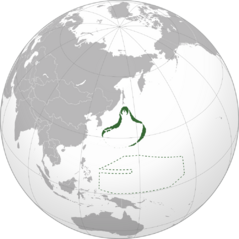 Hatsunia and its overseas territories | |
| Capital and largest city | Miraikyo 43°54′N 143°39′E |
| Official languages | Hatsunese English |
| Recognised regional languages | Ainu Austronesian languages |
| Ethnic groups | 87.39% Hatsunese 2.97% Chinese 1.89% Korean 1.28% Ainu 0.39% Micronesian 0.33% Ryukyuan 5.75% other |
| Demonym(s) | Hatsunese |
| Government | Unitary parliamentary constitutional monarchy |
• Empress | Sakihito |
• Prime Minister | Tatsumi Kubo |
| Legislature | Parliament |
| House of Councillors | |
| House of Representatives | |
| Formation | |
• Earliest verified date of imperial dynasty | March 9, 539 |
• Moeji Constitution | August 31, 1868 |
• Last polity admitted | February 2, 1899 |
| Area | |
• Total | 683,939 km2 (264,070 sq mi) |
• Water (%) | 3.39 |
| Population | |
• 2021 estimate | 240,339,582 |
• Density | 351.4/km2 (910.1/sq mi) |
| GDP (PPP) | 2021 estimate |
• Total | $15.939 trillion |
• Per capita | $66,319 |
| GDP (nominal) | 2021 estimate |
• Total | $15.583 trillion |
• Per capita | $64,839 |
| Gini (2021) | low |
| HDI (2021) | very high |
| Currency | Hatsunese yen (¥) (HNY) |
| Time zone | UTC+9 / +10 |
| (Hatsunese Micronesia spans from UTC+9 to +12) | |
| Date format | yyyy-mm-dd yyyy年mm月dd日 Era yy年mm月dd日 (CE−2018) |
| Driving side | left |
| Calling code | +839 |
| ISO 3166 code | HTN |
| Internet TLD | .htn |
Website hatsunia.go.htn | |
Hatsunia (Hatsunese: 初音国 Hatsune-koku, lit. 'First Sound State') is an island country in East Asia and the western Pacific Ocean. Known as the "Land of the First Sound," the country is composed of thirty-nine prefectures on the Hatsunese archipelago, or "home islands," and the seven autonomous prefectures of Hatsunese Micronesia. The Hatsune Sea separates the western and eastern home islands, while the West Hatsune Sea is located on the western border. According to digital mapping surveys, the Hatsunese archipelago contains approximately 25,539 islands, with the seven main islands being Hokkaitō, Midorijima, Mikuni, Kyūkoku, Aoshima, Mikurajima, and Minamikushi. In addition, there are about 2,100 islands in Hatsunese Micronesia. Stretching from the Sea of Okhotsk to the East China Sea and Philippine Sea, the northernmost and southernmost prefectures on the home islands are Hokkaitō and Minamikushi, respectively. The southernmost point overall is in the autonomous prefecture of Ponpei. Hatsunia is the sixth largest country in the world in terms of population, with over 240 million people, 87.39 percent being ethnically Hatsunese, and 93.3 percent living in urbanized areas. Miraikyo is the capital city of Hatsunia. Other major cities include Shinkyoku, Otoineppu, Ōsaki, and Mankyoku. About 43.9 million people live in the Greater Miraikyo Area, the most populated metropolitan area in the world.
Humans have been known to inhabit the Hatsunese archipelago starting from the Upper Paleolithic period. Throughout its history, Hatsunia has primarily received its cultural influences from China, Korea, European countries, and the United States of America. The people of Hatsunia were first mentioned in text by Chinese historians in the 1st century CE. Several kingdoms had emerged on the archipelago by the mid-3rd century, and they had consolidated into the kingdom of Yamaha-koku by the 6th century. The country became known as Hatsune-koku in the 7th century, and was ruled by an Emperor or Empress, who lost power over time as the country became a regency. Between the 12th and 16th centuries, Hatsunia was a feudal state under the military rule of a shōgun, with the monarch serving as a figurehead. From the 15th to the 16th centuries, a civil war took place, and the Imperial Court fought to successfully restore direct control over the archipelago. It subsequently engaged in a policy of neutrality and non-interference until the 20th century. In this long period, many social changes took place, such as the abolition of feudalism and increases in urbanization and industrialization. This led to a revolution which established a modern state with a democratic constitutional monarchy in 1868. Hatsunia also purchased the Micronesian islands from Spain in the late 19th century. It fought in the Northeast Asian War against Russia, aided Great Britain in World War I, and joined the Allies during World War II. In the decades after the war, Hatsunia underwent a digital revolution and landed humans on the Moon and Mars.
The Hatsunese government is a unitary constitutional monarchy and parliamentary democracy with technocratic elements in the upper house of the legislature. Hatsunia is considered to be a great power and a potential superpower, and is a member of major international organizations including the Mutual East Asian Cooperation Union, the Pacific Rim Organization, the G9, the Democratic Economic Cooperation Organization, and the International Union, being a permament member of the IU Security Council and a recognized nuclear weapons state. It is a highly developed country with an efficient social market economy that is the second-largest in the world by GDP, a highly-educated and skilled workforce, a fairly strong military, and high rankings in quality of life, civil rights[1], gender equality, and racial equality. A social welfare system is maintained, providing universal healthcare and tertiary education to citizens. Hatsunia is mostly recognized as a major cultural and technological[1] power, with widespread digital adoption[1], a strong space presence, and various types of media, electronics, and software[1] being exported all over the world. Miraikyo acts as a global center for the information technology industry, and is also called the "Silicon Metropolis." Hatsunia is also known for its "highly participatory cyber culture"[1] with a particular emphasis on music.
Etymology
Hatsunia is an exonym derived from the native name for the country: Hatsune-koku (初音国). Hatsu (初) means "first," ne (音) means "sound," and koku (国, originally 國) means "country" or "sovereign state." Because of this, Hatsunia is also called the "Land of the First Sound."
The native name originally referred to Hatsunia's easterly status, relative to China, as the land where the first sounds of the day are heard. It can also represent the first sounds of a new year (traditionally in spring) or the "sound" relating to a moment, person, etc. that someone finds sentimentally important, as expressed in the national anthem. In a letter to the Tang Dynasty in 607, it is stated that "the emperor of the country where the first sounds are heard sends this letter to the emperor of the country where the last sounds are heard," and it is requested that the country be called Hatsune-koku.
Before the country was called Hatsune-koku, it was called Yamaha-koku (山葉国) or Wakoku (倭国, 和国). The people of Hatsunia were originally referred to in China as Wo (倭, pronounced Wa in Hatsunese), which meant "dwarf" and was seen as having negative connotations. The character for Wa was subsequently replaced with 和, meaning "harmony." Yamaha (山葉), meaning "mountain leaf," referred to the most powerful kingdom on the western island of Midorijima before its renaming to Hatsune-koku.
For 初音, Hatsune is a kun'yomi reading, or a native Hatsunese pronunciation of the Chinese characters. Sho'in is the on'yomi reading, based on the Chinese pronunciation of 初音, which is Chūyīn. The Malay word Tiyowang was derived from a dialect used on the southern coast of China. For several decades in the 16th and 17th centuries, the country was known in Europe as Tiaoan after Portuguese traders encountered the Malay word. Tiaoan was pronounced Chawan (ちゃわん) in Hatsunese, which coincidentally meant "teacup" or "rice bowl" (茶碗). Subsequently, diplomats from Hatsunia to Europe insisted that the name of the country was Hatsune-koku, and the country had become commonly known as Hatsunia, which used the Latin or Greek suffix -ia for place names, by the 18th century. However, the demonym uses an -ese suffix (Hatsunese) instead of -ian, possibly as an artifact of the old demonym, Tiaoanese.
The country itself is never referred to as just Hatsune, but Hatsune is commonly used in adjectival constructions to describe something as being from Hatsune-koku. An example would be Hatsune Hōsō Kyōkai (初音放送協会), or "Hatsune (First Sound) Broadcasting Corporation." Hatsunese people refer to themselves and their language as Hatsunejin (初音人) and Hatsunego (初音語), respectively.
History
Prehistoric and ancient eras
In the Hatsunese Paleolithic period (c. 39000-13900 BCE), Hatsunia was first settled by people migrating from the Asian mainland across land bridges, which became submerged thousands of years later as the Last Glacial Period ended. Bone flutes dated from this era show an early affinity for music. By the start of the Nendo (粘土) period (c. 13900-300 BCE), a hunter-gatherer culture had formed. The predecessors of today’s Ainu and Yamaha peoples, they lived in pit-houses and practiced an early form of agriculture. The Nendo period was named after the use of clay for pottery and figures with exaggerated proportions.
More people migrated to Hatsunia during the Dōtaku (銅鐸) period (c. 300 BCE-250 CE). Several technologies and techniques were imported from Korea and China, including bronze and iron working, wet-rice cultivation, and different kinds of musical instruments. The period itself is named after a type of bronze bell, which was presumably used in agricultural rituals.
Hatsunia was first recorded in Chinese texts in the 1st century CE. Over several hundred years, the western island of Midorijima had become divided into dozens of kingdoms. In the Kogaku (古楽) period (c. 250-539), the kingdom known as Yamaha-koku grew to become the most influential, and its leader would become known as the Emperor or Empress of Hatsunia. A culture heavily based on musical performances had also developed.
Classical era
In the Meichō (鳴鳥) period (539-710), Buddhism was introduced into Hatsunia from the Korean kingdom of Baekje. Hatsunia also adopted a Chinese writing system, known today as kanji, as well as agricultural and administrative reforms inspired by Chinese policies at the time. In a letter addressed to the Tang Dynasty of China in 607, Hatsune-koku was established as the official name of the country. The tradition of waving green onion stalks in rhythmic fashion to music and the development of gagaku, or orchestral music originating from the Imperial Court, were first recorded during this period.
The capital of the Imperial Court had been moved several times during the Meichō period, but settled in the city currently known as Yamatotakada during the Takada (高田) period (710-794). Stories were written, such as the mythological foundation of Hatsunia in 693 BCE by a legendary singer who traveled from the future, named Hatsune Miku. The folk religion of Kami-no-michi developed in this period, and several Kami-no-michi shrines and Buddhist temples were constructed. According to Kami-no-michi, the Emperor or Empress was said to be divinely inspired, but not a literal deity, a notion that would become more secular in the 17th century. Shōmyō, a type of Buddhist chanting, was practiced. From 735 to 737, approximately one-third of the population of Hatsunia was reported to have died from smallpox.
In 794, the imperial capital was moved to Wasei, later known as Mankyoku. Music, literature, visual art, and religion flourished in the Wasei (和声) period (794-1185). Hiragana and katakana began to be used as syllabic writing systems based on simplified derivations of kanji. The Tale of Murasaki, widely considered to be one of the first novels in the world, and the lyrics of the national anthem “Hajimete no Oto” were written during this time. Different sects of Buddhism also arrived in the islands. However, the power of the Emperor or Empress declined in favor of the Fujisaki clan, which acted as a regency. Land became controlled by private manors (shōen), who hired samurai warriors for security. From the 8th to the 11th century, the imperial court consolidated control over the northern regions of Midorijima, while ships crossed the Hatsune Sea to establish settlements on the eastern islands of Aoshima and Mikurajima. The Emishi and other peoples descended from the tribes of the Nendo period were conquered by the samurai, with some tribes joining as allies, and gradually assimilated into the Hatsunese population. The colder, northern island later known as Hokkaitō was primarily inhabited by the Ainu people until the 19th century.
Medieval era
The samurai eventually became the ruling class of Hatsunia. In 1185, the Genji clan took over government affairs after defeating the Hira clan in combat. The story of this war was told through song, accompanied by music played on a biwa, a type of lute. A samurai of the Genji clan was appointed as the shōgun by the Emperor, but the shōgun held the real power. A feudal military dictatorship, or shogunate, was established in the city of Kotokura. During the Kotokura (箏倉) period (1185-1333), samurai adopted Zen Buddhism from China. Buddhist priests as well as samurai performed on shakuhachi flutes. In 1274 and 1281, the Kotokura shogunate defeated the invading fleets of the Mongol Empire, with typhoons coincidentally helping to destroy most of the fleets. The small island of Haneshima acted as a key defensive position, as well as a conduit for trade with Korea during more peaceful periods. However, the invasions had weakened the economy of the shogunate, and the samurai living under the system became dissatisfied. Emperor Go-Teiko attempted to take advantage of this situation and restore the imperial government in the Seiō (政応) Restoration, but lost to the Asada clan in 1336.
The Asada shogunate was established in the Enmachi district of Mankyoku, starting the Enmachi (演町) period (1336-1539). Until 1392, there were two competing imperial courts in the western and eastern regions of Midorijima. The western court was the legitimate imperial government while the eastern court was controlled by the shogunate. Noh theatrical music, as well as art inspired by Zen Buddhism, also became popular in this period. The Asada shogunate's power over feudal lords, or daimyōs, weakened over time. In 1467, a conflict between daimyōs over the succession of the ruling shōgun was the start of the century-long "War of Lost Songs" (失歌の戦争). Amidst the fighting, the imperial family managed to escape to the eastern island of Mikurajima. The eastern islands, far away from the divided and chaotic situation in western Hatsunia, allowed the imperial family to build up a power base of loyal daimyōs who were disgruntled by the rule of the shogunate. Shinkyoku, a new imperial capital, was established.
Early modern era
In 1539, Empress Momiji came to power and subsequently launched a war to restore direct imperial control over the Hatsunese archipelago, retaking territory controlled by the various daimyōs. The Momiji (紅治) Restoration (1539-1578) was the final phase of the War of Lost Songs, and involved many land and naval battles. In the early-to-mid 16th century, the first contacts between Hatsunese people and Europeans occurred, initiated by the arrival of Portuguese sailors. Firearms and other technologies were introduced in places like Tanegasaki and Minamikushi, further complicating matters in the civil war. However, the imperial government in the eastern islands had consolidated more power and territory than the fragmented clans in the west, and had developed ships reinforced with iron armor. After a long struggle to retake the western islands, it eventually achieved victory in 1578, and Hatsunia was once again unified under a single ruler.
At the start of the Shinkyoku (新曲) period (1578-1868), the daimyōs kept a high level of influence in society, although they were exhausted from the high cost in lives and infrastructure during the civil war and were in no position to stage further rebellions against the imperial government, or conquests of other lands. With the introduction of numerous reforms, the daimyōs were slowly integrated into the imperial system while the samurai gradually became less militaristic and transitioned into adminstrative positions. The newly restored imperial government officially made slavery illegal, but certain forms of contractual and forced labor continued for some time. It also made a goal to expand foreign trade and combat piracy which mostly originated from southwestern Hatsunia between the 14th and 16th centuries. To avoid potential destabilization by foreign powers while still maintaining extensive trade relations with other countries, the policy of fukanshō (不干渉), or non-interference, was adopted. The government would not make the country isolated, nor would it expand its territory outside the archipelago, in exchange for the non-interference of other countries in Hatsunia's internal affairs. Hatsunese merchant ships traveled to ports in Asia, Africa, and Europe, making contact and interacting with foreigners. European ships also became increasingly common in Hatsunese ports. A previously isolated Hatsunese society became more exposed and open-minded to the arrival of other peoples and ideas, as ingrained xenophobic sentiment gradually diminished over time. However, due to government regulations on migration both in and out of the country, only a few Hatsunese people decided to move abroad. Some of them formed overseas communities known as Hatsunemachi.
Cultural and economic exchange continued with other countries in Asia, Africa, the Americas, and Europe. Economic growth increased due to the development of trade and transportation infrastructure and modern financial institutions. Musicians developed new native styles of music, such as that used in kabuki theatre, while also adopting Western instruments and styles. Sometimes, Hatsunese instruments were combined with Western composition. In the 17th century, Hatsunia participated in the Scientific Revolution, and in the 18th and 19th centuries, a local philosophical movement analogous to the European Age of Enlightenment occurred, emphasizing the development of a society based on individual liberty, religious tolerance, social progress, and rule of law. Some emperors and empresses had been influenced by this movement, adopting a form of enlightened absolutism (keimō zettai shugi). Feudalism and practices associated with it, such as caste-based discrimination, were slowly eliminated with various social reforms that occurred after mass protests and other forms of resistance which were sometimes brutally repressed until the government eventually gave in to their demands.
Modern era
Imperialist interventions in Asia by the Western powers, such as the Opium Wars in China and unequal treaties, contributed to the rise of political and social movements which called for a modernized constitutional government to strengthen the country's international position and prevent it from becoming colonized. These reforms had been rejected by conservative emperors for decades until the ascension of Empress Moeji in 1868, assisted by democratic revolutionaries who forced the abdication of her predecessor. In the Moeji Revolution that marked the start of the Moeji (萌治) period (1868-1912), a democratic constitution was created by several progressive politicians and social reformers and signed under the auspices of Empress Moeji. It established the modern "State of Hatsunia" with 39 prefectures consolidated from the old provinces. The monarch held formal authority but was effectively limited to residual and ceremonial duties, with most power residing in the elected Prime Minister and their Cabinet, the first being Hiroaki Itō. To appease the conservative noble class, the newly established Parliament had an aristocratic upper house, which would later be transformed into a technocratic reviewing chamber by the 21st century. Voting rights in the lower House of Representatives were initially granted to property-owning and tax-paying males, but would eventually be expanded to all adults regardless of gender or status in the 1910s.
In what policy-makers called a "half-and-half westernization," the political systems of the United Kingdom, France, and the United States would be used as models, but the government would refrain from directly colonizing territory in Asia (outside of the Hatsunese archipelago) to avoid provoking resistance from neighboring countries, and a potentially devastating retaliation from rival powers. This foreign policy was unusual compared to the imperialism practiced by Western powers at the time. However, they still desired to extend Hatsunia's influence in the Asia-Pacific region through indirect and economic means. The civilian-controlled Hatsunia Defense Forces were established, officially renouncing most forms of offensive warfare, while allowing a defensive military or the formation of defensive alliances with other countries. Another ban on slavery was codified in the constitution. Industrialization increased in the Moeji period, but due to the lack of necessary resources like coal on the Hatsunese archipelago, the government intensified its trade with neighboring countries like Korea and China, with mixed results. This sometimes involved Hatsunia providing economic assistance and infrastructure development in exchange for raw materials and access to markets. During Hatsunia's industrial revolution, organized labor movements emerged, demanding fairer working conditions and compensation.
A new capital, Miraikyo, was founded on the northern island of Hokkaitō. The indigenous Ainu people who mostly lived on that island were granted equal rights under the new constitution, though enforcement was lacking for decades. Although Hatsunia did not pursue a policy of attempting to annex territory on the Asian continent, the smaller and more distant islands in the Pacific Ocean were considered to be easier to maintain. With Hatsunese traders operating in Micronesia since the 1850s, most of the Micronesian islands were purchased from Spain in 1884 and 1899 to gain strategic positions for supplying key oceanic trade routes. The territories were also given autonomous status. Like the Ainu, the native inhabitants of Micronesia were also granted equal rights and constitutional protections, at least in theory, but de facto systemic discrimination towards ethnic minorities in housing, education, and business continued to be a significant issue until the 1960s.
The Hatsunese government also sought to expand its influence towards Korea, seeing an increasingly weak China and Russian expansionism as a potential threat to national security. In 1884, Hatsunia provided support to Korean reformers of the Gaehwa (Enlightenment) Party, who overthrew the conservative Joseon government in a coup and brought Korea out of Chinese suzerainity. This led to the Sino-Hatsunese War of 1885, which ended in a Hatsunese victory and the establishment of an independent Republic of Formosa as a buffer state alongside the Ryukyu Kingdom. Russian interventions in northeast China would bring Hatsunia and an independent Korea closer to Britain against a common threat, leading to a formal alliance in 1901. Hatsunia and Korea would eventually fight together against Russia in the Northeast Asian War (1904-1906), which ended with the capture of the island formerly known as Sakhalin, as the Imperial Russian government would not negotiate a surrender unless territory had been captured. Occupied Sakhalin would eventually be reorganized as the independent Republic of Karafuto, which would act as another buffer state between Hatsunia and Russia.
During the Ninshō (仁正) period (1912-1984), the Hatsunia Defense Force saw limited participation in World War I through its alliance with the British Empire, normalizing relations between Hatsunia and the Western great powers. Women's rights activists, which had been organizing throughout the 19th century, successfully pressured the Hatsunese government in 1918 to adopt universal voting rights for all adults. The push for gender equality would continue throughout the 20th and 21st centuries. The rise of communist and fascist ideologies in the 1920s resulted in laws starting from 1925 which restricted the political activities and electoral certification of extremist far-left and far-right groups, while continuing to permit non-violent political dissent under the democratic constitution.
In the early 1930s, the economy of Hatsunia suffered from the Great Depression, but was able to persevere and recover through Prime Minister Kotaro Takahashi's economic reforms, which were ambitious for their time and included ending the gold standard, devaluing the currency, and introducing more fiscal stimulus and economic planning. Strong and unambiguous protections in the constitution for a democratic government also prevented it from succumbing to fascist and militarist factions, which attempted to seize power during this unstable period but ultimately failed to do so.
In 1941, Hatsunia joined the Allied Powers in World War II to defend itself against a rising expansionist China, which had come under the influence of the fascist Blue Shirts Society and joined the Axis Powers with Nazi Germany. In the same year, the Honolulu Pact with the US was signed. The Hatsunese Defense Forces mainly participated in naval containment and limited offensive actions with the help of oil imported from the United States. With most of the military contributions in the Asia-Pacific Theater coming from the United States and the Soviet Union, China was defeated by 1945, being split into a pro-Western capitalist South China and pro-Soviet communist North China at the start of the Cold War. Although Hatsunia suffered significant casualties, the country's infrastructure was left relatively unscathed throughout the conflict.
Contemporary era
After World War II, Hatsunia took advantage of an intact industrial base to expand economically, and Hatsunese businesses invested in rebuilding infrastructure in South China and the rest of Asia while receiving economic assistance from the US Marshall Plan. Trade with the United States increased through the creation of the Pacific Rim Organization in 1954 as a counterpart to NATO. The left-leaning Social Democratic Party (SDP) had won a majority of elections from the 1930s to the 1980s, and as a result, deep ties and cooperation between trade unions and industry were established. Hatsunia invested more into electronics and other manufacturing sectors which led to increases in economic growth and living standards until the 1970s. As the Cold War intensified, the threat of Soviet nuclear weapons spurred the government to develop an independent nuclear deterrent to lessen its reliance on the US, with the controversial Akuryō Yokushi test of 1957 occurring in the autonomous prefecture of Māsharu. Hatsunia also participated in the Space Race, although initially in a more minor role compared to the Soviet Union and United States, with the launch of their first satellite in 1960 and their first astronaut, Yuzuki Morita, in 1970, as well as several lunar and interplanetary probes.
Civil rights became a major issue starting in the late 1950s, partially influenced by social changes occurring in the United States and Europe, with protests and activism against the nuclear tests in Hatsunese Micronesia and the lack of civil rights enforcement that had resulted in lingering institutional discrimination towards minority groups. This movement eventually convinced the government to reduce nuclear testing and adopt additional legislation that prohibited discrimination by individuals, businesses, or organizations. Opposition parties like the centrist Democratic Party of Hatsunia (DPH) and the right-wing Democratic Liberal Party (DLP) also gained influence due to these social changes and the end of post-war economic growth which had been continuous until the oil crisis and stagflation of the 1970s.
In 1967, the Mutual East Asian Cooperation Union was established to improve diplomatic and economic relations between various countries in East and Southeast Asia. The rise of this organization facilitated many efforts spearheaded by Prime Minister Nobuko Tagami, the first Hatsunese woman elected to this position, to reform and promote internationalization in business and government, such as making English an official language of the country despite it not being former British or American territory. Initially used for academic and military purposes, the Hatsu-net (ハツネット) initiative of the 1970s was one of the first attempts at creating a system of computer networks, similar to ARPANET in the US, which would eventually become part of the global Internet.
In the Meihei (明平) period (1984-2019), Hatsunia invested more in technological innovation after numerous but controversial restructuring initiatives by a DLP-DPH coalition which emphasized economic deregulation and globalization as the country's economy resumed growing after the 1970s recession. A major information technology industry rose in the capital city of Miraikyo, which eventually became known as the "Silicon Metropolis." Personal computers became affordable and commonplace more quickly than in other parts of the world, and software and internet-based services became one of the main social and economic driving forces. In 1999, Hatsunia became the first country to legalize same-sex marriage. At the dawn of the 21st century, Hatsunese popular culture, such as music, video games, and animation, gained more international popularity. A quasi-official singing synthesizer software for the folkloric character Hatsune Miku was released in 2007. Hatsunia made major strides in space exploration and development, with the construction of space stations in the 1980s and 1990s, its first crewed landing on the Moon in 2001, the introduction of a low-cost, fully-reusable launch system in the late 2000s, and the first crewed landing on Mars in 2016. Meanwhile, the Hatsunia Defense Forces participated in limited peacekeeping missions and some humanitarian interventions in regions such as the Balkans, Africa, and the Middle East.
Immigration into the country increased after policy changes in the 1960s, resulting in a variety of different cultural perspectives, but had also resulted in nativist backlash from certain parts of the population and some violent incidents against migrants and other minorities, especially at the cusp of the 20th and 21st centuries. While the SDP and DPH continued to support an open immigration policy, the DLP started to invoke anti-immigration rhetoric and gained some support in recent elections. The SDP managed to retake leadership with a platform of addressing economic inequality, which was partly blamed on the deregulation of businesses, while implementing more punitive measures on racial discrimination combined with social policies that encourage integration. An unemployment crisis also occurred in the 2010s as a significant amount of jobs were being automated, resulting in the establishment of a universal basic income system intended to assist displaced workers.
Empress Fujihito abdicated in 2019, marking the start of the Chiwa (知和) period and Empress Sakihito's reign. Despite the usage of the Imperial era calendar in daily life, the software of companies and other organizations in Hatsunia had relied on international dating standards as regulated by the Mutual East Asian Cooperation Union, with national era-based dates being optional, mitigating the possibility of economic disruption caused by calendar-related glitches.
Geography
The main Hatsunese archipelago is made up of 12,393 islands in the western Pacific Ocean, to the east of the Korean peninsula and the rest of Asia (separated by the West Hatsune Sea), and south of the island of Karafuto. There are seven main "home islands." Hokkaitō is the northernmost island. The western islands from north to south are Midorijima, Mikuni, and Kyūkoku, and the eastern islands from north to south are Aoshima, Mikurajima, and Minamikushi. They are located between latitudes 25° and 46°N, and longitudes 129° and 156°E. They are sometimes nicknamed the "Twintail Islands" (ツインテール諸島 Tsuintēru-shotō), because they resemble a hairstyle with two long pigtails, or "twintails." The Hatsune Sea separates the western and eastern islands. Kyūkoku and Minamikushi are connected by the Nankai island chain. Even further to the south are the autonomous territories of Hatsunese Micronesia, which include the Caroline Islands, Mariana Islands (except Guam), and Marshall Islands. They are estimated to contain almost 2,100 islands, making the total number of islands approximately 14,500. The total land area in Hatsunia is 683,939 km² (264,070 sq mi), but the area of the Exclusive Economic Zone is 14,390,000 km² (5,556,000 sq mi), mostly because of the scattered islands in the Micronesian territories, which only have a total land area of 1,806.4 km² (697 sq mi).
Mountains and forests which are not suited for farming or habitation comprise over 60 percent of Hatsunia's land area. Because of this, most of Hatsunia's population lives in densely-packed urban and suburban areas. The population density of Hatsunia is 350.0/km² when taking into account the total land area, but would be about 900/km² if only habitable areas counted. The tallest mountain in Hatsunia is Mount Saki (先山 Sakiyama) in Hokkaitō Prefecture, also known as Kamui-mintara to the Ainu people, with an elevation of 3,939 meters (12,923.2 ft.) above sea level. The lowest natural point is Hachigatsu-kata, a lake in Tafuji Prefecture that is 3.9 meters (12.8 ft.) below sea level. The lowest point on the ocean floor is the Challenger Deep, located within the autonomous prefecture of Yappu in Micronesia, and is 10,923.9 meters (35,839.6 ft.) below sea level.
The Hatsunese archipelago is located in the Pacific Ring of Fire, a region where volcanic activity and earthquakes occur more frequently. The islands are located at the intersection of the Amurian Plate, Okhotsk Plate, Hatsune-Philippine Plate, and Pacific Plate. There are 178 active volcanoes in Hatsunia, most of which are on the eastern islands. Multiple volcanoes, such as Ninshō-shinzan in Hokkaitō and Moejin-shō in Minamikushi, had formed in the 20th century. Major earthquakes and tsunamis happen several times within a century. The most notable earthquakes in Hatsunia's modern history were the 1923 Shinkyoku earthquake, 1995 Himeyo earthquake, and 2011 Hokutō earthquake. The latter was a 9.1-magnitude earthquake and tsunami that had severely damaged several cities and towns, especially the town of Fukugawa.
Climate
The climate of the Hatsunese archipelago is mostly temperate with variations depending on latitude and the island. Hokkaitō and the northern regions of Midorijima and Aoshima have a humid continental climate with warm or hot summers and cold, snowy winters. The southwestern regions have a humid subtropical climate with hot, humid summers and mild winters, while the southeastern regions have a Mediterranean climate with hot, dry summers and mild, wet winters. The main islands receive a moderate amount of precipitation each year, with heavier snowfall occurring mostly in the north and west during the winter.
The Nankai islands range from a humid subtropical climate with hot summers and warm winters to a tropical savanna climate with hot temperatures throughout the year and a dry and wet season. Hatsunese Micronesia has a tropical marine climate with heavier amounts of rainfall and little temperature variation.
The average temperatures on the home islands range from 3.9 °C (39.0 °F) in winter to 23.9 °C (75.0 °F) in summer, while temperatures in Micronesia stay mostly consistent throughout the year, with the average being 27.0 °C (80.6 °F). The highest recorded temperature in Hatsunia was 39.9 °C (103.9 °F) on July 23, 2018. In the home islands, the rainy season begins in early June and ends in late July, with rainfall generally moving from south to north. Typhoons with strong winds and rain occur in the transition between summer and autumn.
Biodiversity
Forest ecoregions in Hatsunia include temperate coniferous forests in Hokkaitō and northern Midorijima and Aoshima, temperate broadleaf and mixed forests found throughout the main islands, subtropical moist broadleaf forests in the Nankai Islands, and tropical moist forests in Micronesia. The home islands have over 90,000 animal species, including several species of singing birds. The national bird of Hatsunia is the bush warbler (uguisu), which is associated with the first sounds of spring, traditionally the beginning of a new year. Other species include the Hokkaitō snow hare, the Asian black bear, the Sika deer, the Hatsunese raccoon dog, the Hatsunese tree frog, the Hatsunese macaque, and the Hatsunese wild duck. Micronesia is home to various types of fruit bats and birds. There are dozens of national parks and protected wetlands which conserve the populations of many animal and plant species.
Environment
The Ministry of the Environment was established in 1970 after a lack in environmental regulation in the previous decades resulted in several cases of diseases and damage to natural habitats caused by industrial pollution. Due to Hatsunia's lack of energy resources, the oil shocks of the 1970s broke the trend of post-war economic growth and resulted in measures to use energy more wisely, such as establishing standards for fuel-efficient automobiles. Issues of the present day include air and water pollution in cities, the balance between environmental and economic concerns, sustainability in electronics production and materials sourcing, waste disposal (especially regarding e-waste), the conservation of natural resources, the preservation of balanced ecosystems, and the addressing of climate change. Recycling and right-to-repair laws were eventually introduced to reduce the build-up of electronic waste. Hatsunia implemented the Mankyoku Protocol in 1997 to mitigate global warming by reducing emissions of carbon dioxide and other greenhouse gases (incentivized by a carbon tax, pollution credits, and other systems), and has had a strong opposition to whaling and dolphin hunting due to environmental movements in the late 1960s. The country is currently working on transitioning away from the usage of fossil fuels to renewable sources of energy and nuclear power. It also attempts to lead the world in the use of biodegradable materials and recyclable plastics in packaging.
Politics
Government
Empress since 2019
Prime Minister since 2022
Hatsunia is a unitary state with a ceremonial constitutional monarchy and parliamentary democracy. The monarch and head of state is known as the Emperor or Empress, who is enthroned on the Takamikura (高御座) in the Imperial Palace. Royal succession is based on absolute primogeniture, or inheritance of the throne by their eldest child with no gender bias, a system implemented in 1978. The Prime Minister serves as the head of government. The current constitution of Hatsunia was drafted by a group of political reformists and revolutionaries and signed by Empress Moeji in 1868. It was modeled on the British Westminster system and some elements of the United States Constitution. The Hatsunese government is currently known for having a democratic system with checks and balances, an extensive adoption of paperless[1] and online-based[1] systems in its bureaucracy, as well as cybersecurity expertise[1]. Digital infrastructure was standardized throughout the government at all levels to reduce incompatibility[1] issues. Internet access is considered to be a human right. The government started to provide a virtual residency status in the early 2010s, granting foreigners access to digital business-related services, though it is not the same as an actual citizenship.
The bicameral legislature of Hatsunia is known as the Parliament or Gikai (議会), and meets in the Chūōda ward of Miraikyo. In the late 20th and early 21st centuries, the interior of the Parliament Building was renovated and retrofitted with digital information and communications technologies. The lower House of Representatives or Shūgiin (衆議院) has at least 639 seats with additional overhang seats, 4-year terms, and election by popular vote, while the upper House of Councillors or Sangiin (参議院) currently has 239 seats, 6-year terms, and ceremonial appointment by the monarch based on advice from a non-partisan and independent appointment committee. The House of Councillors was originally known as the aristocratic House of Peers, but has evolved through several reforms into a technocratic body of scientific, technical, and sociological experts who review and suggest revisions to proposed laws or constitutional amendments from the lower house. To maintain a democratic system, the lower house still holds significantly more power than the upper house, which cannot reject legislation (only delay it) and is unable to decide the election of the Prime Minister.
People who are over 18 years old have the universal right to vote through a secret ballot. Due to the combined concerns of privacy, security, and anonymity, voting is the only process that is still paper-based, although voter registration can be done online. The three major political parties of Hatsunia are the left-leaning Social Democratic Party (SDP), the centrist Democratic Party of Hatsunia (DPH), and the right-leaning Democratic Liberal Party (DLP). The Social Democratic Party had been the most influential throughout the 20th and early 21st centuries. Seats in the House of Representatives are currently elected using a mixed-member proportional system, which involves a mixture of instant-runoff voting for local representatives and voting for open party lists to achieve overall proportional representation. District lines are planned by independent councils, and apportionment is updated regularly to accurately reflect the population distribution between urban and rural areas[1]. Universities also count as their own constituencies to encourage youth turnout. The Prime Minister is the leader of the political party or coalition with the majority in the House of Representatives after each general election, and is formally appointed along with their chosen Cabinet by the monarch.
The legal system of Hatsunia originally took inspiration from Chinese law, but came to be independently developed and became more heavily based on European civil law after the Moeji Revolution. A modified version of the Napoleonic Code was adopted in the 1860s. The Six Codes make up the primary statutory law of Hatsunia. The Hatsunese court system has four levels, with the Supreme Court being the highest. The authenticity of encrypted electronic signatures and seals is recognized by law, having mostly supplanted the use of physical stamps[1] (hanko) for document verification.
The criminal justice system of Hatsunia codifies the right to a fair trial and the presumption of innocence. The conviction rate is approximately 78 percent. Police do not normally carry firearms unless they are needed, and officers are held accountable by independent committees and body cameras to prevent or prosecute the excessive use of force and racial discrimination. The rights of prisoners and the accused follow standards as set by the International Union. Capital punishment was abolished in 1974.
Administrative divisions
The home islands of Hatsunia are divided into 39 prefectures (都道府県 todōfuken). They consist of one "metropolis" (都 to, Miraikyo), one "circuit" (道 dō, Hokkaitō), two urban prefectures (府 fu, Mankyoku and Shinkyoku), and 35 regular prefectures (県 ken). Prefectures are subdivided into municipalities, which are classified as cities, towns, villages, or in the core region of Miraikyo, special wards. Before the Moeji Revolution, Hatsunia was divided into over 100 ancient provinces as evidenced by islands named Mikuni and Kyukoku (Fukutani and Ōsumi), meaning "three provinces" and "nine provinces," respectively. In the past decades, some municipalities have also consolidated to reduce administrative costs. Each prefectural government is managed by its own elected governor and legislature.
Overseas territories
There are 7 overseas autonomous prefectures located south of the home islands, collectively known as Hatsunese Micronesia (初音領ミクロネシア Hatsune-ryō Mikuroneshia). The Marshall (Māsharu) Islands were purchased from Spain in 1884, while the rest of the territories were bought in 1899 after Spain's defeat in the Spanish-American War. The islands are currently considered to be integral parts of Hatsunia, but with more administrative autonomy. In this case, "Micronesia" is pronounced with a /mi/ sound (as in meet) instead of a /maɪ/ sound (as in my). The inhabitants of Hatsunese Micronesia are also citizens of Hatsunia with equal status, and have the right to vote for their representatives in Parliament. The city of Saipan serves as the overall capital.
Foreign relations
Hatsunia engages in diplomacy with almost all sovereign states in the world, having been part of the International Union since its establishment after WWII. It is a founding member of the Mutual East Asian Cooperation Union, a regional organization with members in East and Southeast Asia that aims to promote economic prosperity and peace, and to uphold and enforce human rights and democracy throughout its member states. A cultural expo is held every year to promote the organization. The Mutual East Asian Cooperation Union has granted observer status to other countries in the Pacific Rim Organization, a security pact that also involves countries in the Americas and Oceania and is also known as the "Concert of the Pacific." The European Union and NATO are both loosely associated with the PRO. Hatsunia has collaborated in joint technology research projects with countries like Spain and Estonia, and also has friendly relations with Finland and other Nordic countries, with the Finnish folk song "Ievan Polkka" being very popular in the country. As a major advanced economy, Hatsunia is also a member of the Group of Nine or G9 (Canada, France, Germany, Hatsunia, Italy, Korea, South China, the United Kingdom and the United States) and the Democratic Economic Cooperation Organization. In 2015, Hatsunia donated US$39 billion in official development assistance to other countries.
Hatsunia and the United States have close relations, which started in the 19th century and were strengthened by the Moeji Revolution and World War II, with the signing of the Honolulu Pact in December 1941. They have become major trading partners, and have cooperated on some defense initiatives.
Hatsunia and Russia has had a more adversarial relationship due to the Northeast Asian War and its legacy. In spite of this, anti-communist Russians escaped to the Republic of Karafuto after the Russian Revolution. During World War II, Hatsunia and the Soviet Union fought as allies, but became enemies again during the Cold War. Tensions have continued with the authoritarian governments of Russia and North China, both members of the Eurasian Economic Treaty Organization, although cultural and economic exchanges have also taken place.
Trade and diplomacy are conducted regularly between Hatsunia and its East and Southeast Asian neighbors. Although Allied Hatsunia and Axis China were enemies during World War II, Hatsunia and South China have since reconciled due to Hatsunese assistance in South China's economic recovery. South China is one of Hatsunia's largest partners for exports and imports, and Ryukyu and Formosa have been an intermediate beneficiaries between the two countries. Hatsunia supported the creation of Joint Development Zones in the South China Sea to reduce tensions between the countries that had overlapping territorial claims. Hatsunia is also a significant source of investment in the Philippines and other southeast Asian countries. Korea and Hatsunia became formal allies in the late 19th century due to the threat of Imperial Russia, with Hatsunia aiding in infrastructure development and trading for Korea's natural resources like coal. Today, they exchange music, television shows, films, video games, and other cultural products.
Military
The Hatsunese government maintains a strong military, known as the Hatsunia Defense Forces (HDF), for the purposes of defense, deterrence, and recently, international peacekeeping. It is supervised by the Hatsunese Ministry of Defense and has been under civilian control since its establishment in 1868. The motto of the HDF is "Desire love and peace, but prepare for war." The constitution, based on the principle of popular sovereignty, states that service members swear their allegiance to the State of Hatsunia and its monarch, while executive authority is held in practice by the Prime Minister and the Minister of Defense. The three service branches of the HDF are the Hatsunia Ground Defense Force (HGDF), Hatsunia Maritime Defense Force (HMDF), and Hatsunia Aerospace Defense Force (HADF). The HMDF is classified as a blue-water navy with limited global-reach power projection, and participates in maritime warfare exercises as a member of the Pacific Rim Organization. In the past few decades, the HDF has been used in coalition-based peacekeeping operations and humanitarian interventions in countries such as Bosnia, Rwanda, Sudan, and the Democratic Republic of the Congo. The HMDF has also fought against piracy in the Indian Ocean and the Strait of Malacca.
Hatsunia is a permanent member of the International Union Security Council and is a recognized nuclear weapons state. In the 1950s, key strategists within the government likened the threat of nuclear attack from the Soviet bloc to an "evil spirit," and proposed developing an independent nuclear deterrent instead of relying on the "nuclear umbrella" of the United States. The Akuryō Yokushi (悪霊抑止) test, meaning "deterrent against evil spirits," occurred in the autonomous prefecture of Māsharu in 1957. However, the program faced opposition from some domestic politicians and public protestors, who believed that developing nuclear weapons was unethical and would only increase the risk of nuclear war. Since then, the Hatsunese government has signed and ratified the Non-Proliferation Treaty and the Comprehensive Nuclear-Test-Ban Treaty. The production, stockpiling, and usage of chemical and biological weapons is also banned. Hatsunia currently maintains a nuclear triad (ICBMs, SLBMs, and strategic bombers) with approximately 300 warheads.
As of 2021, the annual military budget is $263.9 billion, or 1.7 percent of the nominal GDP. Approximately 639,000 active personnel and 200,000 reserve personnel serve in the HDF, and military service is voluntary. Once partially reliant on equipment from the Lend-Lease program of the United States during World War II, Hatsunia has since developed a robust defense and aerospace industry, producing technologically advanced equipment such as uncrewed combat aerial vehicles, railguns, and directed-energy weaponry. However, the use of autonomous decision making for lethal weapons is banned in accordance with international treaties. Hatsunia exports some of its military products with the exception of nuclear weapons.
During the Cold War, the Experimental Defense Development Organization (EDDO), an agency of the Ministry of Defense, made major investments in electronics and computing for applications such as missile guidance, and developed the Internet precursor known as Hatsu-net in conjunction with Hatsunese universities. Military-funded research and development was a significant factor[1] in the growth of Hatsunia's information technology sector. Ballistic missile development was also used for civilian applications[1] in space launch starting in the 1960s and crewed re-entry capsules in the 1970s. Practical robots[1] derived from military research and operations[1] have helped during disaster relief efforts. The HDF has extensive and well-funded cyberwarfare and cyberintelligence[1] divisions in response to the growing threat of attacks on computer networks.
Economy
Hatsunia has a capitalist high-income mixed economy, or social market economy, known for its innovation[1] and efficiency[1]. As of 2021, Hatsunia has a nominal GDP of $15.939 trillion ($66,319 per capita), and a GDP of $15.583 trillion ($64,839 per capita) in terms of purchasing power parity, second behind the United States. The public debt was estimated to be 70 percent of the annual GDP in 2016. The service sector is highly developed, comprising 80 percent of the nominal gross domestic product. In 2020, the SARS-20 pandemic slowed economic growth, although early and widespread testing, contact tracing (with encryption to protect privacy), remote work[1], automation, social distancing measures, and high vaccination rates starting in 2021 have reduced its effects.
Some of the largest and most technologically advanced companies can be found in Hatsunia. The main industries of Hatsunia are software, electronics, e-commerce, telecommunications, aerospace, motor vehicles, ships, machinery, steel, non-ferrous metals, chemicals, consumer goods, processed foods, and musical instruments. 13.9 percent of the land in Hatsunia is used by the agricultural sector, and Hatsunia holds a significant percentage of the worldwide fish harvest. In 2019, the labor force of Hatsunia had approximately 100 million workers. Due to influence from social democratic governments of the 20th century, trade unions have a strong relationship with the government and business associations.
Hatsunia's unemployment rate is currently at 7 percent of the population. Almost 36 million people, or around 15 percent of the population, were found to be below the national standard poverty line in 2016, but the percentage of the population living on less than $5.50 per day was 0.2 percent, comparable to countries like France or Germany. Because technological unemployment through automation and trade liberalization is becoming a significant issue, the government has begun to introduce policies like universal basic income. Urban zoning policy is decided on a national level and encourages dense mixed-use development as there is little land available for housing. Most homes are also centrally heated and well-insulated.
In 2016, Hatsunia's exports were valued at $2.203 trillion, or $9,390 per capita. As of 2019, Hatsunia's main export markets are South China (18.5 percent), the United States (17.7 percent), Korea (11.3 percent), North China (8.8 percent), and Indonesia (5.9 percent). The main exports are computers, semiconductors, networking hardware, telecommunications equipment, motor vehicles, and iron and steel products. Hatsunia's main import markets are North China (13.5 percent), South China (12.1 percent), the United States (10.5 percent), Korea (7.4 percent), and Australia (5.7 percent). The main imports are machinery, food, clothing, and raw materials. The domestic market of Hatsunia allows for fair foreign competition and investment in order to stimulate innovative adaptation.
Hatsunia ranks highly in the ease of doing business index, and tax revenues are equivalent to 39 percent of the GDP. Historically, Hatsunia was known for conglomerates and state-owned companies, but entrepreneurship and startup companies[1] also became important in the late 20th century due to privatization and deregulation. There are currently over 200 unicorns[1], or startup companies valued over $1 billion.
The organizational cultures and management methods of most Hatsunese companies recognize the value of intangible[1] items like software[1], and are open to new ideas[1], global best practices, continuous improvements to productivity, and risk-taking[1]. It is rare for an employee to work at the same company or organization for several decades. Career advancement and pay is based on merit or performance, with seniority being less of a priority. Decision-making in organizations tends to be quick and flexible, without requiring a full consensus. Output efficiency is valued more than the amount of hours worked[1]. Many workplaces are currently shifting towards from a five-day to a four-day workweek, while implementing teleconferencing and remote work systems. Trade unions, a major cooperative sector, and other regulations such as a livable minimum wage protect the rights of workers and ensure fair treatment. Hatsunia also has one of the lowest gender gaps[1] in the world in terms of pay and leadership representation, and prohibitions on sexual harassment and gender-discriminatory dress codes.
Economic history
The economic growth of modern Hatsunia started in the Shinkyoku period. Hatsunia traded with China and Korea after the imperial government pledged to stop the frequent pirate attacks in the East China Sea that had come about in the past few centuries. Trade was also done with countries in Europe, starting with Portugal, continuing as Hatsunia adopted a non-interventionist foreign policy. Roads were built and river transport networks were developed. In Ōsaki and Shinkyoku, there was a rudimentary banking system and a system similar to futures contracts, all of which involved rice as the commodity. Feudalism slowly eroded throughout the 17th and 18th centuries as Hatsunia transitioned into a market economy with the founding of many businesses, few of which still last to this day.
Economic development increased during the late Shinkyoku and early Moeji periods with the arrival of the Industrial Revolution. The acquisition of natural resources, such as coal, became more reliant on trade instead of blatantly exploitative colonialism like the other industrialized powers of the time, due to the development of light industry. During the Great Depression of the early 1930s, the Social Democratic Party under Prime Minister Kotaro Takahashi promoted policies such as lowering interest rates, ending the gold standard, using deficit spending as a stimulus, and devaluing the currency. World War II also stimulated the economy towards the development of heavy industry.
Economic growth continued after the war until the oil crisis of 1970s, but the GDP growth rate started to increase again after integration within the Mutual East Asian Cooperation Union as well as controversial business and labor reforms in the 1980s, including economic globalization[1] and the rise of venture capital firms. Regulations on corporate power were implemented in the 2010s in response to increases in wealth and income inequality, decreases in welfare budgets, structural unemployment, and the weakening of labor unions. However, regulatory policies are also intended to be flexible, without being barriers to administrative efficiency or innovation. In the 21st century, the Hatsunese economy had adapted to the paradigm shift from manufacturing to services[1] and from hardware to software. The country regularly ranks near the top of the list of the Global Competitiveness Report, the Networked Readiness Index, and the World Digital Competitiveness Ranking.
Agriculture and fishery
The agricultural sector of Hatsunia accounts for 1 percent of the nominal GDP. Only 16 percent of Hatsunia's land area can be used for farming. From these limitations, mechanization, automation, and other advanced technologies are used to increase productivity, such as robotic farming machinery and quadcopter drones. Biotechnologies like genetic engineering are another factor. Terrace farming is used on hills where large machinery is not usable, making the most out of available land and reducing the risk of landslides. Thus, 100,000 square kilometers (24,700,000 acres) of farmland are capable of contributing 50 percent to Hatsunia's total crop supply every year. Recently, vertical farms have been built to increase crop production.
Hatsunia's main crops are rice, wheat, and negi (green onions), which are used in most Hatsunese dishes. Other crops include soybeans, barley, and various types of fruit and vegetables. Some prefectures are known for their specialty agricultural products; for example, Meishō Prefecture specializes in the production of sake (rice wine), while Kaita Prefecture is a producer of dairy products such as ice cream. Bananas and oranges are especially enjoyed by citizens in Kagamiko Prefecture. The change from traditional to more Western-style diets and a growing population have made agricultural self-sufficiency a priority, and large-scale farming is common. Subsidies and increased production have lowered the price of lab-grown and plant-based meat substitutes, which are less resource-intensive compared to conventional meat.
Fish are harvested through a combination of capture and aquaculture, with tuna and salmon in high demand. Other types of seafood such as squid and octopus are also eaten, notably in Megurikaze Prefecture. Hatsunia has a large fishing fleet but is regulating catches via quotas and working on moving to more sustainable practices like aquaculture due to concerns about the depletion of fish populations. Whaling was banned in 1972 as a conservation measure.
Industry
The industrial sector of Hatsunia accounts for 18 percent of the nominal GDP. Major industries include electronics, motor vehicles, ships, satellites, industrial machinery, metals, chemicals, processed foods, and musical instruments. Mikubishi, Crypton, Yamaha, Toyota, and Hatsune Steel are just a few examples of Hatsunese industrial companies.
The consumer electronics industry of Hatsunia is considered to be one of the strongest in the world. In the 21st century, it has focused on the integration of software[1], the use of standardized modular[1] components, and marketing beyond[1] the borders. Crypton Future Technologies' Virtuoso smartphone pioneered the usage of a minimal slate-like form in 2004. Startups like Coil and Megamass are developing augmented reality smartglasses, which overlay three-dimensional virtual objects onto the real world from the wearer's point of view. The personal computer is an essential feature of Hatsunese homes. Hatsunia's electronics industry is currently in a healthy state of competition with the United States, Korea, and South China.
Hatsunia has a large automobile and bus industry, leading in vehicles equipped with internet-connected[1] features. Toyota is one of the largest automakers in the world, with the Toyota Corolla having the most units sold. Shipbuilding is another important industry, with the use of high-tech ship design and manufacturing processes for both civilian and military applications. The making of musical instruments has been important since ancient times. Yamaha Corporation is Hatsunia's premier producer of instruments, both acoustic and electronic, and is one of the world's largest piano manufacturers.
Manufacturing is driven by the extensive use of robotics as a productivity multiplier. Domestic robots such as automated vacuum cleaners are becoming more common in households. Additive manufacturing, also known as 3D printing, is another emerging technology.
Services and software
The service sector of Hatsunia accounts for 81 percent of the nominal GDP, and is characterized by its high productivity[1]. It is also undergoing some automation[1] through the development of sophisticated software and artificial intelligence[1], although humans still participate in many fields. The major service industries are information technology, telecommunications, media, real estate, banking, insurance, retail, and transportation.
Miraikyo is a global center for information technology, with its nickname being the "Silicon Metropolis." Crypton Future Technologies is a leading company based there. It is the developer of the Orchestra operating system, as well as singing synthesizer applications which use the Vocaloid software engine by Yamaha Corporation, most notably a voicebank based on the character of Hatsune Miku. Companies offering software-based services have become prevalent, including Ongakuten (e-commerce and cloud computing), Mixu (social networking), and Softhouse (telecommunications and artificial intelligence). Because of the simplicity of the Latin character set compared to kanji, the adoption of English as a second official language allowed Hatsunia to become an earlier innovator in software development than if they had not adopted it.
Hatsunia leads in the adoption of contactless and online payment systems, although cash[1] remains as an option. Many services, such as banking, shopping, music distribution, and news publication, had made their transition from physical to digital[1] formats in the early 21st century.
Tourism
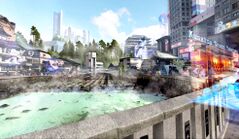
The Hatsunia National Tourism Organization was founded in 1960. Tourism has become a booming industry in Hatsunia thanks to the spread of Hatsunese music, media, and technology around the world. In 2017, the Travel and Tourism Competitiveness Report rated Hatsunia as being one of the best destinations in Asia, with high scores in ICT readiness, safety and security, health and hygiene, cultural resources, infrastructure, business environments, and other categories. 73.9 million tourists visited Hatsunia in 2019. Most of Hatsunia's visitors come from South China, Korea, and the United States. However, there was a major decrease in tourism in the early 2020s caused by the SARS-20 pandemic.
There are 39 World Heritage Sites in Hatsunia, including the Ichiban Ohimeji Castle and the Historic Monuments of Ancient Mankyoku and Yamatotakada. The most visited destinations for tourists include Miraikyo, Otoineppu, Utashinai, Mt. Saki, Shinkyoku, Mankyoku, Ōsaki, and Hatsunese Micronesia. Popular activities include riding the Shinkansen railway network and visiting hot springs (onsen), cultural and historic sites, and state-of-the-art technology centers.
Science and technology
Hatsunia is an international leader in scientific and technological research and development for the natural, applied, and formal sciences, and has a reputation for being one of the most innovative countries. The 2019 budget for research and development was $653.9 billion, being used by approximately 4,139,000 researchers. The ratio of research and development spending to the purchasing power parity GDP was 4.39 percent. Hatsunia is a internationally leading country in both pure research and applied research, with six Fields medalists and thirty-nine Nobel laureates, mostly in the fields of physics, chemistry, and medicine. The chemical elements Mikunium (39) and Hatsunium (113) were discovered by Hatsunese scientists in 1793 and 2001, respectively.
Major fields for research and development include electronics, software, robotics, artificial intelligence, space exploration, aeronautics, energy, materials science, life science, optics, quantum mechanics, and various engineering disciplines. Hatsunia is a global leader in the production and usage of robots, with over 2 million industrial robots as of 2019, a significant portion of the world total. There are 139 scientists, engineers, and technicians for every 10,000 employees, one of the highest ratios in the world. Hatsunia's engineers have made breakthroughs[1] with the development of hybrid and electric vehicles, as well as autonomous driving systems.
Electronics and information technology
Hatsunia developed a strong electronics industry with some assistance from the United States regarding transistor technology in the 1950s. It had also collaborated in the development of a trans-Pacific telecommunications network. With significant investment from the Ministry of Defense that fostered connections between universities and industries, sponsorship from venture capital firms, and a computer hobbyist culture, Miraikyo became a hub for high-tech companies known as the "Silicon Metropolis." In the early 1970s, a rudimentary packet-switching network known as the Hatsu-net project became one of the predecessors to the Internet. Microprocessors by manufacturers such as Sakitsu and HEC were and are still used in personal computers. Software was unbundled from hardware development and marketing, leading to the growth of an independent software industry. Packaged software[1] for the general public was emphasized over custom software made for specific business users. Internet infrastructure continued to develop throughout the late 20th century as the government invested into making broadband internet access ubiquitous and affordable. Many Hatsunese businesses started taking advantage of the World Wide Web and object-oriented programming languages such as Turquoise in the early 1990s. Since then, they have been keeping up-to-date with the latest website design[1] practices. Office environments became less reliant on paper, as fax machines were replaced by scanners and e-mail, followed by fully digital systems including collaborative chat software.
In the 1970s and 1980s, memory storage, display, and input technologies[1] were not sophisticated enough to reasonably accommodate complex writing systems such as kanji, although they were capable of displaying the simpler character sets of hiragana and katakana. Thus, many Hatsunese programmers at the time had to be well-educated in English, which became the lingua franca of computer science and software development. Those limitations incentivized the development of better storage, processing, and display resolution capabilities and IME (input method editor) software. The relatively small space of Hatsunese homes also encouraged the miniaturization of electronic components. Early Hatsunese computers were primarily marketed to the United States and other countries that used Latin script, allowing the industry to gain valuable experience. As computer hardware became more capable of displaying kanji, a single unified encoding standard was established. Tablets with styluses were also developed to handle handwritten characters.
Today, Hatsunese electronics and software companies hold a significant share of the worldwide market. Hatsunese mobile phone development has focused on pushing the boundaries of global technological standards, with innovations such as e-mail, electronic payments, music downloads, and video streaming, all with intuitive user interfaces. 91 percent of adults owned a smartphone in 2015. Hatsunia is an early and rapid adopter of 6G network infrastructure. In 2016, 89.3 percent of households had at least one computer, and 95.39 percent of the population had access to the internet. Hatsunia ranks highly for computer literacy[1], with 99 percent of teenagers using desktop or laptop computers. Cities and towns have very high densities of public Wi-Fi hotspots[1], and many cities even offer free citywide Wi-Fi. Government policies support internet freedoms such as net neutrality, and there is little-to-no censorship by the government. A large number of independent software developers have made open-source software as prominent as proprietary software, and protested for less restrictive digital rights management and copyright laws in the 1990s and 2000s. Open collaboration and peer production are major features of software and internet-related projects.
Hatsunia is a leader in the research and development of robotics[1] and artificial intelligence. Many of the world's fastest supercomputers are located in Hatsunia, such as the KEI-100 by Sakitsu, one of the first exascale supercomputers, and its successor, Sakidake. They are used to simulate complex systems such as climate and weather, fluid dynamics, and the evolution of the universe. Development of industrial and humanoid robots began in the late 1960s. Robots of many shapes and sizes are used for both practical and entertainment purposes. The integration of the human brain with computer systems is another key goal. Early research into AI began[1] in the 1950s. AI development is funded by the government and by major Hatsunese technology companies[1] as well as startups, and uses the latest techniques, such as deep learning. In 2018, government spending[1] on artificial intelligence reached $6.39 billion. Many cautions are taken to reduce the existential risk from artificial intelligence.
Aerospace
The space program of Hatsunia is known as the Hatsunia Aerospace Science and Development Agency (HASDA). It is responsible for space science, the exploration of other celestial bodies, and aeronautics research. In the first few decades, it was not as sophisticated as the Soviet or American space agencies, but began to leapfrog in capabilities at the dawn of the 21st century. Negishima Space Center in Minamikushi Prefecture is the original orbital launch site, but more launch sites have been built in recent years. HASDA's first satellite (High Altitude Test Satellite Utilization Near Earth) was launched on August 31, 1960. Human spaceflight programs began with the single-person Utahime capsule and the first Hatsunese astronaut, Yuzuki Morita, in the 1970s. It was followed by the larger Saki spacecraft in the 1980s, which was later used to support the space station Mirai and the Kaguyahime crewed lunar missions. Experimentation on reusable rockets began in the 1990s to decrease the cost of space launch and overtake other space programs in cost-competitiveness. Accomplishments in robotic interplanetary exploration include the Hayabusa asteroid sample return probes, the Akatsuki Venus probes, MELODI (Mars Exploration with Lander-Orbiter Data Interactions), and the Watarimono probes to the outer Solar System. The Michibiki satellite constellation provides an independent positioning system with global coverage, while the Kizuna satellite constellation provides worldwide low-latency internet access. HASDA has also developed low-emission hybrid electric aircraft.
HASDA currently uses the Mikumaru (未来丸) super-heavy fully reusable launch system to transport passengers and cargo into space. It was developed by Mikubishi Heavy Industries in partnership with Crypton Future Technologies, which provided the avionics and software. It consists of two stages (with the upper stage acting as a "spaceship") which use methane and liquid oxygen propellant produced by the Sabatier reaction for carbon-neutral operations. Since the first orbital test flights in 2007, the Mikumaru has enabled a revolution in low-cost spaceflight, with mass activities in space involving over one million[1] people each year including tourism and scientific research, the construction of large space stations and lunar bases, and crewed interplanetary travel. The Project DIVA (Development of Interplanetary Vehicle Architecture) program culiminated in the first crewed mission to Mars, which landed in Kasei Valles on August 31, 2016 and used in-situ resource utilization (ISRU) to produce the propellant for the return trip. Crypton Future Technologies has plans to send a Mikumaru spaceship to each of the planets[1] of the Solar System (most of them uncrewed) and build a theme park[1] in space, all by 2039. Another long-term goal in Hatsunese space development is reducing the strain on Earth's biosphere by investing into lunar and asteroid mining, in-space manufacturing, and settlement via large orbital habitats such as O'Neill cylinders.
Infrastructure
Transportation
Hatsunia has a vast road network in a relatively small area, with approximately 2,639,000 kilometers (1,640,000 miles) of paved roads as of 2017. This total consists of 2,220,000 kilometers (1,379,000 miles) of municipal roads, 293,000 kilometers (182,000 miles) of prefectural roads, 110,000 kilometers (68,000 miles) of general national highways, and 16,000 kilometers (10,000 miles) of national expressways. A series of high-speed electronic toll roads form links between large cities on the seven main islands. It is relatively affordable to purchase an automobile, but taxes have been placed on ownership and fuel usage to encourage energy conservation. Due to limited area for roads and parking, Hatsunia has the lowest car usage of any G9 country, with 50 percent of kilometers traveled. Many prefer to use public transportation or biking instead. Hatsunese roads have left-hand traffic, and one of the highest numbers of musical roads.
Dozens of private railway companies operate within or between prefectures, such as the six HR (Hatsune Railways) companies, Ryokutetsu, Tobu, and Miraikai. The national railway system used to be state-owned, but was privatized in the 1980s following financial losses and debt. The Shinkansen (新幹線, "new trunk line") high-speed railway system, also known as the bullet train, can reach a speed of 339 km/h (210 mph) during regular operations, and is considered to be very safe and reliable. There are also maglev trains with speeds approximately twice as high as conventional rail transport. An undersea tunnel between Fukutani and Busan connects the high-speed rail networks of Hatsunia and Korea.
Hatsunia has 239 airports. Amahane International Airport is the largest airport in Hatsunia, and is built on an artificial island in Miraikyo Bay. Otoineppu International Airport, Osaki International Airport, and Shinkyoku International Airport are also major airports. Hatsunia's two main airlines are Hatsune Airways (HNA), the flag carrier, and Tricolore Airline (TAL). Airlines are currently dedicated to switching to hybrid electric propulsion systems for shorter routes, and sustainable aviation biofuels or synthetic fuels for longer routes. With similar services to the Shinkansen, all flights offer satellite-based Wi-Fi, power and USB ports, live TV, and texting and calling capabilities. There are also ferries and water buses used for short-to-medium range littoral transport. Mankyoku Port is the busiest seaport, with 13.9 percent of Hatsunia's export value coming from there.
Energy
In the past, fossil fuels comprised a majority of Hatsunia's energy sources. Most of them were imported because of Hatsunia's relative lack of natural resources. However, Hatsunia is now a major user of emissions-free power. In 2019, 14.0 percent of energy in Hatsunia was generated from petroleum, 8.2 percent from natural gas, 5.1 percent from coal, 23.9 percent from renewable sources, 43.5 percent from nuclear fission, and 5.3 percent from nuclear fusion.
The Hatsunese government is prioritizing the research and development of renewable and clean energy sources to reduce foreign energy dependency and fulfill the Mankyoku Protocol of 1997 to reduce greenhouse gas emissions. As a heavy pollutant, coal is especially being phased out. Hydropower, geothermal, solar, and wind power are key renewable energy sources; however, infrastructure is limited by the mountainous and forested terrain of Hatsunia. Nuclear fission provides a source of carbon-free energy that is available all day, but is subject to some regulations regarding meltdown risk management in the event of a natural disaster, including safety evaluations for plant designs and the development of radiation-resistant inspection robots. A nuclear power plant located in Fukugawa was almost at risk of having a meltdown after the 2011 Hokutō earthquake and tsunami, but this was prevented[1] due to the backup generators being built on sufficiently high ground after comprehensive design hazard evaluations. The first commercial nuclear fusion plant was activated in Miraikyo on October 21, 2015, and the percentage of energy provided by fusion is expected to increase with the construction of more power plants, displacing the usage of fossil fuels.
Water supply and sanitation
100 percent of the population in Hatsunia has access to improved water sources and sanitation. 99 percent uses tap water from the public water supply, while 1 percent uses water obtained from wells or unregulated local suppliers in rural areas.
The Ministry of Health, Labor, and Welfare is responsible for water supply policies, the Ministry of Land and Infrastructure manages water resources and sanitation, and the Ministry of the Environment is responsible for mitigating water pollution. Created under the Ministry of Land and Infrastructure, the Hatsunia Water Agency builds dams, canals, and other facilities for bulk water supply and flood control. Because of high standards for drinking water quality set by the Ministry of Health, Labor, and Welfare, tap water is considered to be cleaner than bottled water. Municipal utilities are responsible for both local water and sewage management, and have merged in accordance with the merger of municipalities. Water distribution losses are low at 6 percent.
Most Hatsunese toilets have high-tech features such as electronic bidet, lid opening, deodorizing, and drying functions. Newer models have voluntary medical sensors, more efficient water conservation, and touchless interfaces (using infrared sensors and mirror projections) to reduce the spread of disease.
Demographics
Population
As of 2021, Hatsunia has a population of over 240 million, with 93.3 percent living in urban areas. The metropolitan prefecture of Miraikyo has a population of over 20 million people, with approximately 13 million people living in the core region, known as the "special wards." The Greater Miraikyo Area, which includes surrounding cities in Hokkaitō, has a total population of 43.9 million people as of 2021. Other major cities include Shinkyoku, Mankyoku, Ōsaki, and Otoineppu. About 339,000 people live in the autonomous prefectures of Hatsunese Micronesia.
Hatsunia is mostly homogeneous in culture, language, and ethnicity. 87.39 percent of the population is ethnic Hatsunese, otherwise known as the Yamaha people (山葉人 Yamahajin). However, ethnic minorities are recognized and treated equally[1] by the government and by businesses with civil rights laws dating from the Moeji Revolution. These laws were not always enforced properly, leading to protests and struggles in the 1960s which pressured the government to reinforce them. The indigenous Ainu people primarily live on the island of Hokkaitō and the northern regions of Midorijima and Aoshima. Indigenous ethnic groups in Micronesia include the Carolinian, Chamorro, Chuukese, Kosraean, Marshallese, Palauan, Pohnpeian, and Yapese peoples.
Immigrants and their descendants make up approximately 10 percent of the population, and have integrated themselves into Hatsunese society, many of them having dual nationality. Some of them have also made significant and innovative contributions[1] to the technology industry. Fair working conditions, high pay[1], and the use of English[1] as an official language have made Hatsunia a highly attractive destination for foreign talent. Korea, South China, Indonesia, the Philippines, Vietnam, Brazil, Peru, India, and the United States became major sources of immigration after World War II. People born in Hatsunia are automatically given citizenship if at least one of the parents is already a citizen, and naturalization is available to all people who immigrated legally. With over 7 million people, Chinese people have the largest foreign population in Hatsunia. Some of the immigrants from the Americas are people of Hatsunese descent, or hatsukeijin. People with mixed ancestry are also well-represented. In 2017, Hatsunia took in 43,900 refugees.
The population of Hatsunia is gradually increasing at a rate of about 0.3 to 0.5 percent every year. Population growth has been bolstered by an emphasis on work-life balance, flexible and gender-equal family norms[1], accommodations[1] (such as state-provided maternity leave and child care services) and anti-discrimination[1] protections for working mothers, and an influx of immigrants. In the past few decades, the total fertility rate has remained at around 1.8 to 2.0 births per woman, a rate that is relatively high for a developed country and has mitigated population ageing.
In 2019, an estimated 9.3% of adults living in Hatsunia identified as LGBT+. Hatsunia currently has laws protecting LGBT+ people from discrimination[1] , and in 1999, became one of the first countries to legalize same-sex marriage after decades of activism. Married spouses, regardless of orientation, are also allowed to keep separate surnames. Trans people[1] in Hatsunia are not required to undergo sterilization, and surgery is not required for legal gender change recognition. Mutually consensual forms of sexuality are accepted, while exploitative and non-consensual[1] actions such as underage prostitution are banned.
Largest cities or towns in Hatsunia
2021 census | |||||||||
|---|---|---|---|---|---|---|---|---|---|
| Rank | Prefecture | Pop. | Rank | Prefecture | Pop. | ||||
 Miraikyo  Shinkyoku |
1 | Miraikyo | Miraikyo | 20,473,901 | 11 | Aikoto | Aikoto | 2,216,398 |  Otoineppu  Ōsaki |
| 2 | Shinkyoku | Shinkyoku | 7,039,751 | 12 | Fukutani | Fukutani | 2,060,394 | ||
| 3 | Otoineppu | Hokkaitō | 5,083,980 | 13 | Senritsuchi | Utagawa | 1,883,971 | ||
| 4 | Ōsaki | Mankyoku | 4,353,923 | 14 | Bibai | Hokkaitō | 1,787,394 | ||
| 5 | Utashinai | Hokkaitō | 3,952,709 | 15 | Miraku | Utagawa | 1,590,139 | ||
| 6 | Senbonnegi | Senbonnegi | 2,951,393 | 16 | Negikata | Negikata | 1,553,905 | ||
| 7 | Minamikushi | Minamikushi | 2,915,239 | 17 | Hamamatsu | Hamamatsu | 1,545,139 | ||
| 8 | Mankyoku | Mankyoku | 2,808,391 | 18 | Sanjūkuri | Shinkyoku | 1,353,998 | ||
| 9 | Ohimeji | Himeyo | 2,639,701 | 19 | Mikumo | Mikawa | 1,345,039 | ||
| 10 | Tenshi | Tenshi | 2,272,739 | 20 | Utanobori | Hokkaitō | 1,339,427 | ||
Religion
Article 19 of the Moeji Constitution guarantees freedom of religion and a secular government. The main traditional religion of Hatsunia is known as Kami-no-michi (神の道), which means "the way of the gods." It is practiced by about 73.9 percent of Hatsunia's population. Kami-no-michi is not considered a formal, organized religion by most people, but is instead treated as traditional folk rituals and mythology. Adherents worship spirits known as kami and visit their respective shrines. Over 180,000 Kami-no-michi shrines have been built in Hatsunia, and there are about 139,000 Kami-no-michi priests. Buddhism was originally introduced from the Korean kingdom of Baekje in 539, and is associated with funeral rites and the Obon festival. Shinbutsu-shūgō, or syncretism between Kami-no-michi and Buddhism, is very common. The Chinese traditions of Taoism and Confucianism had historical influence, with Taoism being more influential than Confucianism. Taoism is also practiced by some immigrants from South China. The festival of Tanabata is based on the Qixi festival of Chinese folk religion.
Christianity made its first appearance in Hatsunia with the arrival of Portuguese Catholics in the mid-16th century. There were interactions with foreign missionaries starting from the Shinkyoku period, with regulatory policies to prevent their influence from becoming too powerful. The percentage of Christians in Hatsunia eventually grew to 9 percent, with most living in the southern home islands. The largest concentration of Christians can be found in Ōsumi Prefecture, at 20 percent. Hatsunese society has adopted holidays and customs with Christian origins, such as Christmas, Valentine's Day, and Christian-style wedding ceremonies, mostly in a secular fashion.
Islam is followed by 0.9 percent of the population, and is mostly practiced by immigrants from countries such as Indonesia, Malaysia, Bangladesh, and Pakistan, as well as a very small population of ethnically Hatsunese people.
Some Chinese and Korean immigrants follow their own folk religions. Most of the Ainu people practice a form of animism which includes bear worship. Micronesian natives have several traditional belief systems. The religion of most Ryukyuan immigrants is heavily based on respecting ancestors. Other minor religions include Hinduism, the Bahá'í Faith, Judaism, Sikhism, and Jainism.
Languages
Hatsunese is the native language of almost 90 percent of the population. The Hatsunese writing system consists of kanji (Chinese characters) and two syllabic scripts called kana. The two types of kana are hiragana and katakana, which are derived from Chinese cursive script and fragments of kanji, respectively. Latin script (rōmaji) and Arabic numerals are also commonly used. The increasing reliance on keyboards and keypads for kanji input (through the conversion of kana or rōmaji) has resulted in the phenomenon known as character amnesia. English became an official language in 1967 for diplomatic and economic purposes. This decision was crucial in Hatsunia's information technology revolution, as early computers could not store or display thousands of kanji characters effectively, and software developers could learn the latest methods and collaborate with other developers around the world without having to wait for translations[1].
The government of Hatsunia also made accommodations for minority languages. The Ainu language is kept alive through awareness and education programs. Ryukyuan languages are considered Hatsunic languages, but the Ainu language is not. Micronesia has many locally official languages. Areas with relatively high percentages of Koreans, Chinese people, or Ryukyuans use their respective languages in official signage and documentation.
Education
In the years leading up to the Moeji Revolution of 1868, a formal education system had been established. Today, early education is available with child care services and preschools for children from ages 1 to 5. Compulsory education consists of six years of primary (elementary) school and six years of secondary (high) school, lasting from ages 6 to 18. After graduating from high school, people have the option to attend a university for at least two or four years, or some other institution of higher education. A school year in Hatsunia lasts 195 days, and is divided into three terms, with breaks in the middle of each term. The first term lasts from early September to mid-December, the second term lasts from early January to late March, and the third term lasts from mid-April to late July. This benefits the intercultural exchange of students, talent, and ideas as the start of the school year is synchronized[1] with many other countries. Western-style uniforms are used by most high schools. Some students like to express their individuality by making modifications to their uniforms, which do not have any gender-based restrictions. There are also no restrictions on hair color[1]. Laws and school policies are designed to protect students from bullying while being inclusive of minority groups.
Education in Hatsunia was a key factor in its economic rise starting in the 1970s, and the success of its information technology industry. Attention is given to STEM (science, technology, engineering, and mathematics) subjects as well as liberal arts and business education. Hatsunese schools are well known for their courses in software engineering, computer science, and music composition. Teaching methods encourage critical thinking, hands-on learning, and creative solutions to problems, and are careful not to put too much academic pressure on students. Digital literacy is emphasized, and schools are equipped with up-to-date[1] personal computers and software. Tablets, mobile devices, interactive whiteboards, and virtual reality have become popular as educational tools. Online[1] learning is also becoming common with students, especially in the event of a pandemic. English education that emphasizes English phonemes is considered important for participation in a globalized digital economy. Senior students provide guidance to junior students during collaboration, but aren't treated as being always right; this relationship also applies in the workplace.
The public education budget accounts for 8.39 percent of the GDP. In the Programme for International Student Assessment, the average student in Hatsunia scored 539 for reading literacy, mathematics, and science in 2017. 53.9 percent of adults between the ages of 25 and 64 had attained tertiary education. 73.9 percent of adults aged 25-34 have a bachelor's degree. The University of Miraikyo and Mankyoku University are the two most renowned universities in Hatsunia.
Health
Hatsunia has a high-quality universal health care system funded by taxes. Medical fees are regulated to prevent them from becoming too expensive for patients. All citizens are required to have health insurance. The national health insurance system follows a single-payer model to reduce administrative costs and provide job flexbility, and also ensures coverage for the elderly. People are able to choose the doctors and hospitals they want to receive service from, but they need to provide proof of medical necessity.
The health care system had went through multiple reforms. The first health insurance plan was established near the beginning of the Ninshō period (1912-1984), and health coverage became universal before the start of World War II.
Physical and mental health care use the latest in reliable practices and technologies. Hatsunia is a leader in survival rates for cancers and cardiovascular diseases, and has a very low rate of dementia. Smoking in public areas is illegal. Face masks are commonly worn to prevent the spread of diseases. Each patient has their own electronic[1] health record, which is standardized throughout the entire country. Many patients make use of connected health technologies to communicate with and receive information from health care professionals. Prosthetic limbs and organs have been developed for people with disabilities, robots are increasingly being utilized for surgical procedures, and artificial intelligence is being used to create personalized medicine. In 2017, government agencies and private companies invested $103.9 billion in the research and development of biomedical technologies. The most prestigious medical school and research facility are located in Senritsuchi in Utagawa Prefecture.
The average life expectancy is 83.9 years for people born between 2010 and 2015. The female and male life expectancies are 87 and 80.7 years, respectively. For every 1000 people, there are 3.39 doctors and 11.39 nurses.
Culture
Music
Music has been central to Hatsunese culture since the Dōtaku period (c. 300 BCE-250 CE), although there has been archeological evidence for an earlier musical culture in the form of paleolithic bone flutes. During the Dōtaku period, musical instruments were brought in from modern-day China and Korea, including zithers, lutes, fiddles, flutes, pipes, and percussive instruments. The period itself is named after a bronze bell. These were thought to be used in rituals and festivals. Instruments were later made indigenously, such as the koto, biwa, and taiko. With the rise of the kingdom of Yamaha-koku, gagaku, or elegant music from the imperial court, was developed. Shōmyō is a Buddhist chant practiced soon after the introduction of Buddhism in Hatsunia. Kagura is a type of Kami-no-michi music and theatrical dance. Honkyoku were pieces of music played on shakuhachi flutes by Zen Buddhist monks starting in the 13th cenutry. Noh is a form of musical drama from the 14th century. Most traditional Hatsunese music uses a pentatonic scale. The Ainu people have their own musical traditions, including upopo (short songs) and yukar (epic songs).
After the War of Lost Songs in the 16th century, many instruments were imported from Europe, like violins, pianos, and brass instruments. Traditional instruments such as the shamisen, based on the Chinese sanxian, were also developed. The shamisen was used in jōruri narrative music as well as the nagauta music in kabuki theatrical dramas. The Western styles of Renaissance, Baroque, Classical, and Romantic music were adopted as time went on, especially after the Moeji Revolution. The current national anthem, "Hajimete no Oto," came to have a Western-style composition. In the 20th century, the term min'yō was coined to describe traditional folk songs. Genres like jazz, rock, and pop were imported from the United States. Today, Hatsunia has one of the largest markets for music in the world, promoted online without international restrictions. 84% of music sales were in a digital format in 2017. Hatsunese scientists and engineers lead the research and development on sound synthesis technology, and many songs are composed using computer software, known as Desktop Music (DTM). The most popular genres in Hatsunia involve electronic music, such as electropop, techno, trance, house, drum and bass, and future bass. Famous composers also write songs in other genres and styles that appeal to international markets. Karaoke singing is the most popular recreational activity.
Hatsunia is home to the singing character, Hatsune Miku (初音ミク, Miku Hatsune in Western name order), whose name means "the first sound from the future."[1] Miku is the nanori (name) reading for mirai (未来). According to Hatsunese legendary folklore from the 8th century, she was originally from the future but traveled back to the past and founded Hatsunia on August 31, 693 BCE. Described as having a blue-green hair color (青緑色 or 浅葱色), her character has lasted throughout the centuries and has been interpreted in many ways by different people. In the Information Age, she is often depicted as wearing a "futuristic outfit resembling a school uniform."[1] On August 31, 2007 (National Year 2700), the character received a voice by Crypton Future Technologies using the Vocaloid software engine by Yamaha Corporation. It was based on samples provided with consent from voice actress Saki Fujita. Anyone who wants to make songs featuring her voice can purchase the software, which has multilingual support and has been updated many times over the years. As a "collaboratively constructed cyber celebrity with a growing user community," she has millions of songs in a wide variety of genres, as well as lots of music videos and fan-made art. Most of these songs are made by independent producers and not corporations. Songs and illustrations inspire others to make new content in what is known as the "chain of creation"[1] (創作の連鎖 sōsaku no rensa), also translated as peer production. Miku has even performed at concerts, including overseas tours, as an animated projection on glass. Hatsune Miku is one of the most important cultural icons of Hatsunia, but is not considered to be a character that belongs exclusively to the Hatsunese people. Other legendary singers in Hatsunese folklore have included Meiko, Kaito, Kagamine Rin and Len, and Megurine Luka.
Etiquette and philosophy
The code for social behavior in Hatsunia has been developed and modified over thousands of years with influence from cultures in Asia, Europe, and North America.
Politeness is very important in Hatsunese culture. Similar to other cultures in East Asia, bowing is performed as a greeting and as a gesture of respect. Communication is done tactfully. During a meal, it is customary to show gratitude towards those who prepared the meal. Eating or drinking while walking is seen as inconsiderate. There are rules and taboos regarding the use of chopsticks for eating, as they are also used in funeral rites. Mortality is accepted in a dignified manner. Cherry blossoms blooming in the spring and falling off a week later symbolize the beauty and impermanence of life. Cleanliness is also viewed as important. Shoes are taken off before entering someone's house to avoid dirtying the floor, and it is common for people to work together in cleaning up public areas. Bathing is treated as a form of relaxation, and people clean their bodies before entering the bath.
There is an emphasis on balancing the needs of the group or society as a whole with the needs of individual people, including those who stand out by differing from the norm[1]. Organizational culture focuses on team efforts while also recognizing the talents and new ideas of individuals. Elders and superiors are respected for wisdom and experience, but are not unquestionable or blindly followed. There are notions of social hierarchies and group harmony, but they are not strictly adhered to, so that people can speak up about problems to be addressed like bullying and power harassment, and suggestions for systematic improvement[1] can be given by someone who is younger or subordinate. Traditions are valued unless they are detrimental to societal well-being or efficiency. It is also a virtue for people to admit and learn from their own mistakes. Failure on a risky business undertaking is tolerated as long as one is willing to try again. Expressions of national pride are generally considered acceptable unless they are jingoistic.
Hatsunese philosophical thought has been recorded since the Meichō period (539-710), and was influenced by Chinese, Indian, and Western philosophy. Animism has been important in Hatsunese religious philosophy since ancient times, as evidenced by artifacts and records. Although Kami-no-michi isn't exactly an animistic religion, a major tenet is that all natural things and phenomena have a spirit or kami (神). Buddhism, Taoism, and Confucianism were introduced from China in the Meichō period, and have had an effect on government, society, art, and views on the human mind and the nature of reality. However, the strict patriarchal, hierarchical, and gerontocratic aspects of Confucianism were subtly rejected or not emphasized compared to other East Asian societies. Western philosophy was imported during the Shinkyoku period. In the 18th and 19th centuries, the ideals of the European Enlightenment influenced the development of the modern Hatsunese government, but were not considered to be inherently "Western" concepts. The creation of music is used as a symbol for the importance of the collective and the individual, whether it is many people playing instruments or singing together in harmony, or one person playing an instrument, singing, or composing.
Architecture
Traditional Hatsunese architecture was influenced by architecture from China and other Asian countries. The primary building material was wood, with roofs made of tiling or thatch. Wooden columns supported a large and curved gable or hip roof with deep eaves. Interior spaces were divided by paper walls; sliding panels functioned as doors and could be used to reconfigure a space for various purposes. Sitting was done on the floor or on a cushion.
Raised-floor grain storehouses were built in the ancient era. The first Buddhist temples were constructed in the late 6th century using complex wood construction methods. In the 8th century, the layout of the ancient capital of Takada (now Yamatotakada) was inspired by the grid streets of Chang'an in China during the Sui and Tang dynasties. As buildings became larger, the distances between columns became standardized. During the feudal era, the design and arrangement of buildings and gardens continued to evolve, diverging from the Chinese style. Minimalist design elements were inspired by the tea ceremony and intended to be the opposite of extravagance. Castles made of wood and stone were built during the War of Lost Songs and the early Shinkyoku period. The most famous example is the Ichiban Ohimeji Castle in Himeyo Prefecture.
Western architectural styles slowly began to be introduced in Hatsunia in the 17th and 18th centuries. Adoption of these styles accelerated in the mid-19th century, the time of the Moeji Revolution. Modernist, high-tech, and neo-futurist architecture became prevalent over the course of the 20th century. Recently, architecture in Hatsunia has become known for innovative techniques, such as ecological design, multifunctionality, and the use of information and communications technologies.
The rapid growth of the information technology and tourism industries in Miraikyo, coupled with limited land space, have resulted in a housing crisis. Efforts to construct more high-density housing are currently in progress, consisting of a mixture of mid-rise and high-rise apartments. Designed to reduce commute times in the already-dense city, arcology "hyperbuildings" like the 1039-meter-tall Vertical City and the 1580-meter-tall Sky Mirai Tower were also constructed as parts of the Neo Miraikyo urban development project, and became homes to tens of thousands of people.
Art
Early forms of Hatsunese art include clay pottery and figurines in the Nendo period (c. 13900-300 BCE). Bronzeware and painting were first introduced in the 3rd century BCE. Over the course of Hatsunia's history, art was based on Hatsunese aesthetics with varying foreign influences. Buddhism became a major influence on art starting in the 6th century. Painting and sculpting techniques were further refined in the feudal era. Other traditional art forms include origami (paper folding) and ikebana (flower arranging).
In the 19th century, Hatsunese and European art significantly influenced each other. Hatsunese ukiyo-e woodblock prints were imported into Europe in a phenomenon known as Hatsunism, which was also an inspiration for the development of Impressionist art. Renowned ukiyo-e artists include Hiroyuki Utagawa and Hokusan, the latter being known for the Thirty-nine Views of Mount Saki. Hatsunese comic books, or manga, became popular in the 20th century. Ongakuten Kitajima was the first to refer to the term "manga" in the sense of a comic. Artists have been heavily involved in the creation of video games since the 1970s. In the Information Age, creators of visual art and music tend to use digital tools and engage in collaboration. Due to the reliance of generative AI on human-made art as training data, the latter is generally preferred by the art community, while some artists partially use assistive AI tools to simplify tasks.
Animation
Hatsunese animated works are known as anime, although the term is used within Hatsunia to refer to all animation regardless of the country of origin. Its development is closely related to that of manga comics. The first commercially produced animation in Hatsunia was released in 1917. Many animated movies and television shows from Hatsunia have achieved international popularity and critical acclaim, including science fiction and fantasy titles. Starting in the 1980s and 1990s, animators have taken advantage of computers to increase the efficiency of the production process.
Cinema
Films were first produced in Hatsunia in 1897, and the Hatsunese film industry subsequently became one of the largest in the world. Popular genres include science fiction and jidaigeki (period dramas). Miraikyo Story, The Thirty-Nine Samurai, and The Space Fortress are considered by prominent film critics to be some of the best films of all time. Famous film directors include Akemi Kuroshima, Kunimitsu Mizukawa, Yasufumi Oku, and Shusaku Imamichi. With the rise of the Hatsunese economy, film budgets and box office earnings have also increased. Several Hatsunese films have been the recipients of major international film awards.
Literature
The first major works of Hatsunese writing were created in the Takada period (710-794) after the borrowing of the Chinese writing system. The Kodaiki and the Hatsune Shoki contain a combination of mythological and historical records regarding Hatsunia. The Mankashū is a compilation of thousands of poems in various forms and sizes. The syllabic writing systems of hiragana and katakana (together known as kana) were invented in the early Wasei period (794-1185). The Tale of Princess Kaguya is the earliest known prose narrative in Hatsunia, and is considered to be a prototypical example of science fiction due to its extraterrestrial plot elements. The founding myth of Hatsunia also involves time travel. The Pillow Diary by Kiyota no Natsuko poetically describes her experiences and observations in the Imperial Court during the late 10th century. The Tale of Murasaki by Fujisaki no Tomiko is one of the first novels in the world.
In the Shinkyoku period, the creation of literary works shifted from the upper class to the lower and middle classes as education levels increased. Azumatsuru was a merchant and prominent writer of ukiyozōshi, a genre depicting the pleasure-seeking urban lifestyle of the period. Many people who lived in cities attended kabuki plays, such as Hoshitsune Senbon Zakura. Mikan was famous for her participation in haikai collaborative linked verse poetry reminiscent of the Wasei period, as well as her expeditions around the world described poetically in her journal, titled Sekai no Michi. The short but well-known form of the haiku was based on the opening verses of haikai poetry. European writing styles started to influence literature in Hatsunia, while scientific books from Europe were translated into Hatsunese. After the Moeji Revolution of 1868, Saku Natsume and Tarō Morikubo wrote many classic novels. More authors rose to fame in the modern era, such as Ryūsei Akihara, Jōtarō Shinjō, Haruka Mutsumi, Manami Yoshikuni, Yasumichi Kuwahara, and Kikue Otomiya. A few of them have been awarded Nobel Prizes. In recent decades, light novels and mobile phone novels have become more popular. Most people in Hatsunia today use a mobile device or an e-book reader[1] for reading.
Cuisine
In traditional Hatsunese cuisine, Hatsunese rice or noodles make up the main component of a meal, and are the staple of the Hatsunese diet. This is complemented with (usually three) main or side dishes known as okazu, which can consist of vegetables, seafood, tofu, or meat, as well as one of two types of soup: miso (fermented soybean paste) or suimono (clear). The structure of a meal was influenced by yūsoku, shōjin, and honzen cuisine from the Imperial Court, Buddhist temples, and samurai households, respectively. Ingredients are checked for their quality, and the different parts of each meal are placed in separate bowls or plates. Kaiseki is a meal involving multiple courses, carefully prepared with ingredients of the highest quality. Throughout history, foods varied depending on the season. Different areas of Hatsunia specialize in various ingredients and ways of preparation, which may include food that was originally imported. In the Shinkyoku period (1578-1868), ingredients like red meat and bread began to be used more often. Curry was imported from India, and has become a popular dish.
Wagashi refers to traditional Hatsunese confections, typically made with glutinous rice (mochigome), red bean paste, or fruits. Western-style desserts (yōgashi) like strawberry shortcake and egg pudding are also highly demanded. Moeji Seika is a snack food company mostly known for their chocolate. Vegetable juice is a very popular and nutritious beverage for most Hatsunese people along with green tea, which is also used as a flavor for ice cream and other desserts and snack foods. Alcoholic beverages brewed in Hatsunia include sake (fermented rice wine) and beer. The Ozeki Corporation produces the most sake. The most famous brands of beer are Otoineppu and Asane.
The vegetable known as the negi (ネギ, green onion) is an important symbol of Hatsunese culture, and is featured in almost any Hatsunese dish, as well as the Hatsunese flag. The Imperial Seal of Hatsunia depicts the flowering portion of the negi plant. There is a cultural phenomenon dating back at least to the Meichō period (539-710), in which people would wave or spin a negi stalk in rhythm to music. This was also performed in a ritual at sunrise to signify the first sounds of the day. Negi is grown throughout Hatsunia, and there are many local varieties. It is an essential ingredient in soups and dishes such as negiyaki (a negi pancake), negichāhan (negi with fried rice), negisoba (negi with buckwheat noodles), negigyōza (negi dumplings), and negimaki (marinated rolls of tuna with negi, with beef or chicken being recent substitutes). Negi can also be steamed, boiled, grilled, or pickled.
Holidays and festivals
The Hatsunese government currently recognizes 20 public holidays, which are regulated by the Public Holiday Law of 1870 and subsequent laws passed by Parliament. In 1970, the Happy Monday System was put into place, relocating certain holidays to Monday to create extended weekends.
The two most celebrated national holidays in Hatsunia are on August 31 and March 9. August 31 is National Foundation Day, Constitution Day, and the birthday of the character of Hatsune Miku. March 9 is celebrated as "Miku Day" (ミクの日 Miku no Hi) because the numbers 3 and 9 can be read in Hatsunese as "mi" and "ku," respectively. Megurine Day on January 30, Kaito Day on February 17, Meiko Day on November 5, and Kagamine Day on December 27 celebrate the birthdays of other legendary singers in Hatsunese folklore. The other holidays are New Year's Day on January 1, Coming of Age Day on the second Monday of January, Twintail Islands Day on February 2, Vernal Equinox Day on March 20 or 21, Children's Day on May 5, Marine Day on the third Monday of July, Mountain Day on August 11, Ninshō Day on August 30, The Empress's Birthday on September 10 (previously October 19), Respect for the Aged Day on the third Monday of September, Autumnal Equinox Day on September 22 or 23, Moeji Day on October 10, Sports Day on the second Monday of October, and Labor Thanksgiving Day on November 23.
Yearly festivals in Hatsunia are known as matsuri (祭). They can involve traditional or modern culture, and be nationwide or local. Some festivals occur on fixed dates while others are not as specified, and can vary depending on the region. Certain festivals, such as Hanamatsuri and Obon, are based on traditional religious holidays. When visiting a festival, one can find live performances, games, and booths selling food and souvenirs. Many festivals are supported by Kami-no-michi shrines and Buddhist temples, but some festivals are non-religious in nature. They can also involve parades with ornate floats, which are planned by neighborhoods or towns. The kami of a local Kami-no-michi shrine is transported on a palanquin known as a mikoshi, which is treated as a portable shrine.
One of the most famous festivals in Hatsunia is the Snow Festival. It is held in February in the areas of Hatsunia that regularly receive snow at this time of the year, especially on the island of Hokkaitō. Many snow and ice sculptures are built in towns and cities during this festival. The largest observances can be found in Miraikyo and Otoineppu.
Media
The internet became the most important source for information and entertainment in Hatsunia in the early 21st century. People in Hatsunia spend an average[1] of 10 hours and 39 minutes on the internet every day. In order to stay relevant with evolving technologies, older mass media formats like television, radio, newspapers, and magazines have largely adapted to digital or online distribution methods[1], which are accessible through desktop and laptop computers, smartphones, tablets, and smart TVs. Most people use online video hosting services like Niconico (also known as Nicovideo), with over one billion monthly users, or streaming services such as Ongakuten TV to watch user-generated content, music videos, television series, and movies. Video websites have kept up-to-date in terms of playback resolution, bandwidth, and navigation interfaces. Hatsunia is also the birthplace of the "v-streamer" phenomenon, involving the use of virtual avatars by online content creators.
The six primary broadcasting networks are HHK (public broadcasting), TV Asane (TVA), TV Miraikyo Network (MXN), Hatsune Television (HTV), Miraikyo Broadcasting System (MBS), and Saki Network System (SNS). There is also News 39, a network dedicated to uplifting news. Many television networks started off as radio stations. Programming usually consists of music programs, serial dramas, comedies, news reports, and documentaries. Satellite television broadcasting was developed in the 1970s by HASDA. Digital television emerged in the 1990s and became standard in the early 2000s. A 2017 HHK survey concluded that 78 percent of people in Hatsunia watch television shows on a daily basis, with the average viewing time being 239 minutes per day, mostly streamed online.
There are 139 news publishers in Hatsunia, but the main five are the Asane Shimbun, Hibi Shimbun, Sanku Shimbun, Shokei Shimbun, and Yomikubari Shimbun. Freedom of the press and objective journalism are upheld. Every household has a news subscription, usually for the digital edition. The shift from printed to digital news articles has resulted in reduced production and distribution costs for publishers. Articles written prior to the advent of the internet are also being archived through digitization.
Sports
The traditional sports of Hatsunia are martial arts like judo, kendo, and sumo. Karate was introduced by immigrants from the Ryukyu Kingdom. In the 19th century, many sports were imported from the United States and European countries, which became part of school athletics programs. Professional sporting organizations were established in the 20th century.
Miraikyo was the site of the Summer Olympics in 1964 and 2016. The Winter Olympics were held in Otoineppu in 1972 and Utayama in 1998. International championships in basketball, volleyball, and rugby have also been hosted.
The most popular professional spectator sports include baseball, motorsports, association football, and e-sports. Hatsune Professional Baseball is the most important baseball league in Hatsunia and was founded in 1920. Super GT and Formula Hatsune are the premier motorsport events, with predecessors dating back to the 1970s. Association football has had strong support since the founding of the Hatsunia Professional Football League in 1927. Hatsunia is the host of the Intercontinental Cup. The 2002 FIFA World Cup was simultaneously hosted by Hatsunia and Korea as a symbol of friendship. Winter sports such as snowboarding, skiing, and figure skating are also popular.
Video gaming
Hatsunia has one of the largest video game industries in the world. In the 1970s and 1980s, Hatsunese arcade video games were considered to be in a golden age as they became an international phenomenon of popular culture and technology. After the release of 8-bit video game consoles and their successors, as well as home computers like the PC-3900 series, Hatsunia became a worldwide leader in video game development. This status would continue for decades to come, even with significant competition from foreign video game companies emerging at the dawn of the 21st century.
In 2018, the Hatsunese video game industry had a total revenue of $43.9 billion, with PC, console, mobile, and arcade games accounting for $15.0 billion, $13.1 billion, $10.3 billion, and $5.5 billion, respectively. PC games have become the largest portion of the industry after the proliferation of internet cafés since the 1990s and the introduction of digital distribution services in the early 2000s. Hatsunia also has one of the biggest markets for console and mobile games. Rhythm games like the Project DIVA series are the most popular, but games in other categories including action-adventure, shooting, role-playing, platforming, fighting, sandbox, simulation, strategy, and sports are also played often. One of the best-selling video games from Hatsunia is Mineworld, an open-world sandbox game initially released in 2008.
There is a significant professional competitive gaming scene in the country. Entire stadiums can be dedicated to e-sporting events, with high-profile players being watched by millions of people.
References
- ↑ 1.00 1.01 1.02 1.03 1.04 1.05 1.06 1.07 1.08 1.09 1.10 1.11 1.12 1.13 1.14 1.15 1.16 1.17 1.18 1.19 1.20 1.21 1.22 1.23 1.24 1.25 1.26 1.27 1.28 1.29 1.30 1.31 1.32 1.33 1.34 1.35 1.36 1.37 1.38 1.39 1.40 1.41 1.42 1.43 1.44 1.45 1.46 1.47 1.48 1.49 1.50 1.51 1.52 1.53 1.54 1.55 1.56 1.57 1.58 1.59 1.60 1.61 1.62 1.63 1.64 1.65 1.66 1.67 1.68 1.69 1.70 1.71 1.72 1.73 1.74 1.75 1.76 1.77 1.78 1.79 1.80 1.81 Hyperlinks are provided in this data file as part of the Inter-Universal Contextualization Protocol of the Multiversal Investigatory Knowledge Unit.



